I sail down the Gironde to Pauillac that sits in the middle of the Medoc wine country. Medoc in turn is divided into Haut-Medoc on the upper part of the Gironde closer to Bordeaux and Bas-Medoc that stretches out to the ocean. Haut-Medoc is considered to produce some of the best wines in the world and I am curious to learn more.
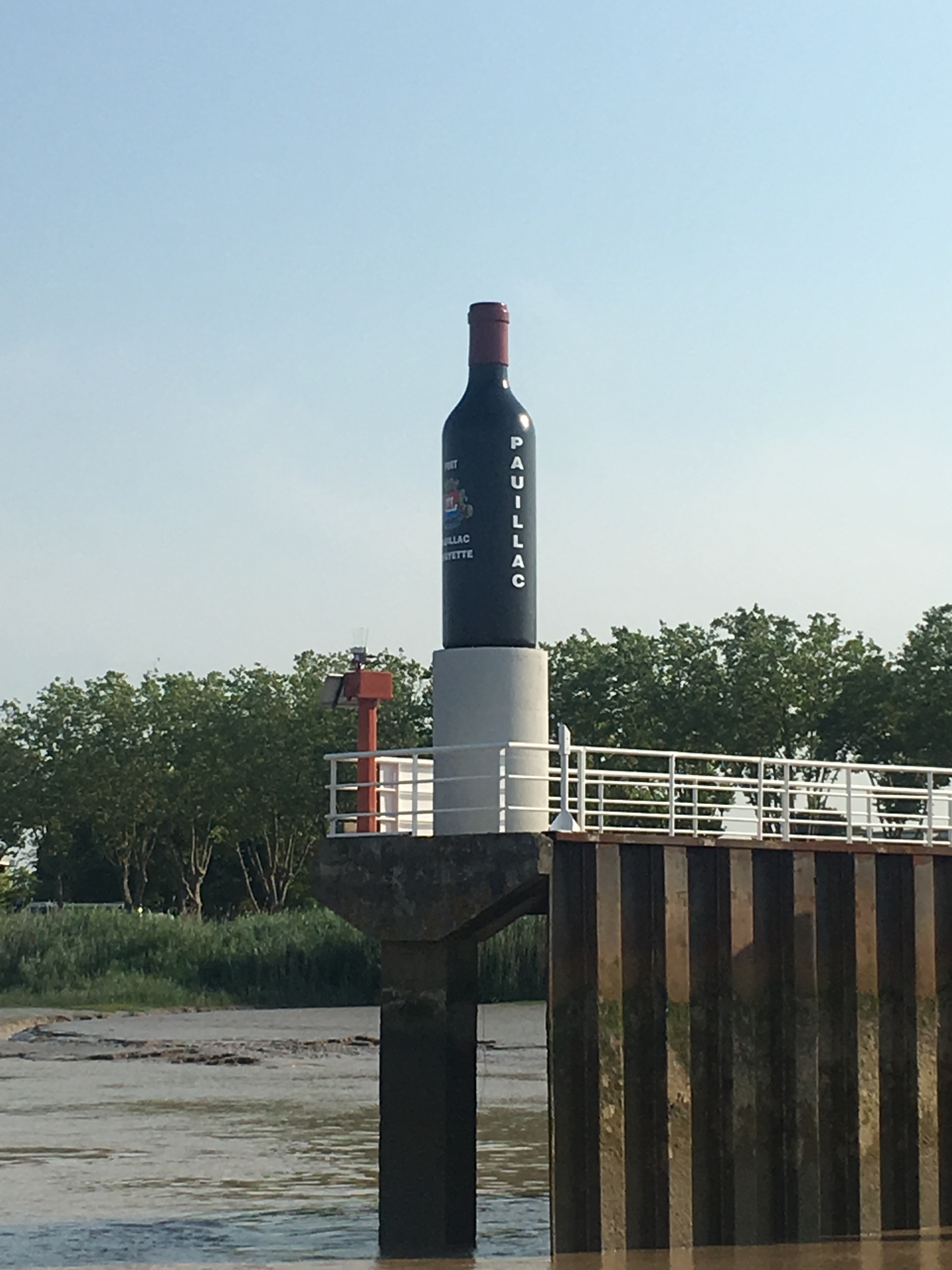
The entrance to the Pauillac harbour
Pauillac turns out to be a very sleepy town, at least outside the tourist season. I stray along the streets and decide that I should go along with my initial plan and rent a bicycle to visit some wineries. I visit the tourist office to ask whether it is possible to get some guided tours. It turns out that the most prestigious ones want to book a month ahead and that you should have a written confirmation. Planning holidays one month ahead is simply not my habit so I continue asking. I am curious on the 1855 classification and want to get to one of the four premier cru in Haut-Medoc. Three of them are located in Pauillac so I have some hopes. Three of them only take visits from “professionals”. I wanted to ask if I did not look like a professional but I guess that the answer had been pretty blunt. To my surprise they were able to book a visit to Mouton-Rothschild the same afternoon. Off-season is often good season!
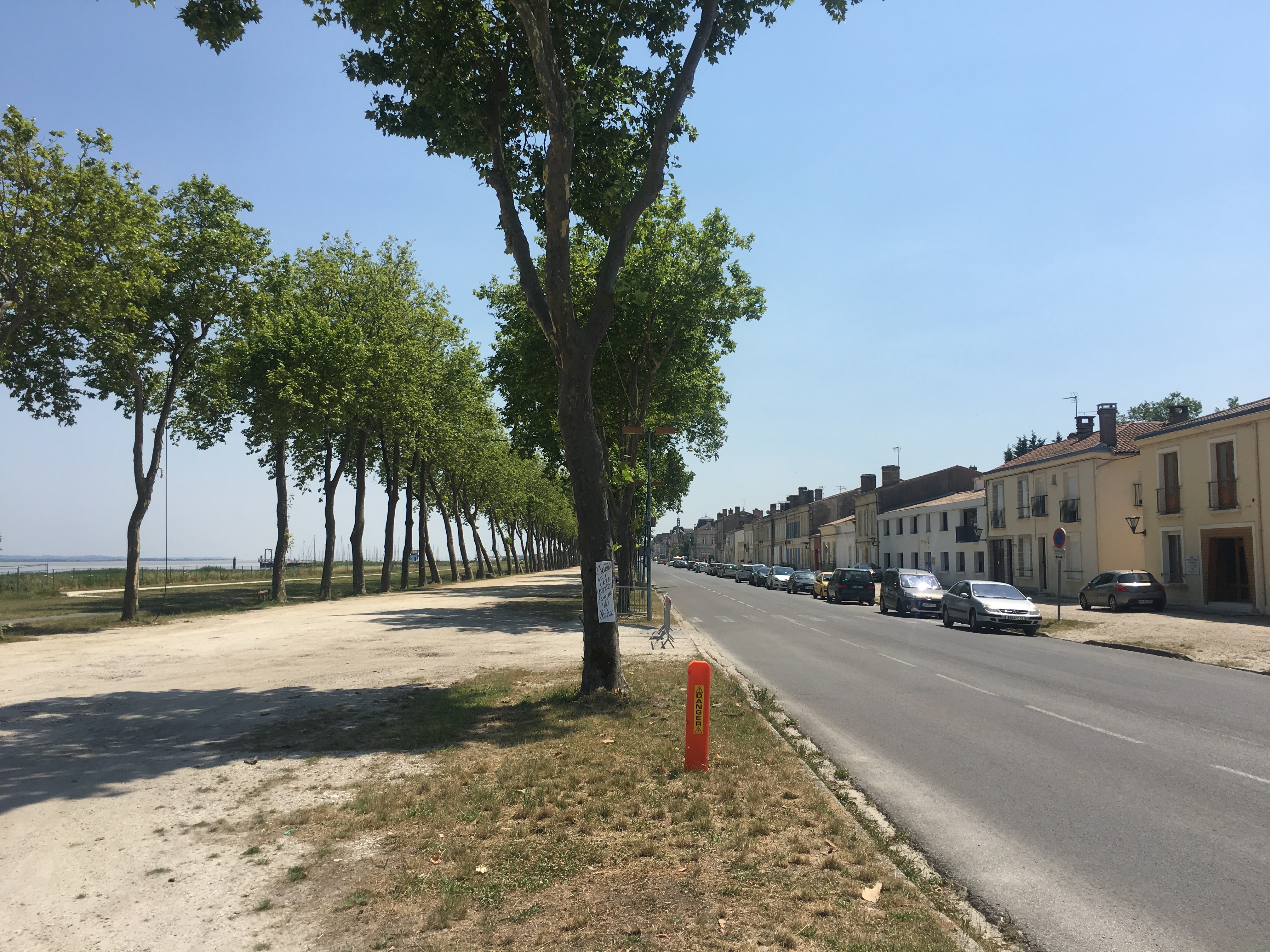
The promenade in Pauillac
They also give me books, maps and directions so I can do my planning. I love these moments when you get to a new place and start decide on how to explore it. Here I am in the middle of all these Chateaus in close distance and a lot to learn about wine. I take a coffee and make a rough plan to stay close to Pauillac the first days and then go down to Margeaux in the southern part later. I also would like to visit Blaye on the other side of Gironde as people told me that it is a beautiful city.
I take a look at Tripadvisor and find out that there should be a really good restaurant just outside town. This restaurant turns out to be a two-star Michelin restaurant and I get so surprised to get a table the same evening so I decide to enjoy a nice dinner there. The food and its display was perfect and along with the setting of the chateau and the vineyard outside the window it made a perfect evening.
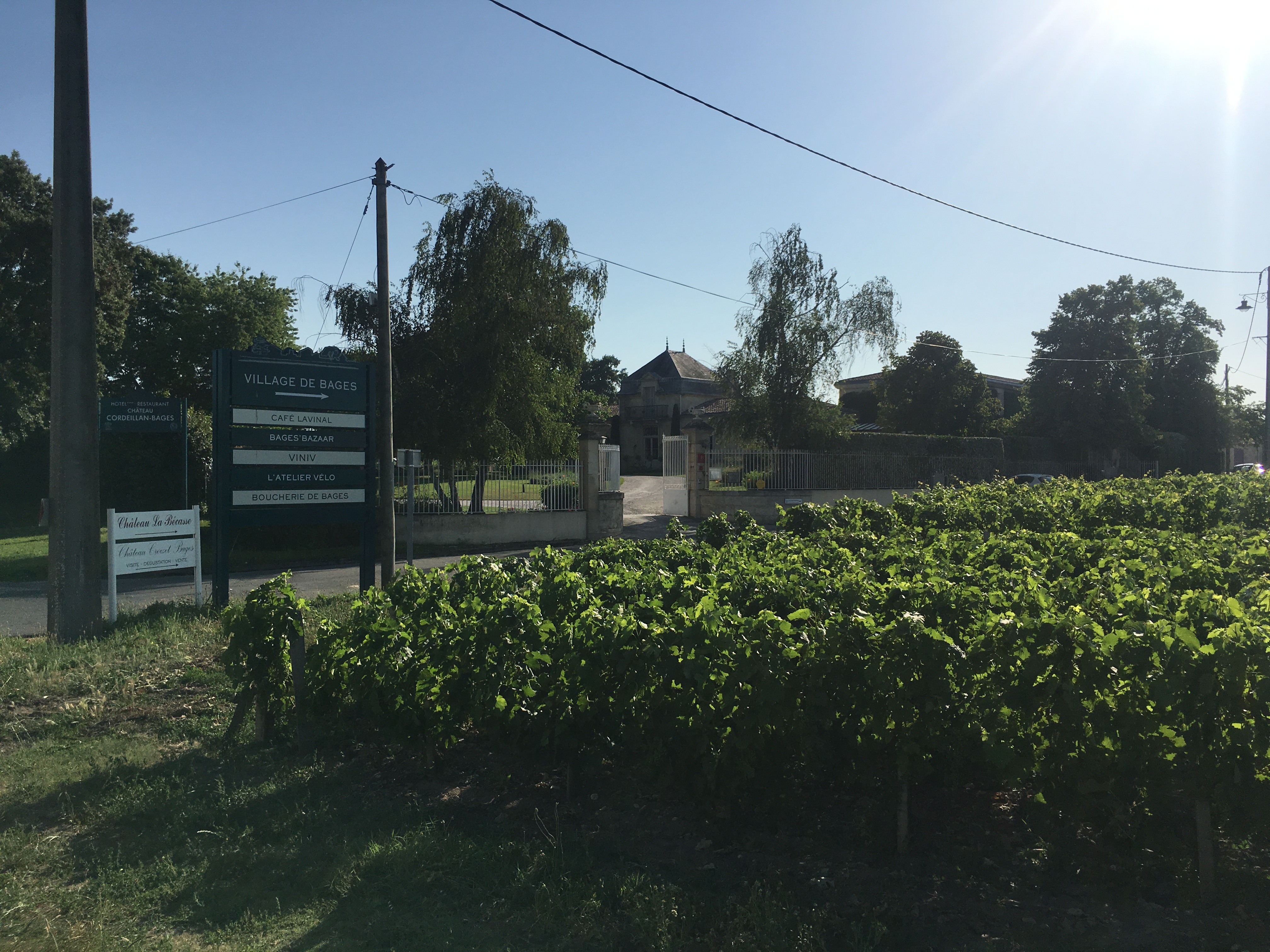
Château Cordeillan-Bages
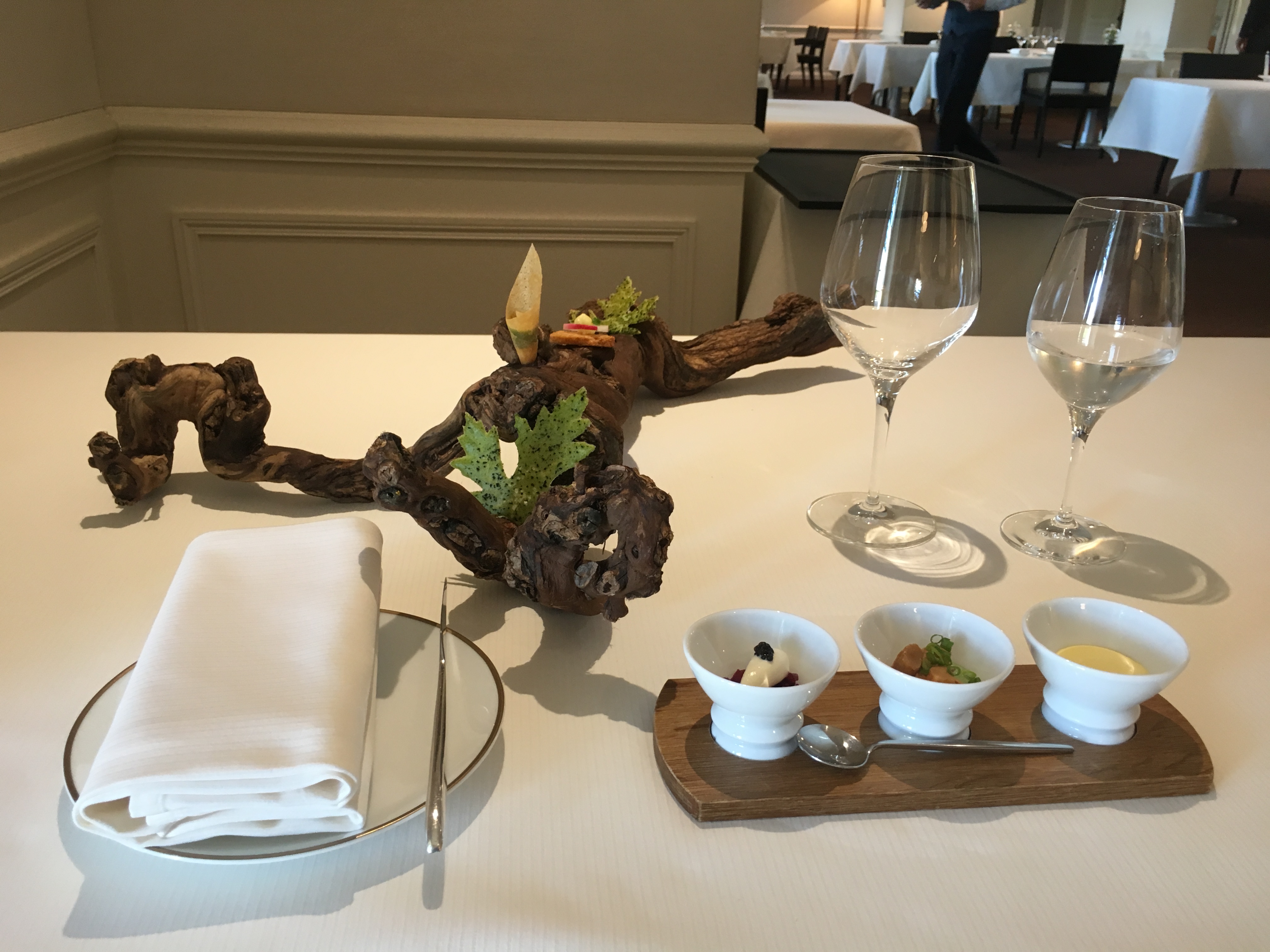
Château Cordeillan-Bages – starter on a vine
I get my bike and start by going north through the wine lands towards Saint-Estephe that is the most northern appellation in Haut-Medoc. Beautiful scenery and nice roads. Fields with vines stretching mile after mile and castles of different styles and sizes scattered in the landscape. No need to stress so I take my time and just enjoy getting lost in the landscape.
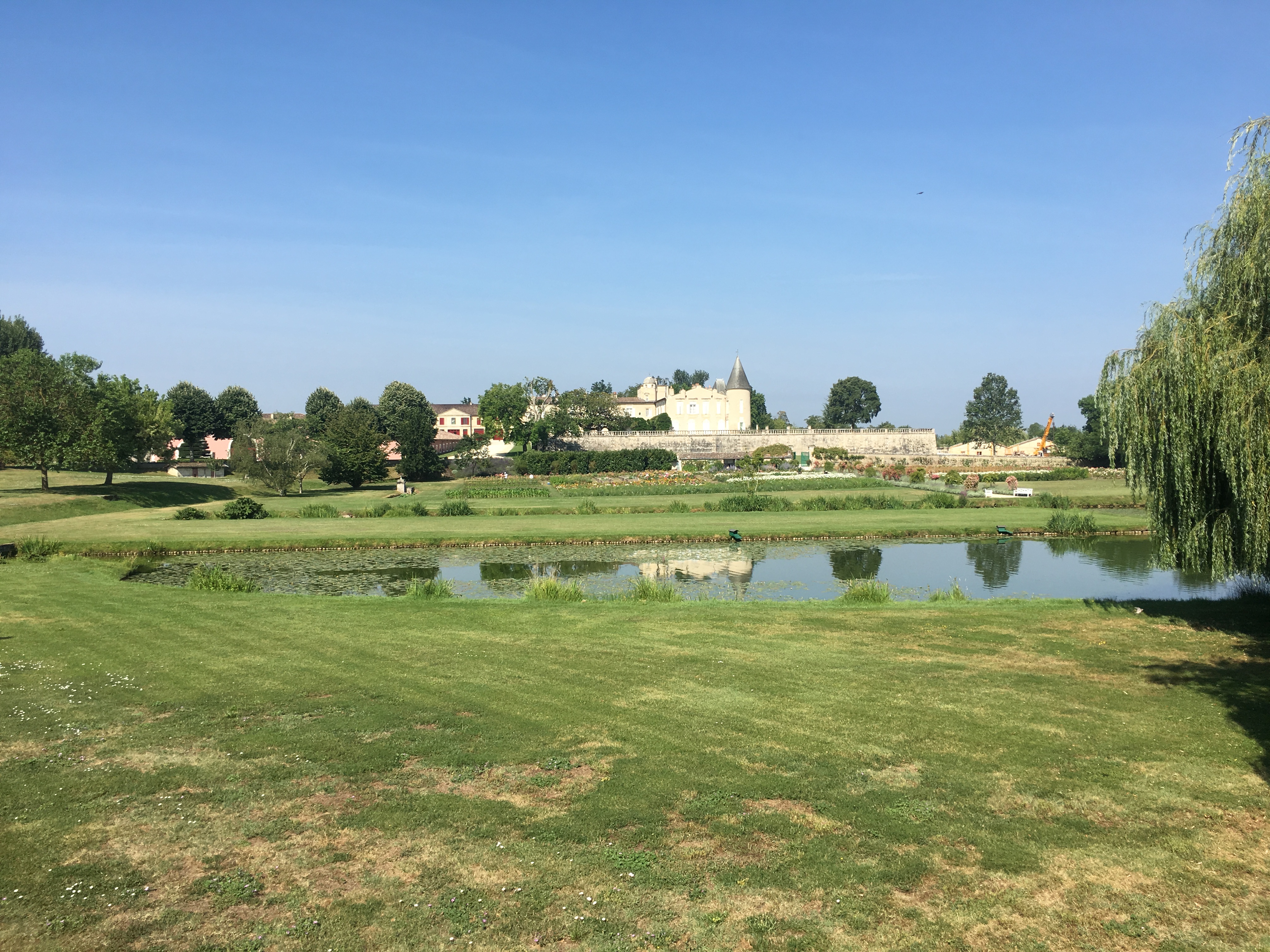
Chateau Lafite-Rothschild – sister chateau of Mouton-Rothschild
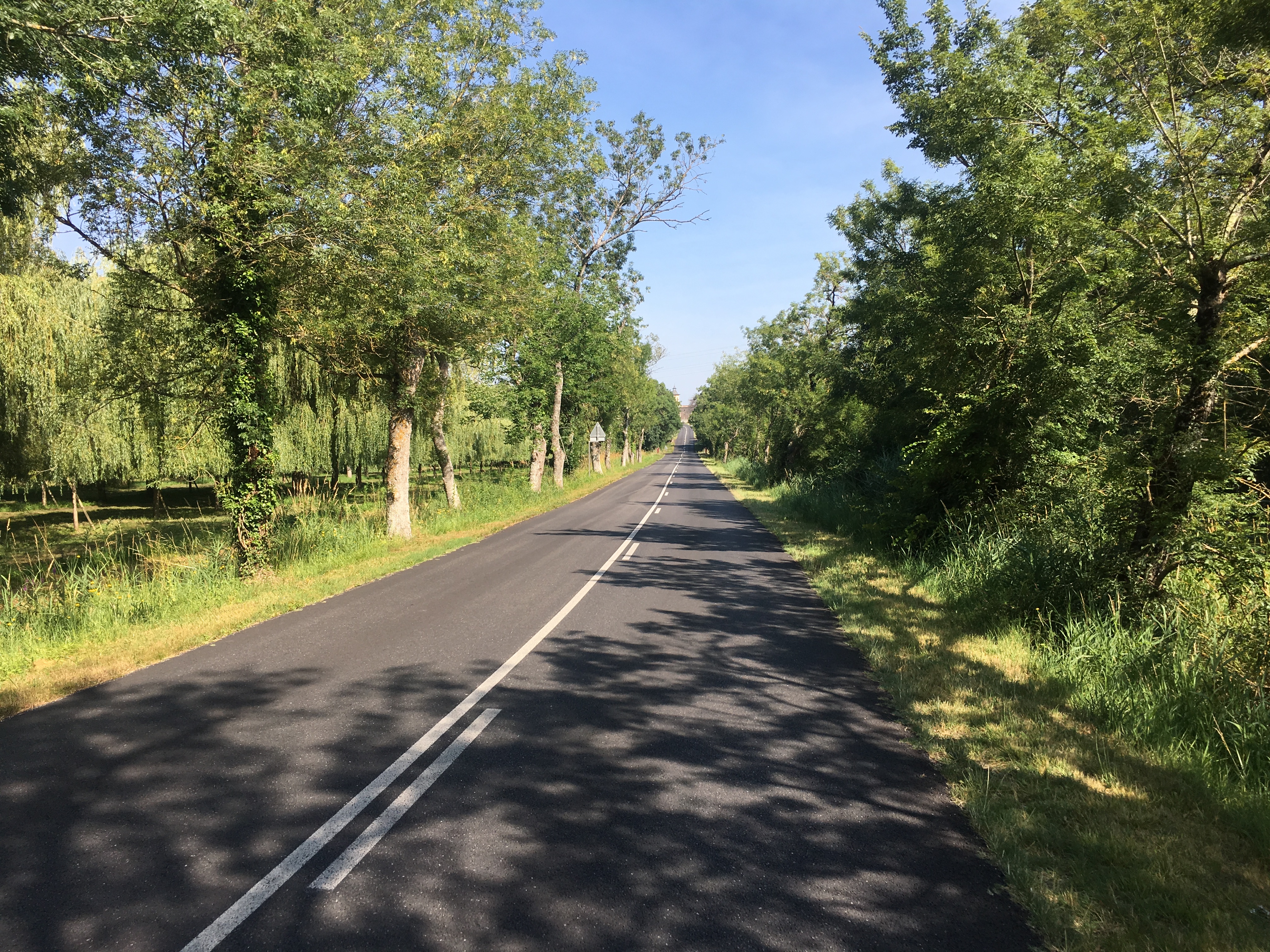
Road to Saint-Estephe
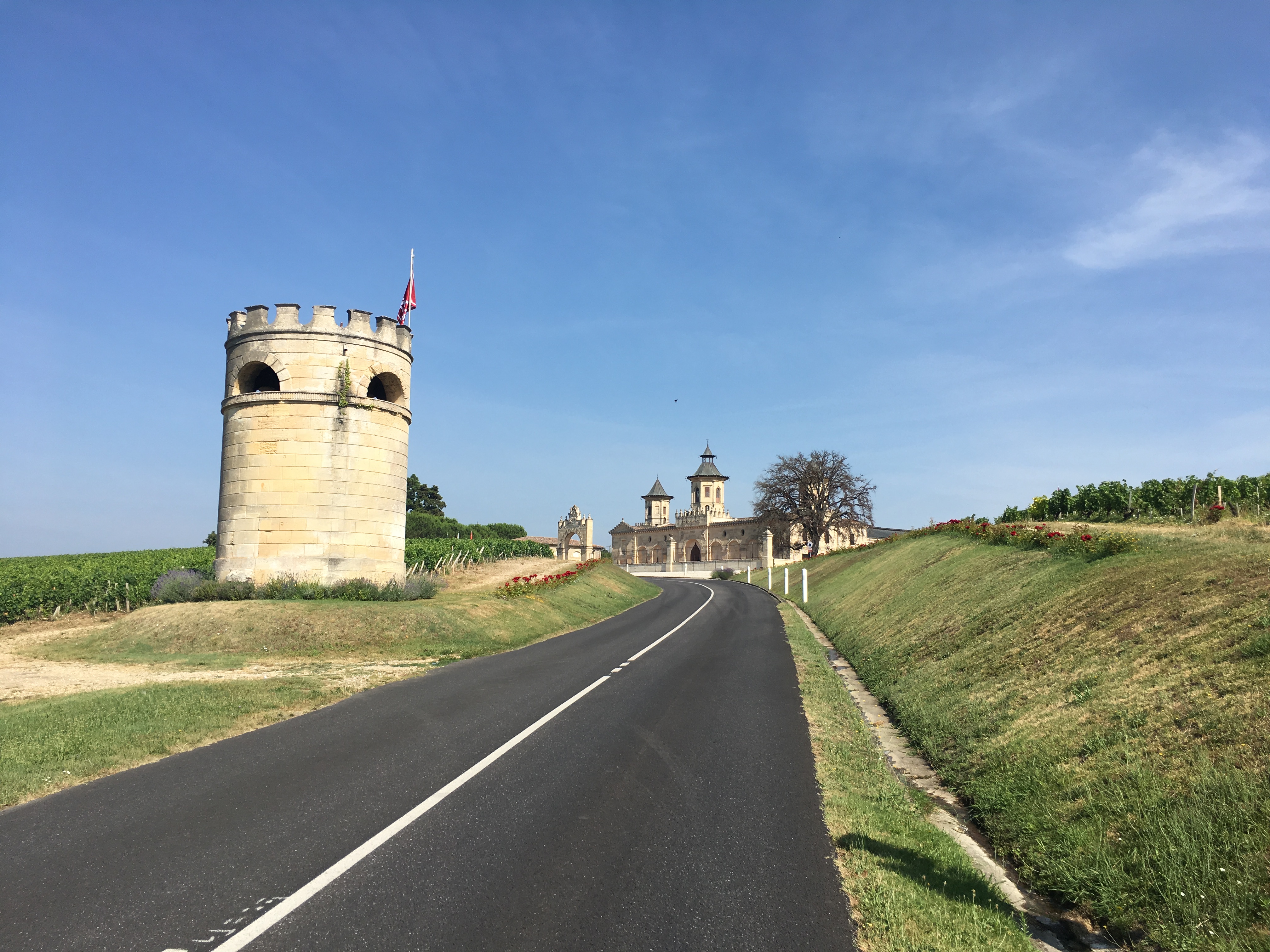
Cos d’Estournel
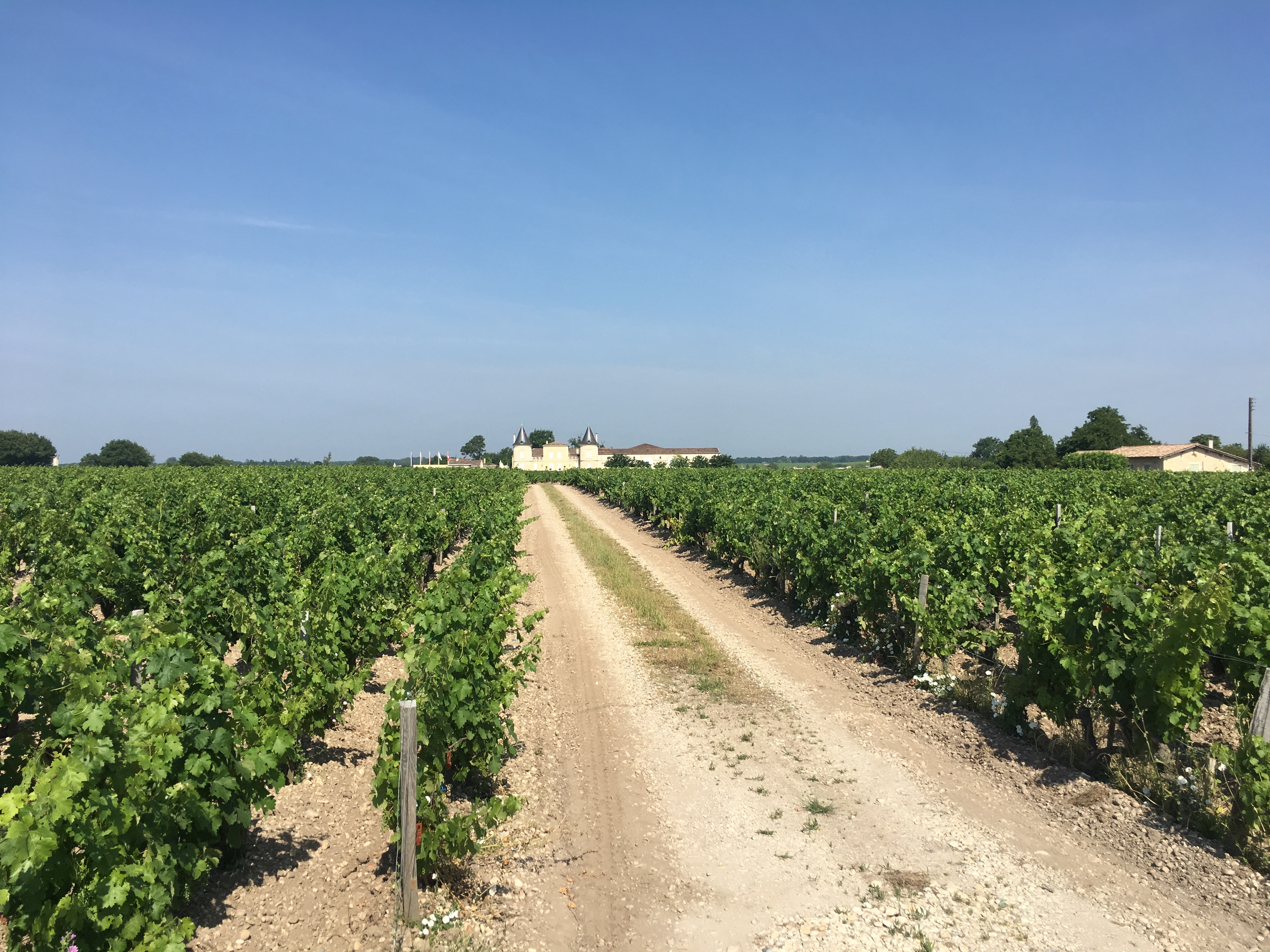
Chateau in the vineyard
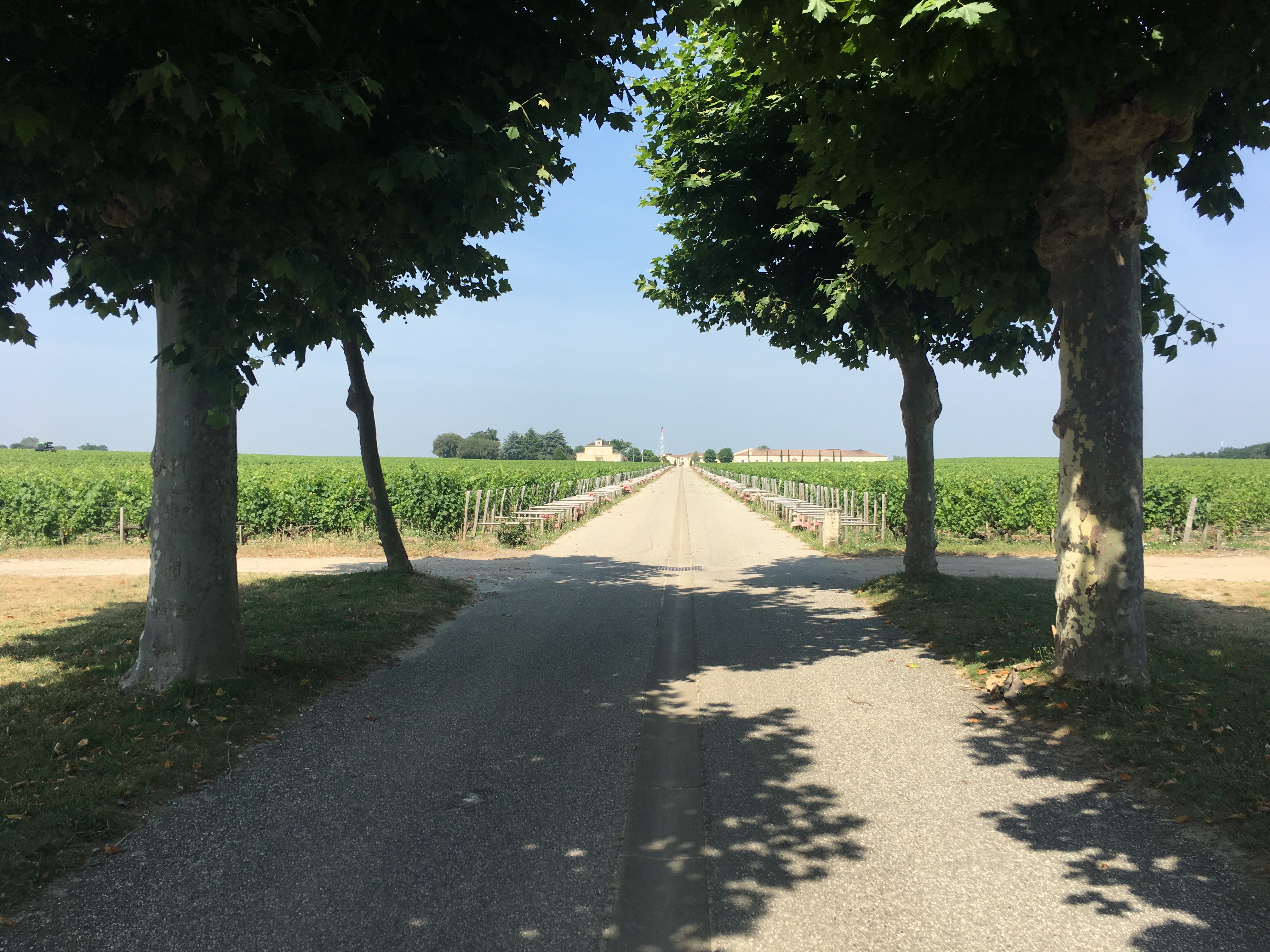
And another chateau
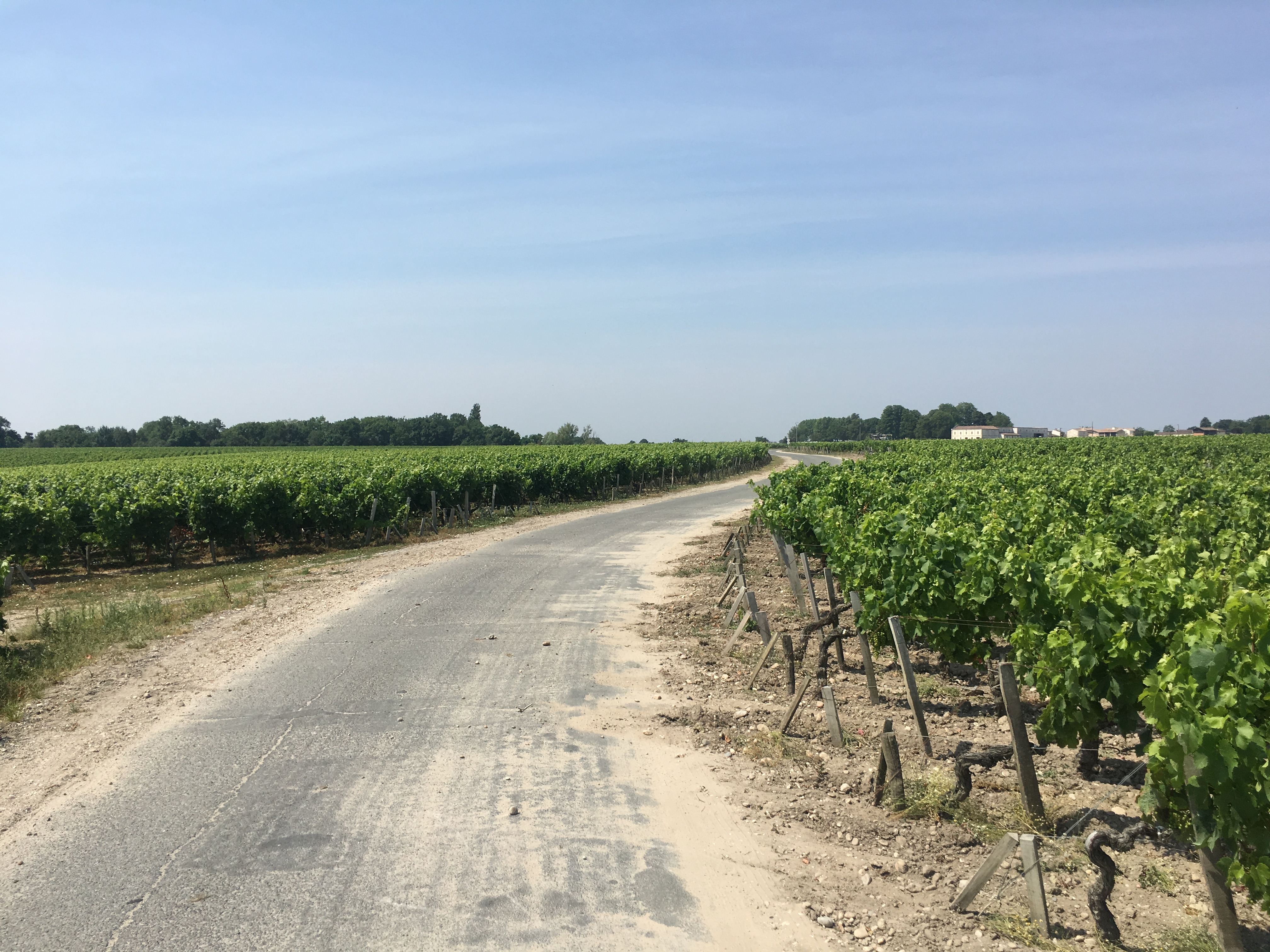
Getting lost on purpose
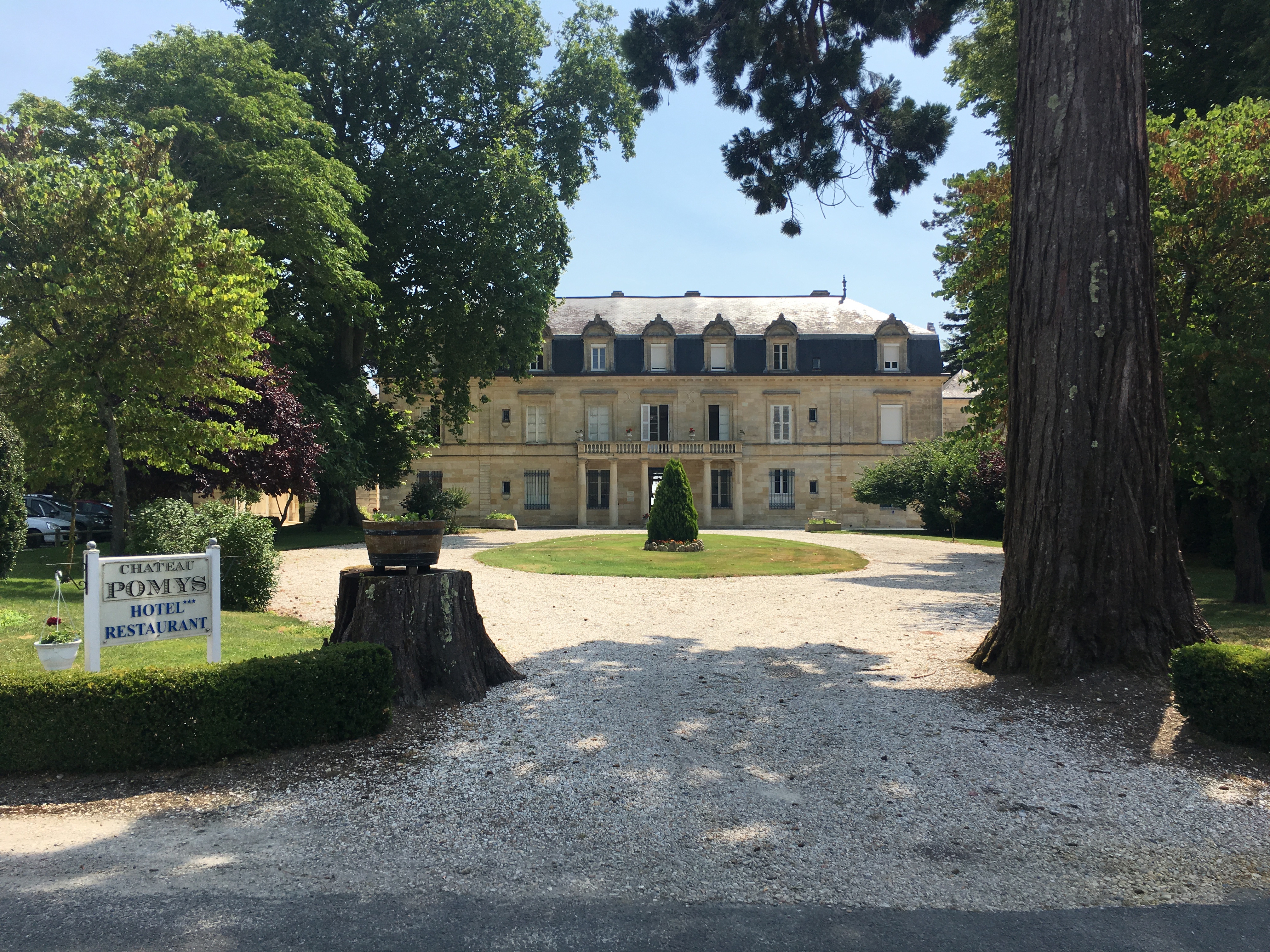
Chateau and hotel
In the afternoon, I arrive to Chateau Mouton-Rothschild. It is a nice classy place but I expected more of the exterior. I went by Chateau Lafite-Rothschild on the way and that was a huge chateau. As expected, the reception is very formal and it is obvious that they want to keep an exclusive status on everything. The guide – dressed in a suit even if it is extremely hot outside – start by telling more about the 1855 classification. This classification was set in 1855 for Bordeaux wines on order from Napoleon III for the world exhibition. The classed wines was divided in five crus and has not changed since then. Except for Mouton-Rothschild that became a premier cru in 1973. The guide emphasizes that this has nothing to do with the power possessed by the Rothschild family but with the quality of the wine and the 1855 requirement that there should be an actual chateau on the premises. Regardless of background, this reclassification to the best of the best must naturally have a great impact of the possibility to set their own prices and the tour confirms that cost control has not been the prime focus. It is interesting that even the most conservative of rules can be bent if you have the power and perseverance to do so.
We continue to the new winery building that is intended to implement concepts from the theatre with the vats on the scene. A very neat production facility with impeccable order.
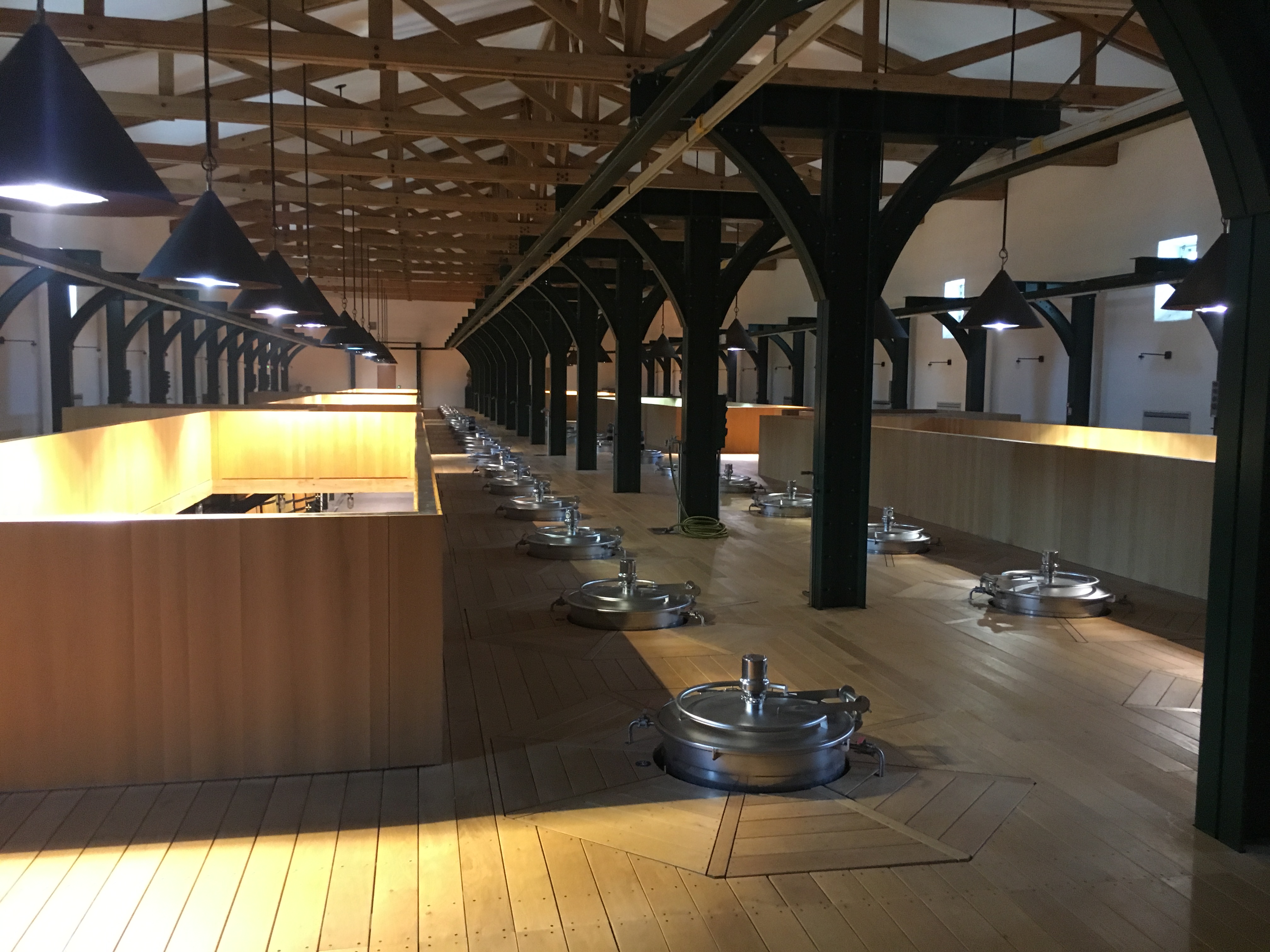
Mouton Rothschild – the theatre
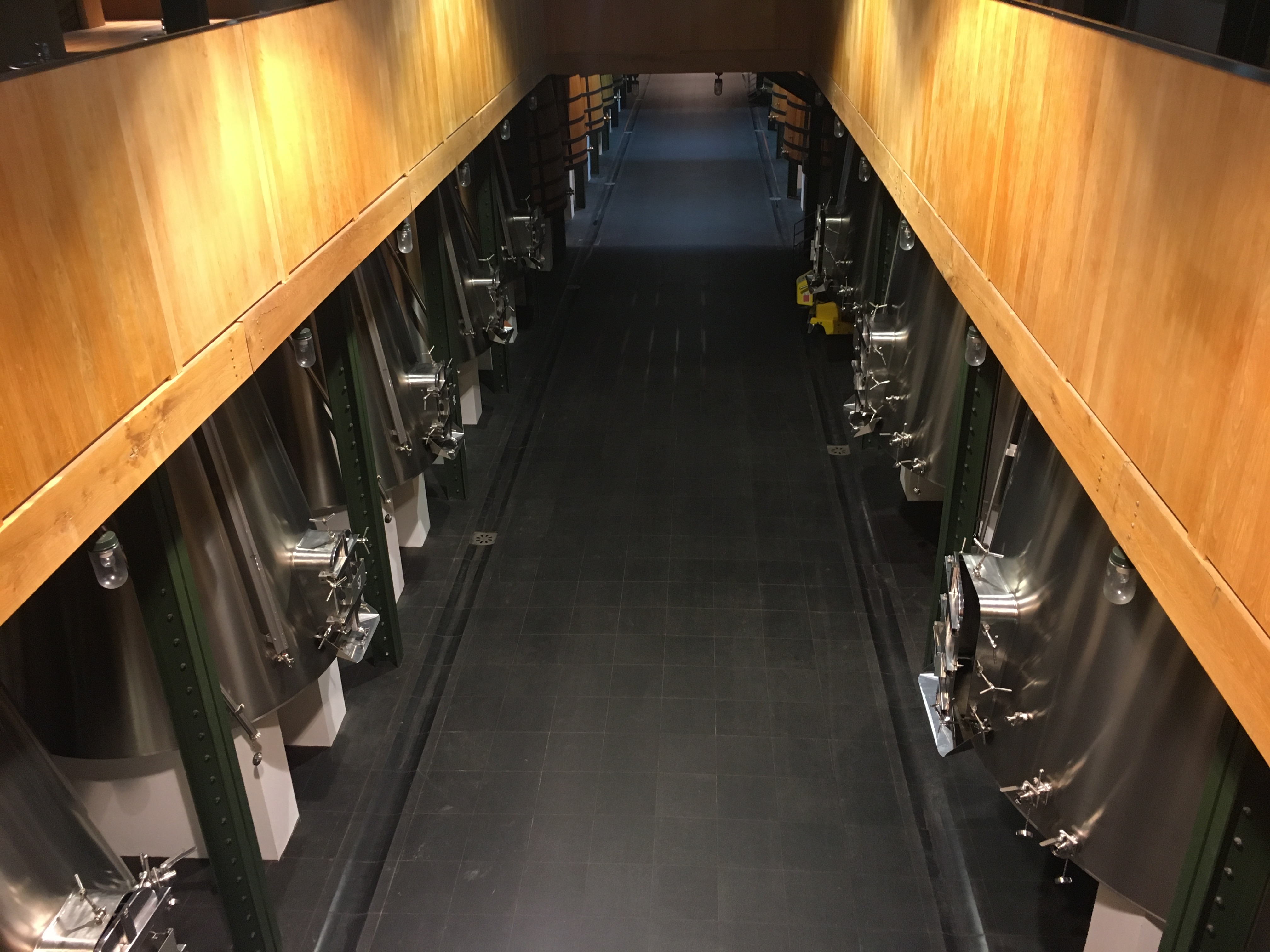
Mouton Rothschild – Vats on stage
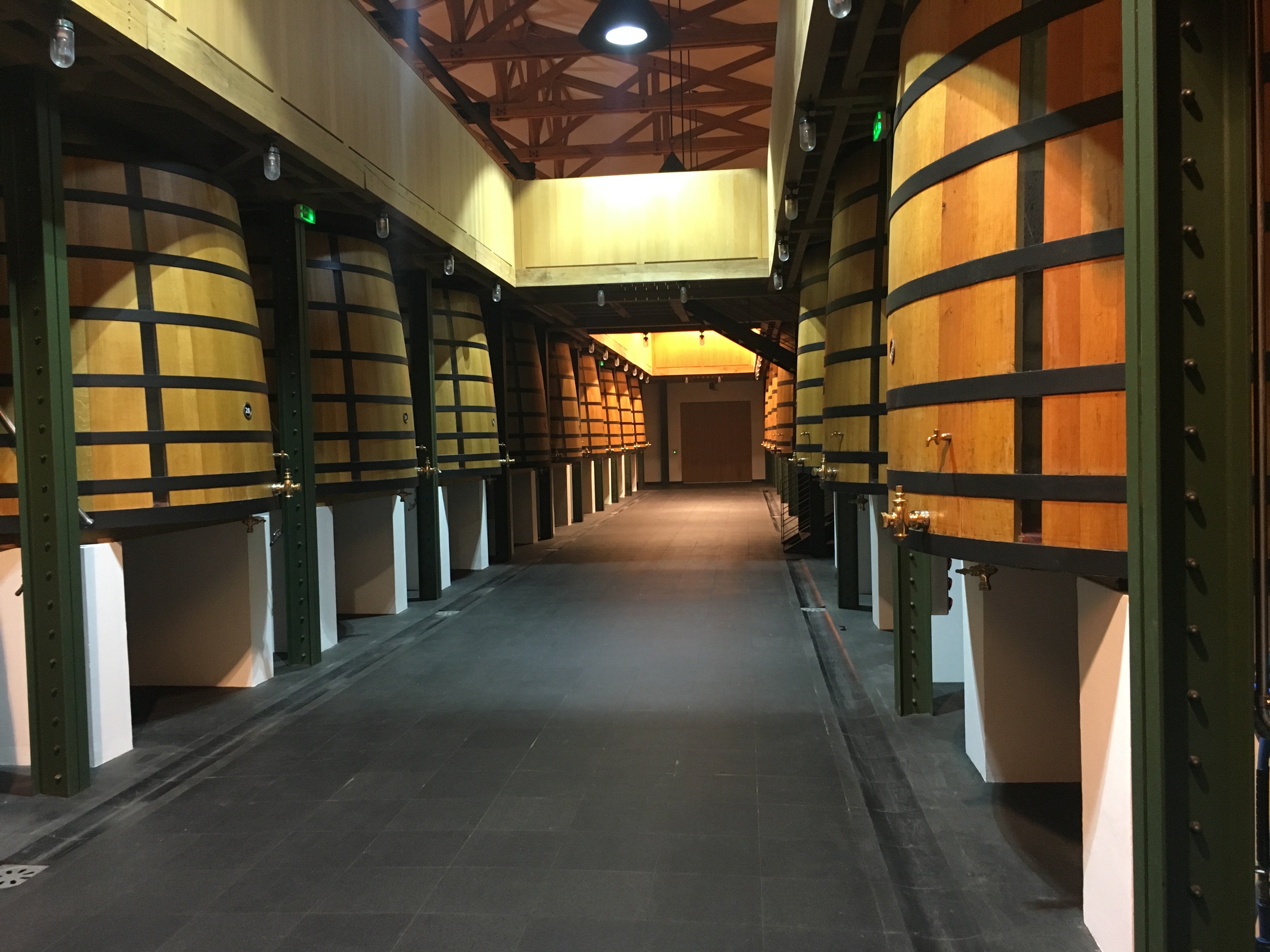
Mouton Rothschild vats of French oak
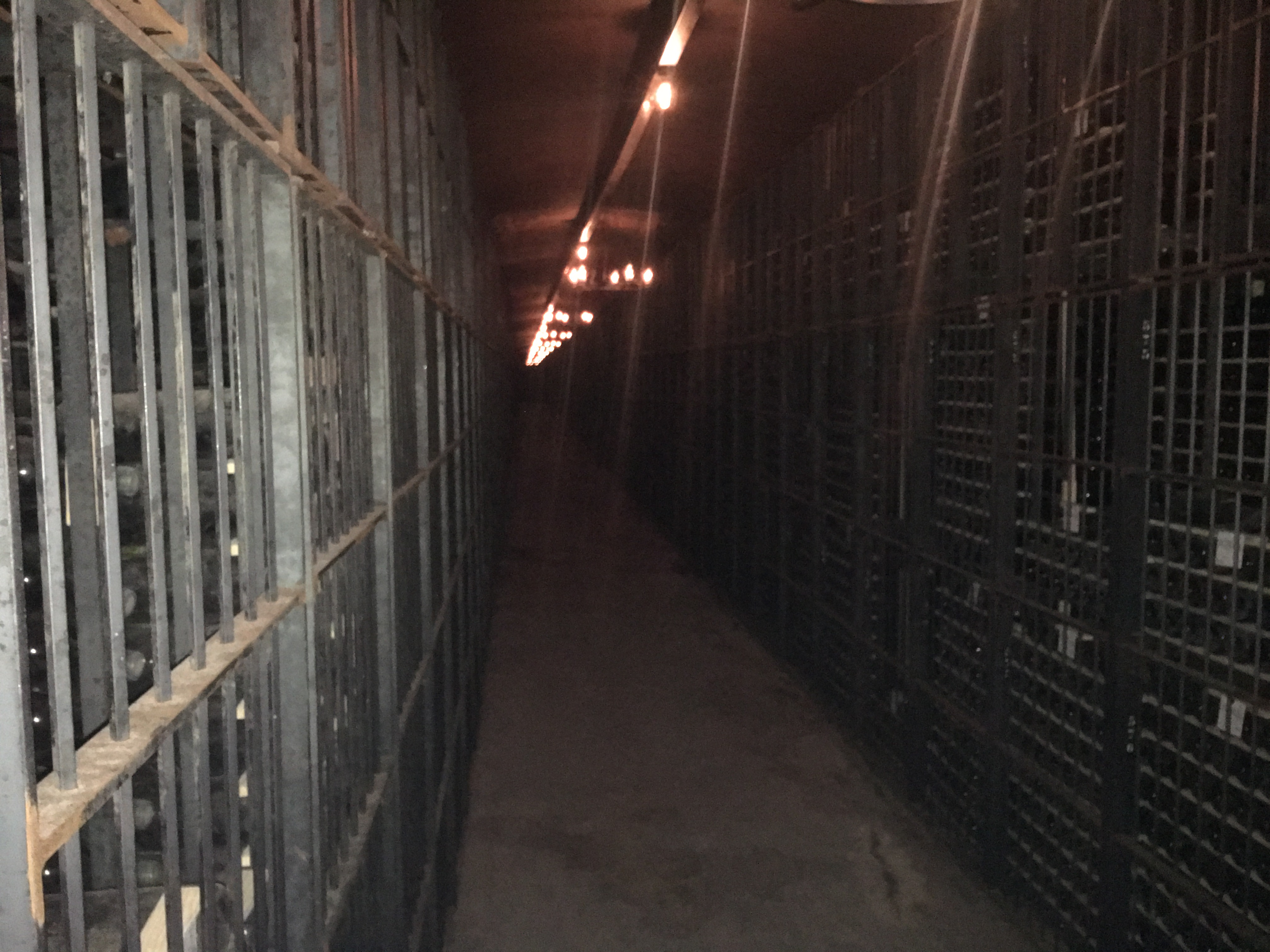
Mouton Rothschild – Wine cellar for really old wines
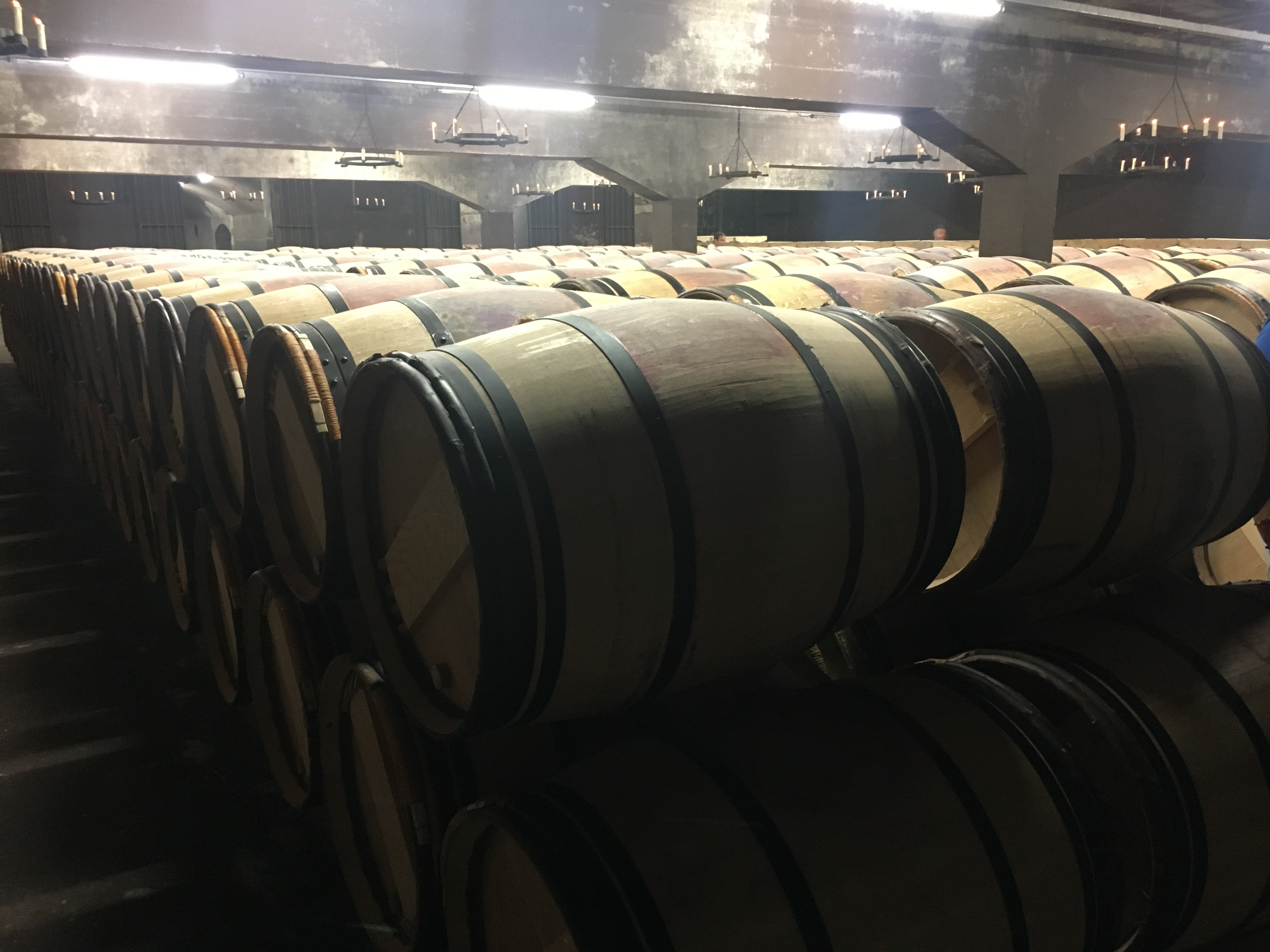
Mouton Rothschild – barrels
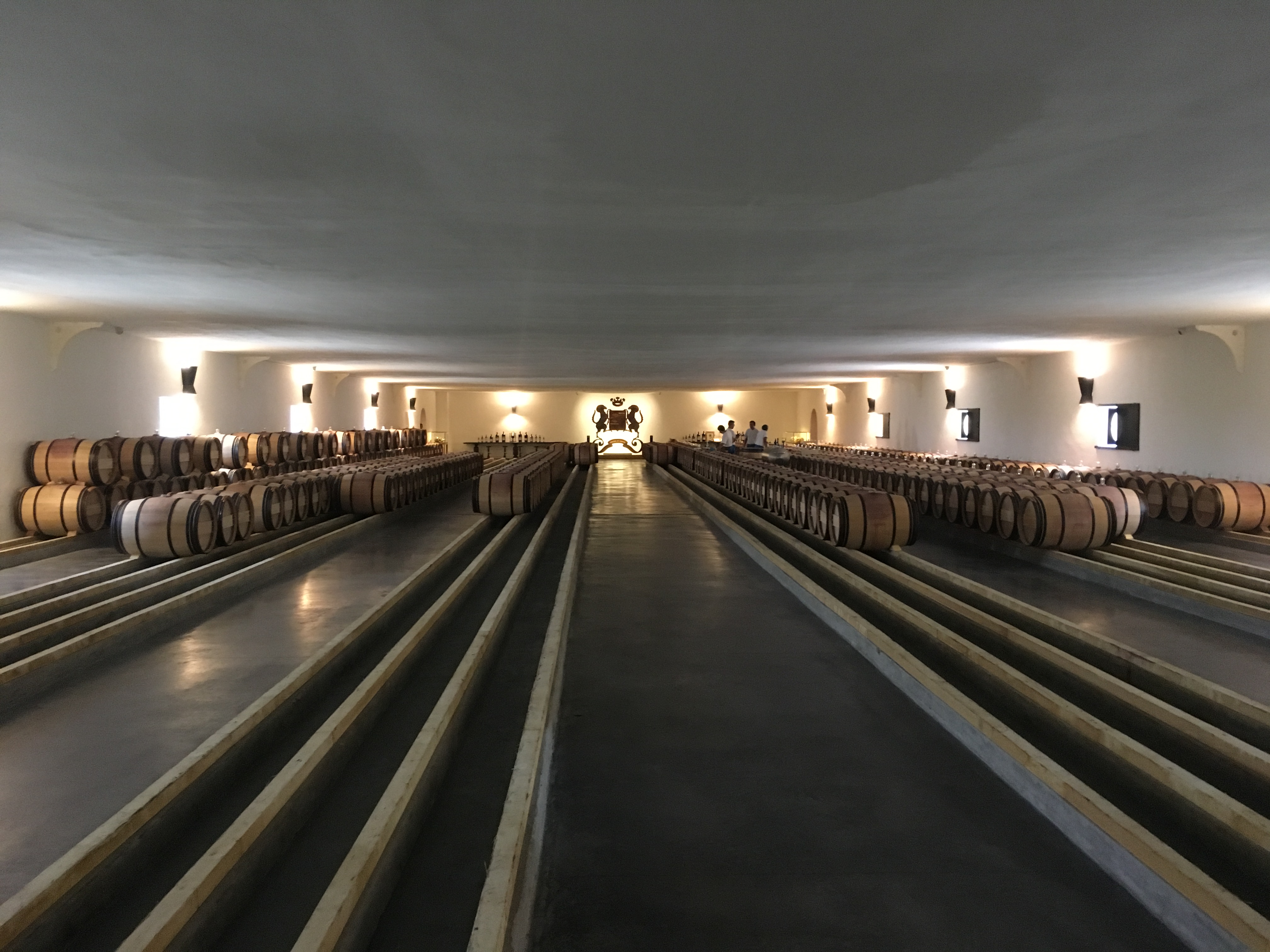
Mouton Rothschild
There is also a museum but photos is not allowed. It contained a lot of artefacts ranging from roman time statuettes to gifts by different royal families and political leaders. It has nothing to do about the wine but the family history, heritage and connections to political leaders and other establishments take up a lot of the focus of the tour.
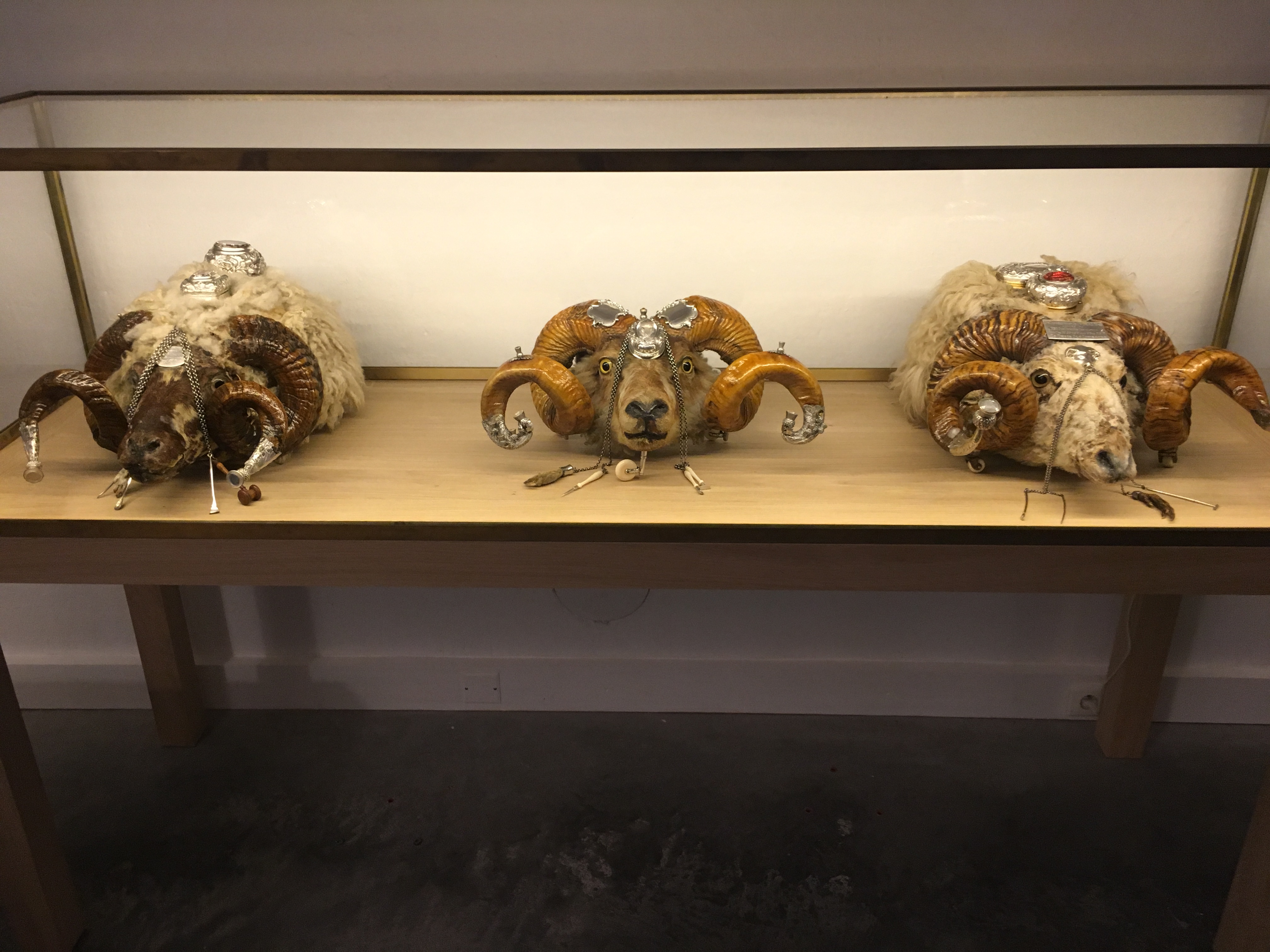
Mouton Rothschild – gifts from Scottish Army (!)
We end with an interesting tasting session with two of their less famous wines from other chateaus (Chateau Clerc Milon and Chateau Armailhac) together with their flagship – a Mouton Rothschild from 2007 for 650 EUR per bottle. The wines from the good years of 2009 and 2010 comes at 1200 EUR…. Each year has a new label from a chosen artist where some has caused debates.
What makes the tasting very interesting is that one of the other visitors have a private guide who turns out to be a wine broker. Besides sharing his tasting experience, he also gives his insight of this tricky industry. As an example, brokers and merchants try a very young wine just aged some months – the Primeur– that is the base for negotiations. The production is then often priced and sold at this stage which must be a huge risk since these wines normally comes at their best right after at least 10 years. For some of the prestigious wines such as this there will probably always be a market but this goes for all the other wines as well. Interesting and fascinating trade.
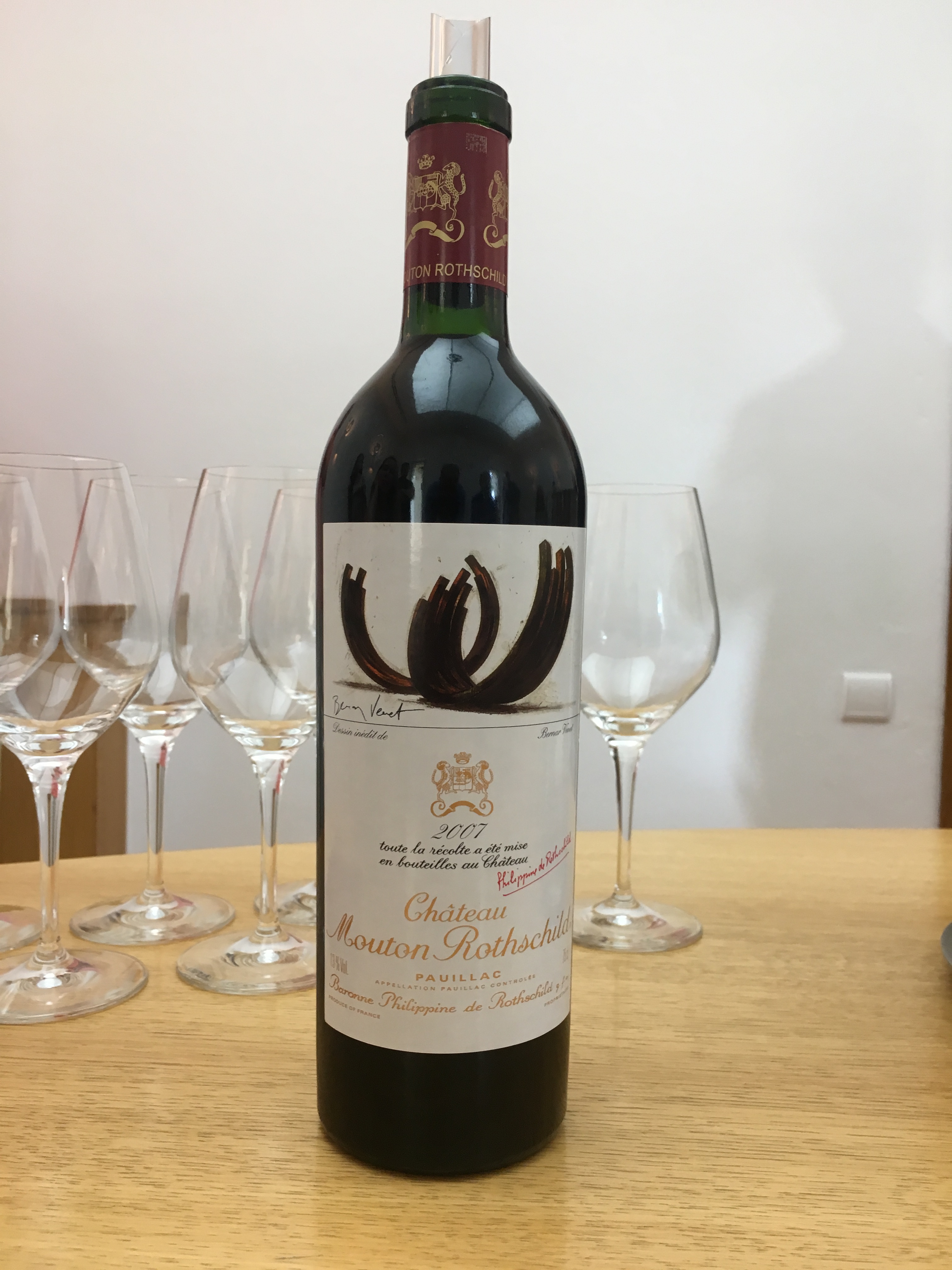
Mouton Rothschild – tasting the wine
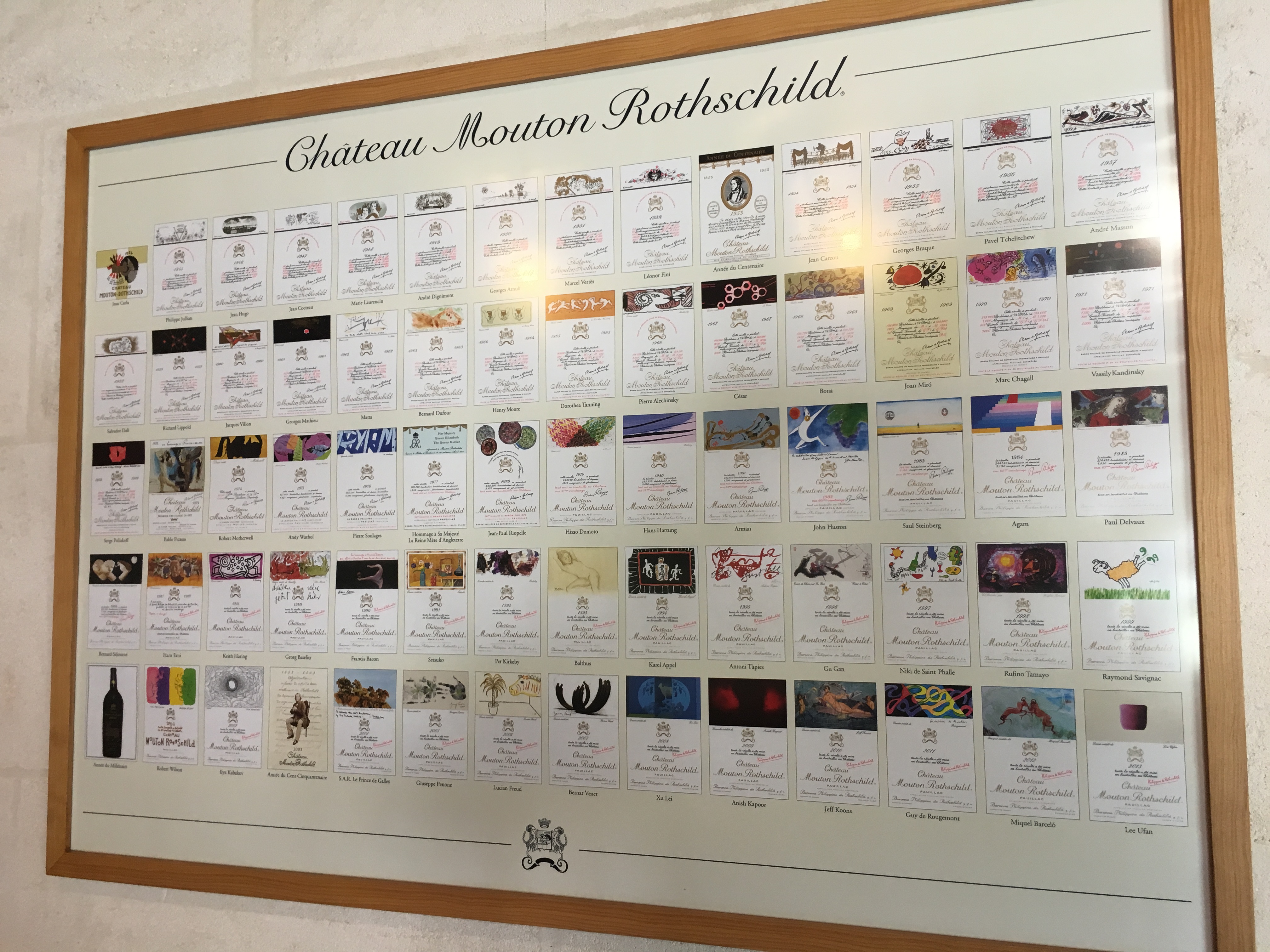
The yearly labels for Mouton Rothschild
I met a couple from upstate New York at the tasting and we decided to go for a dinner together in Saint-Julien which is the next city south from Pauillac. They had reserved a table at a restaurant conveniently named “Le Saint-Julien” so I take the bike back to the boat and have a shower before I bike the 15 minute ride. I arrive early so I take a quick tour of this small place and decide to go back when the chateaus are open. The evening becomes very nice talking on life and work balance and how to design your life to make the most of it.
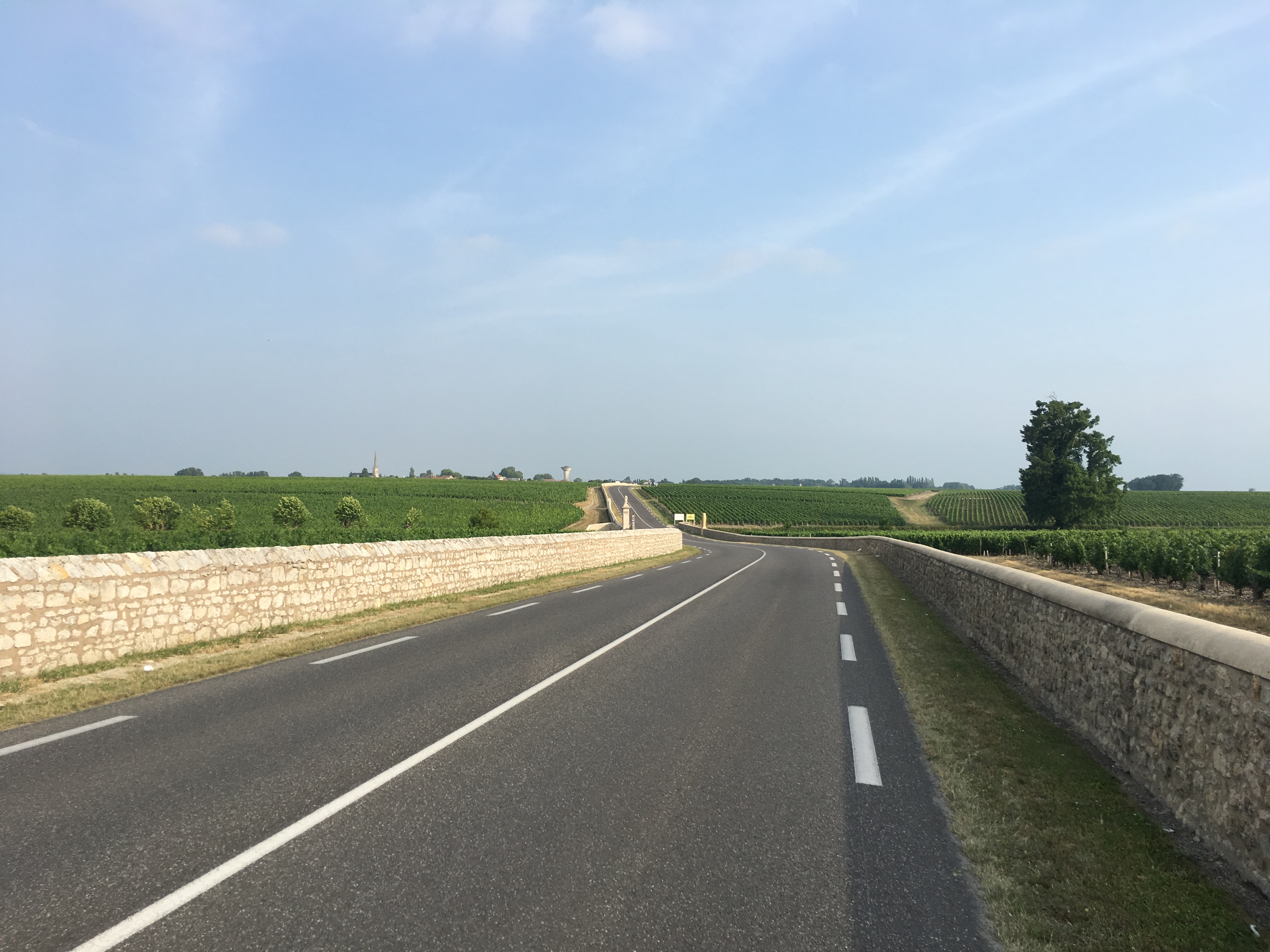
On the way to Saint-Julien

Road to Saint-Julien harbour
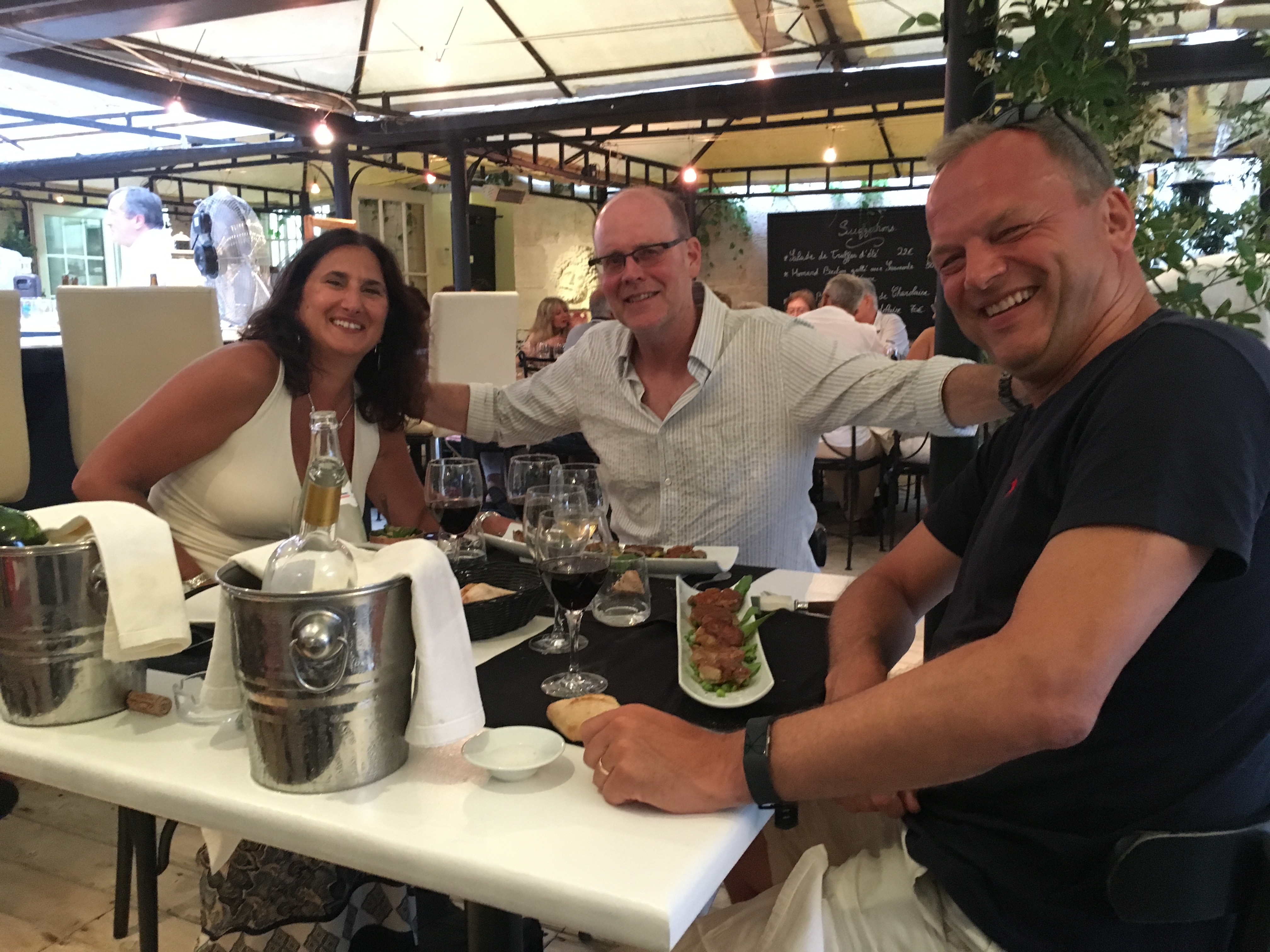
Dinner with my new american friends
Next day I decide to go south. I pass chateau after chateau. Vineyards everywhere and a good peaceful setting. South of Saint-Julien, I stop by Chateau Bechevelle described as “Versailles of Medoc”. I manage to squeeze into the next English group at 11 and since I am an early bird, this gives me plenty of time to go down to the river and relax. I find a peaceful place down in the former harbour looking out of the Gironde, sit down, and enjoy life.
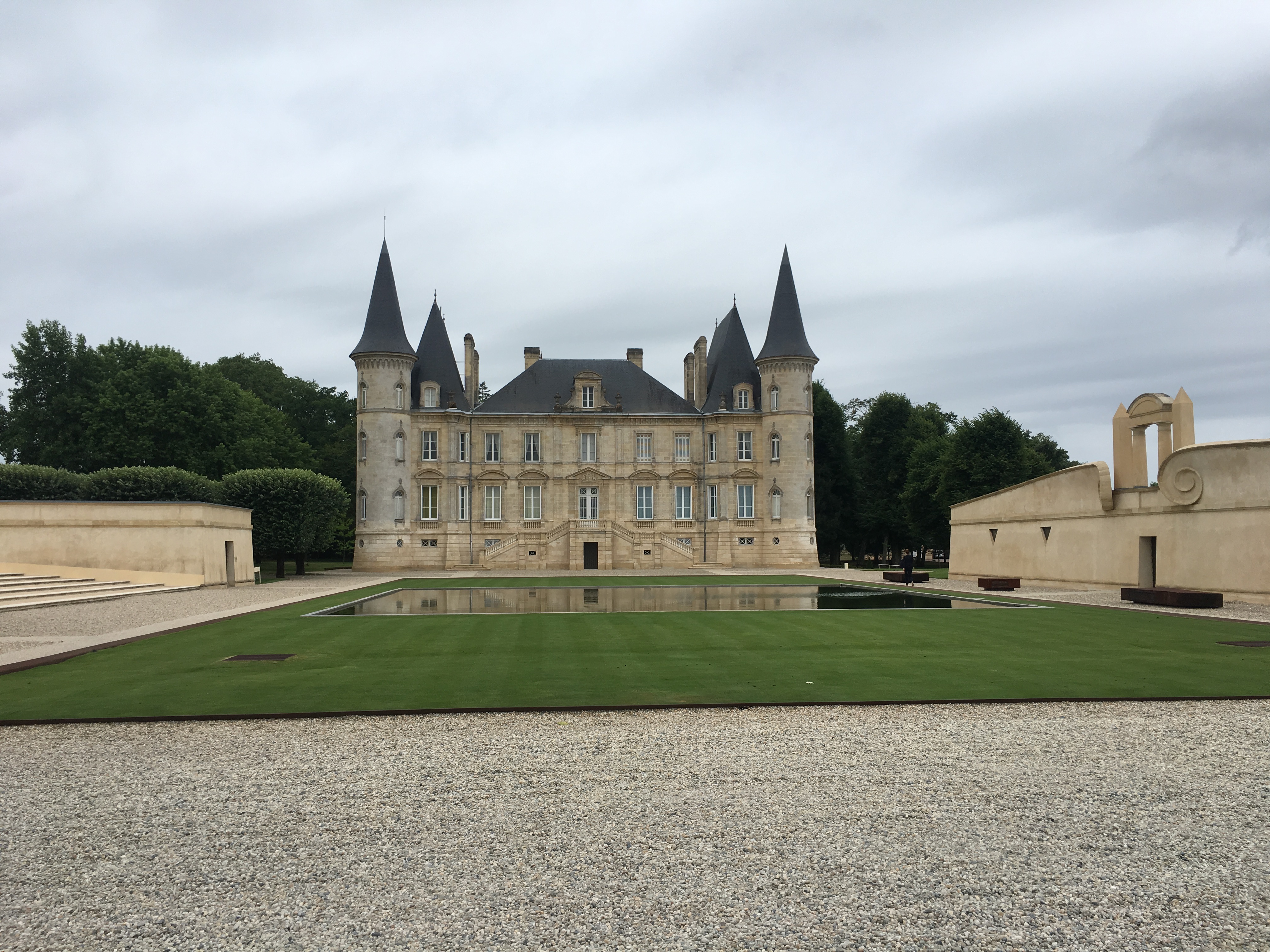
Château Pichon Longueville
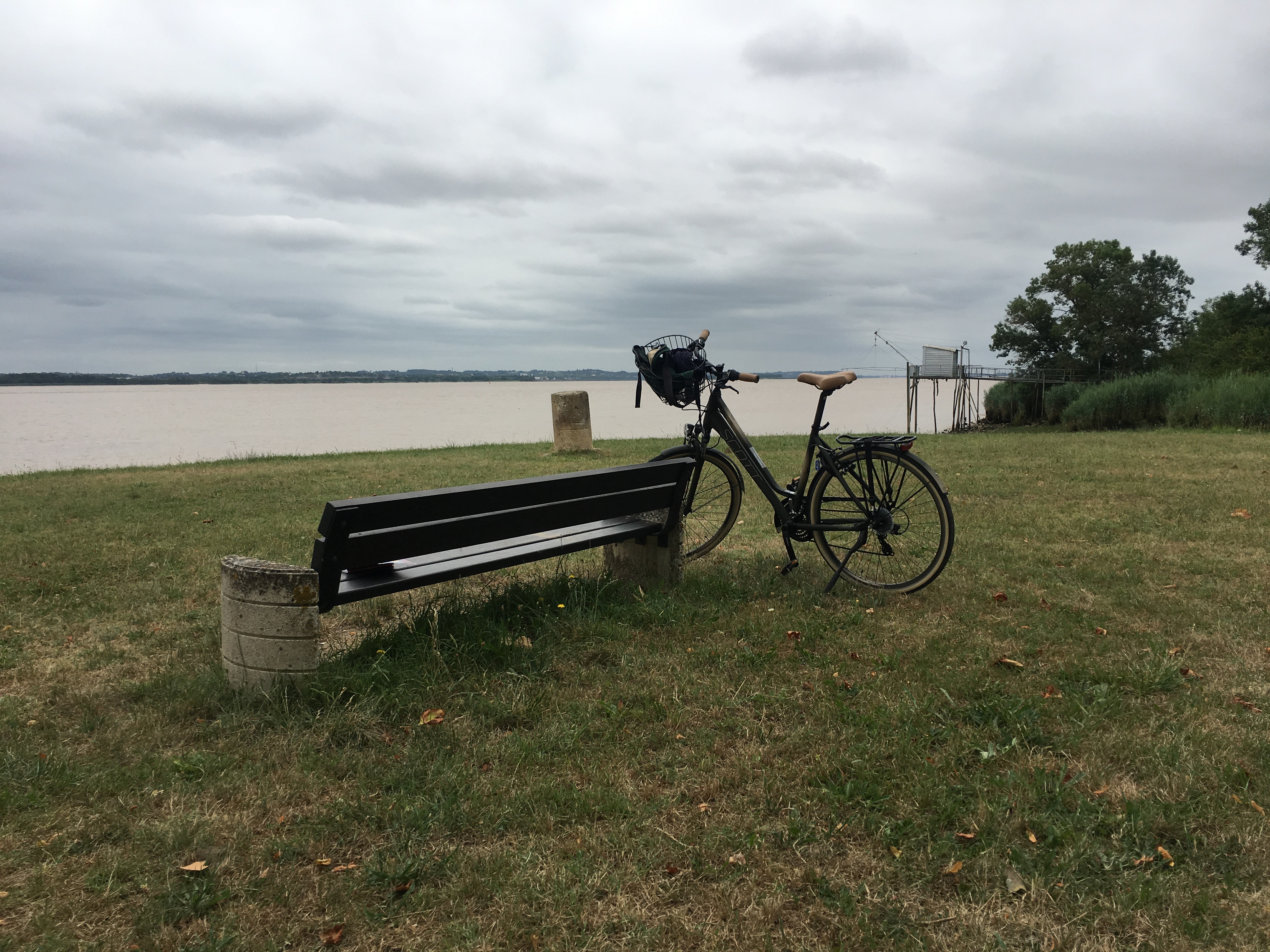
Having a peaceful time down at Gironde in old Bechevelle harbour
The tour of Bechevelle is more relaxed and more concentrated on the wine even if it is natural to start with the history of this castle that is one of the older. The name is supposed to derive from the fact that the sailors lowered the sail in respect for the Admiral XXX who lived in the castle and this gives their logotype its meaning – a ship with lowered sails. This is another 1855 Classé chateau, which means that costs has not been spared. Good guide though, professional tour but also a pleasant feeling and a wine that sits well on my palate. After the tasting, I take a walk in the park and enjoy the magnificent castle.
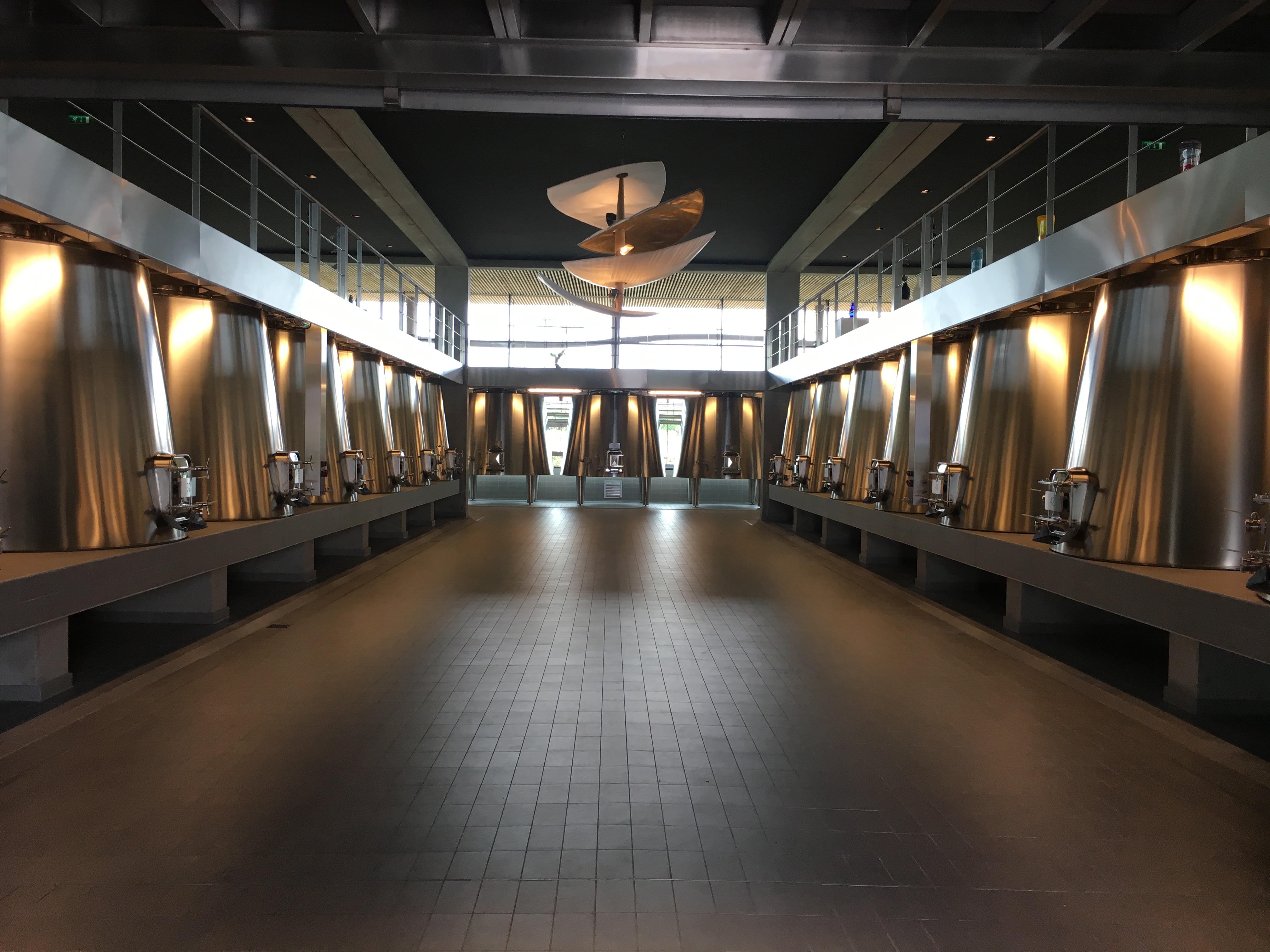
The new facilities at Chateau Bechevelle
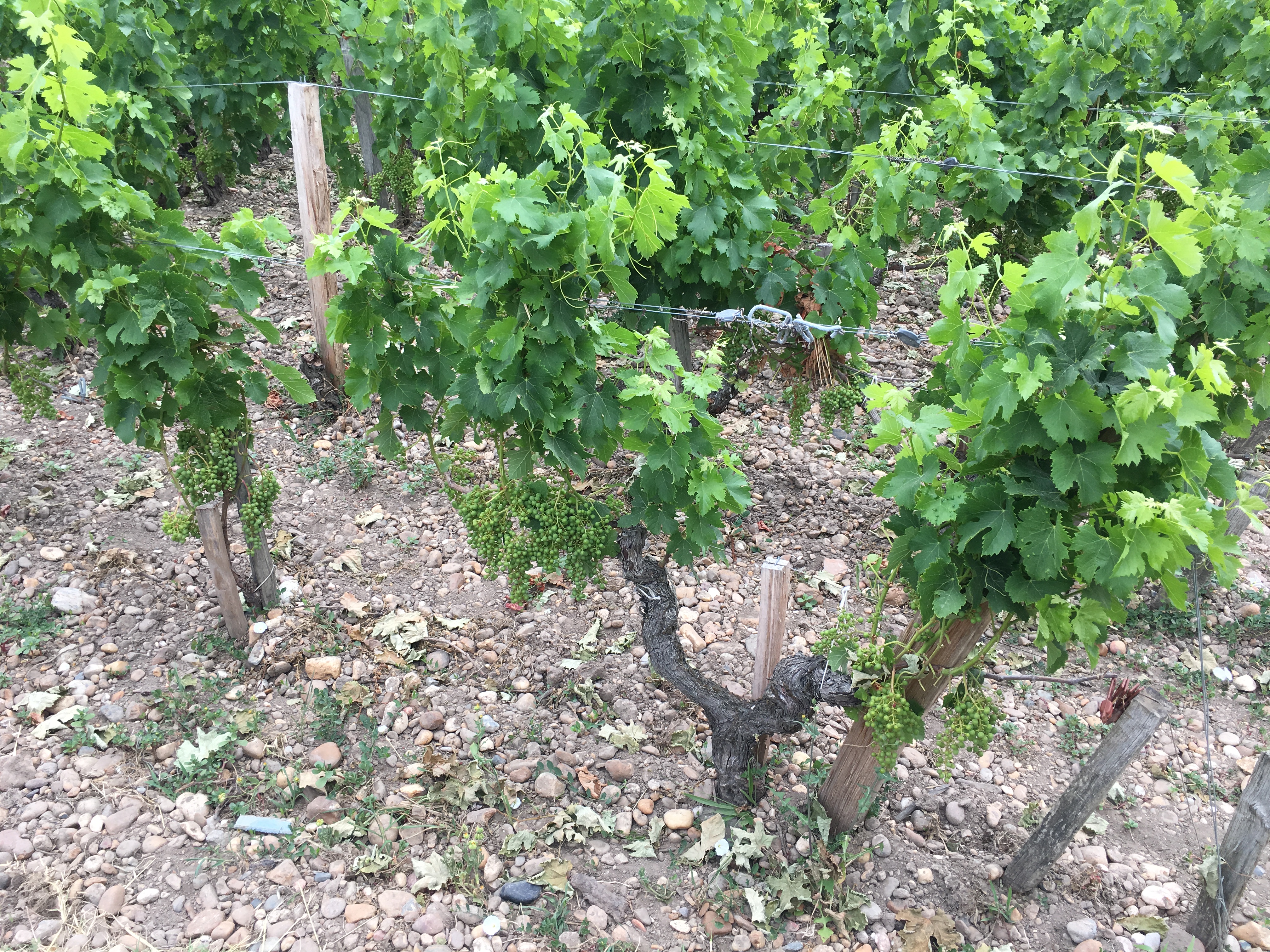
Vines
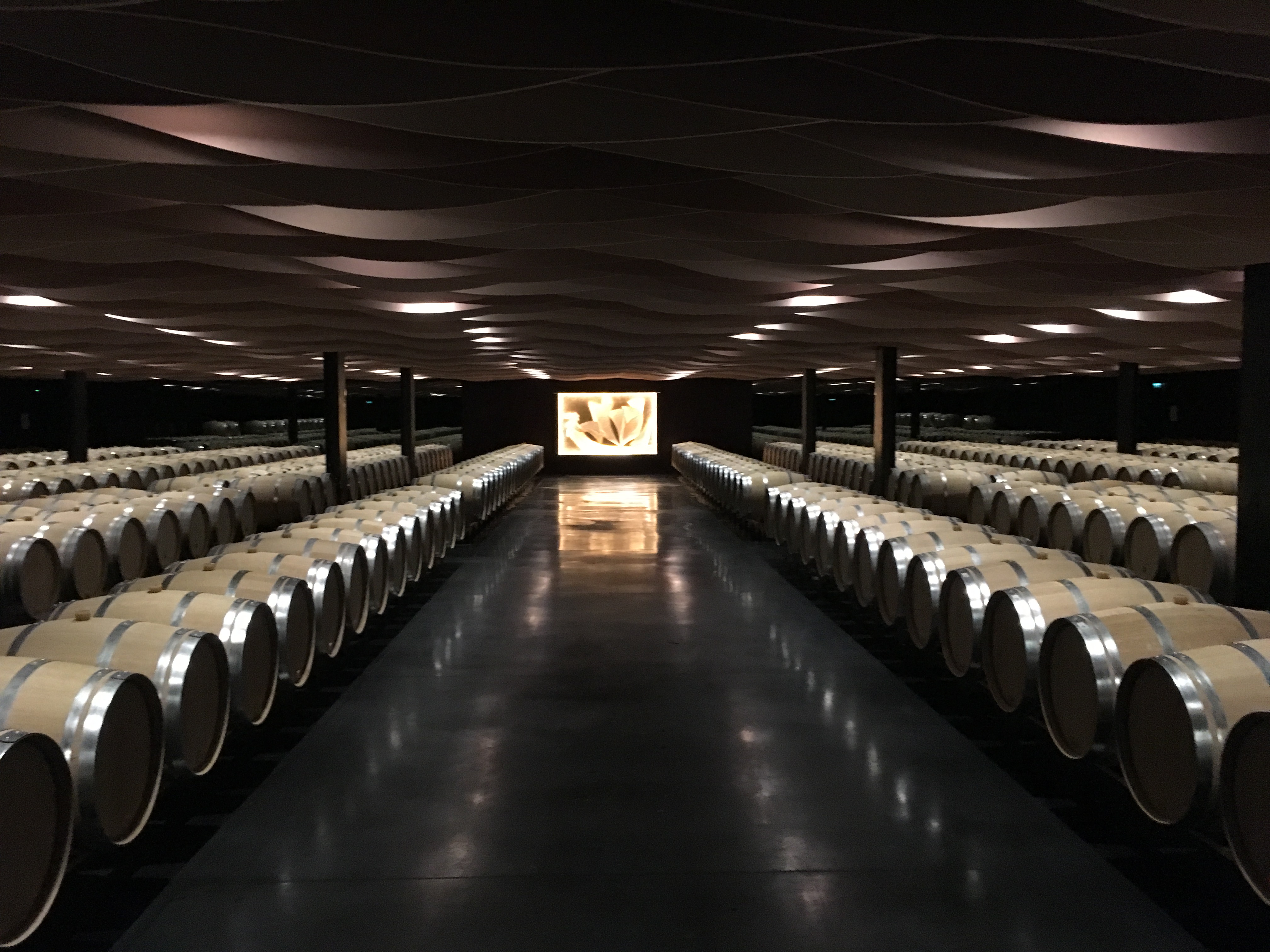
Chateau Bechevelle
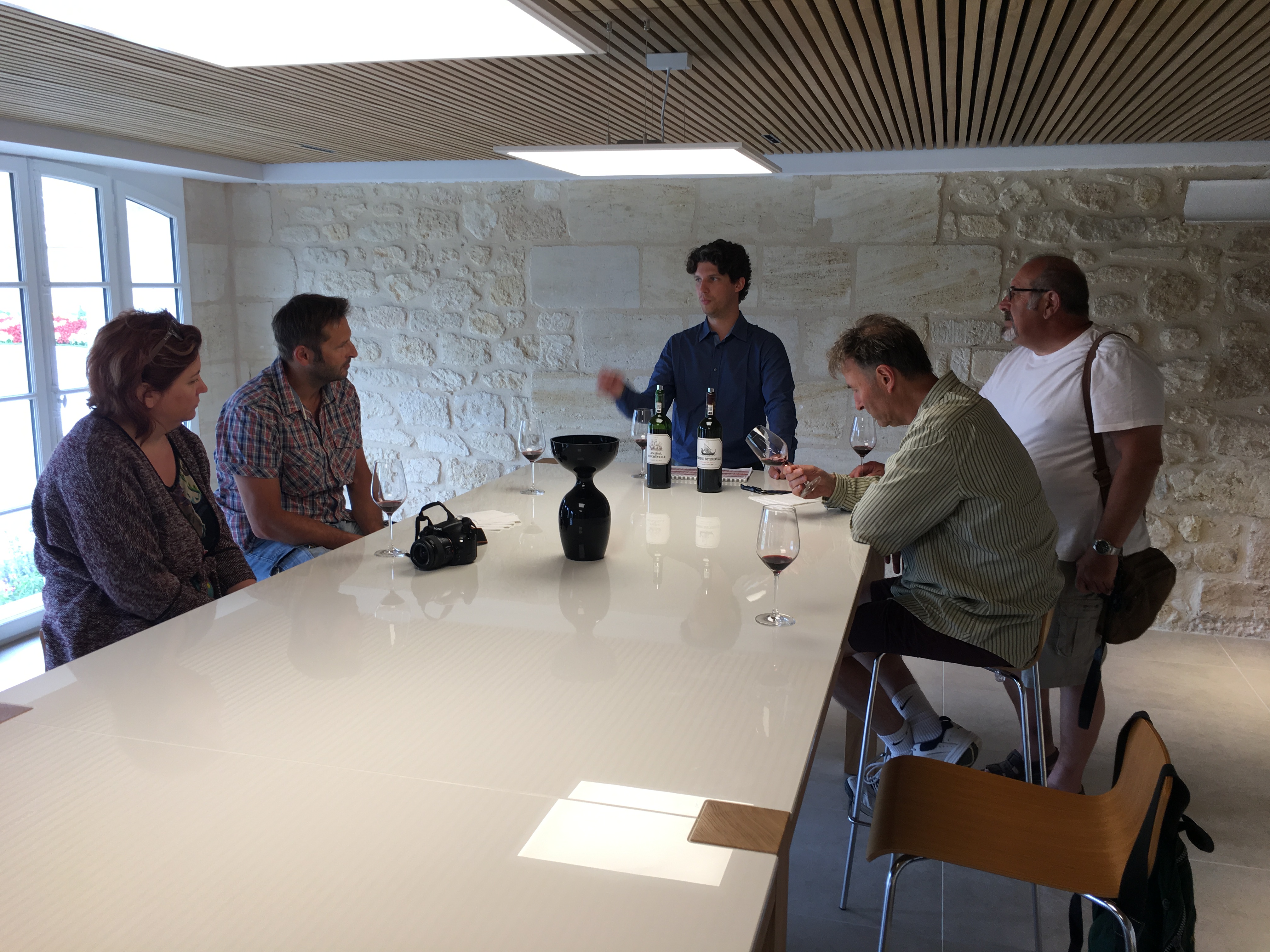
Tasting at Chateau Bechevelle
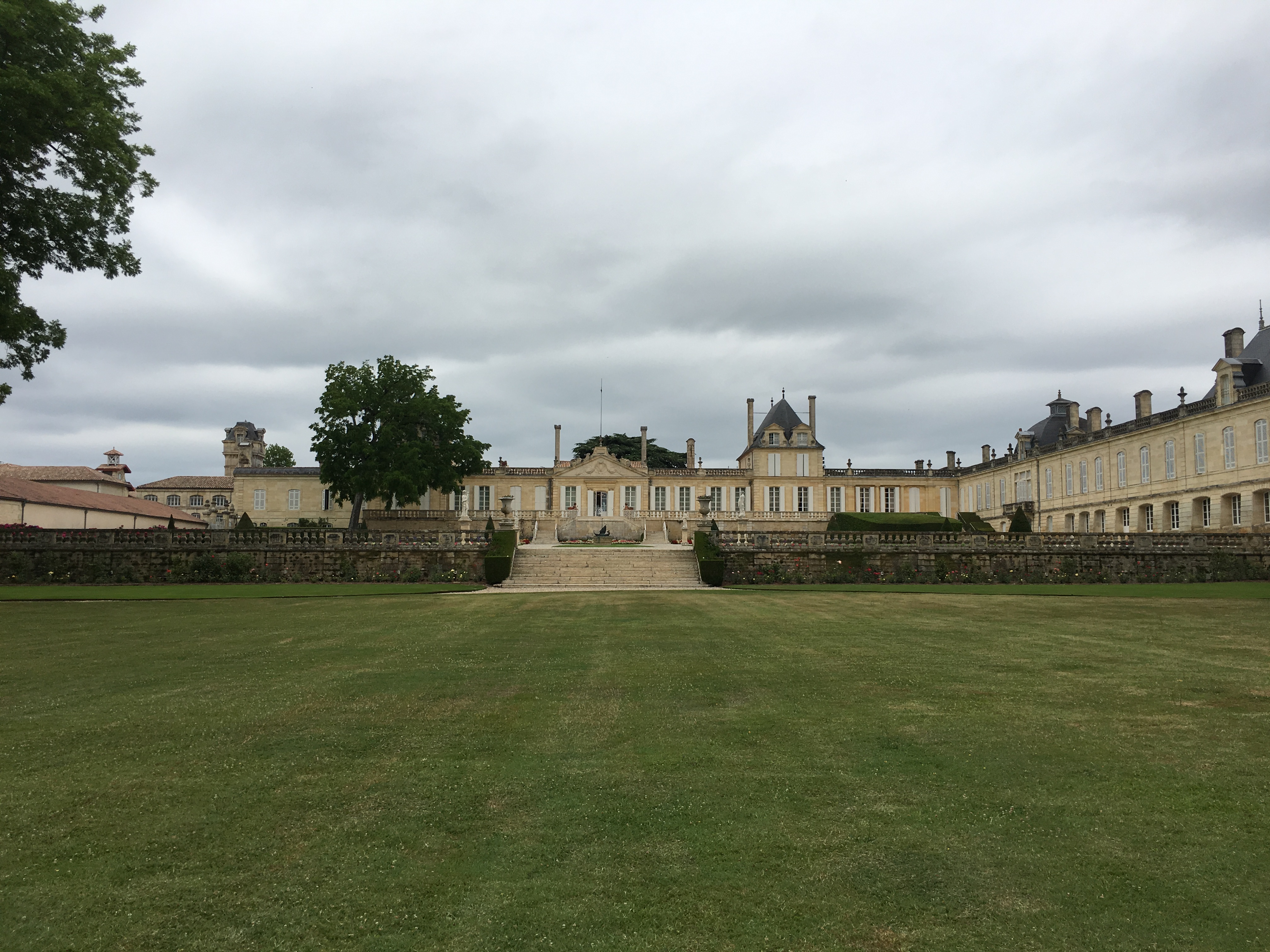
Chateau Bechevelle seen from the park
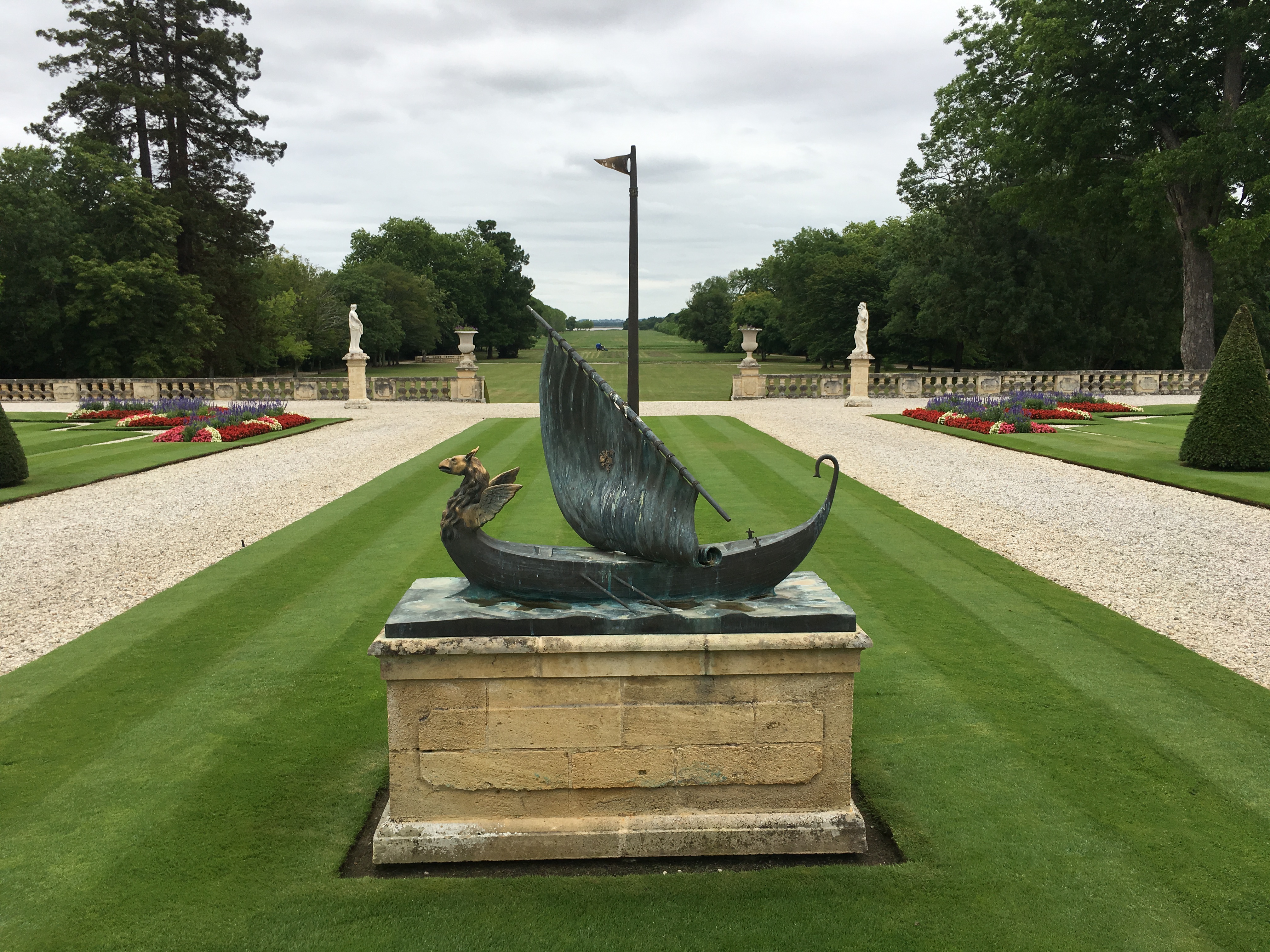
A logo in real life
I get up on the bike and continue. I pass a village and decide to visit a smaller chateau. I spot Chateau Moulin Rouge and decide to give it a chance. This is a completely other setting. A very nice woman greets me, start talking of the wines until she has to go and her son takes over, and gives me the story and the tasting.
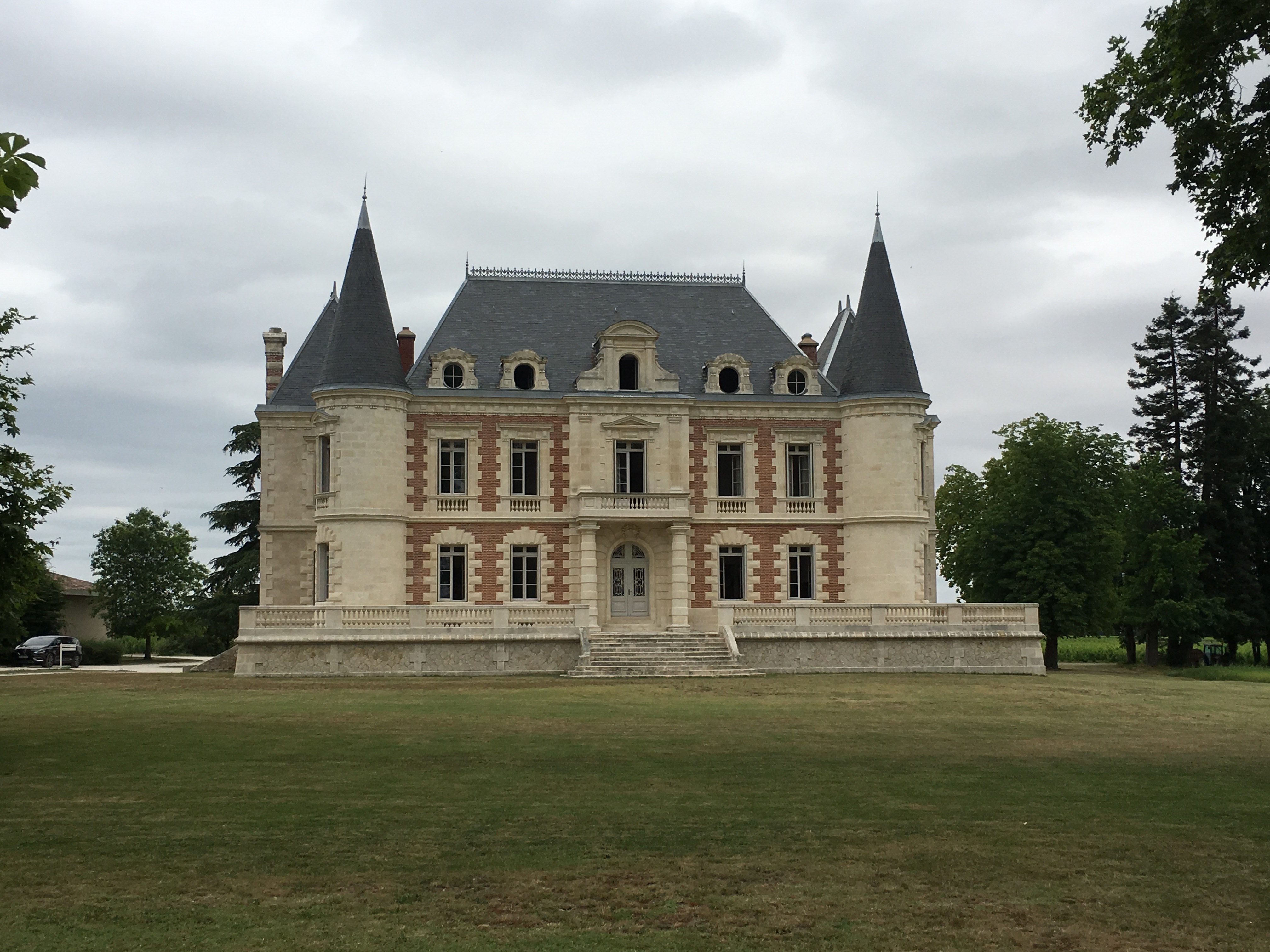
And another chateau…
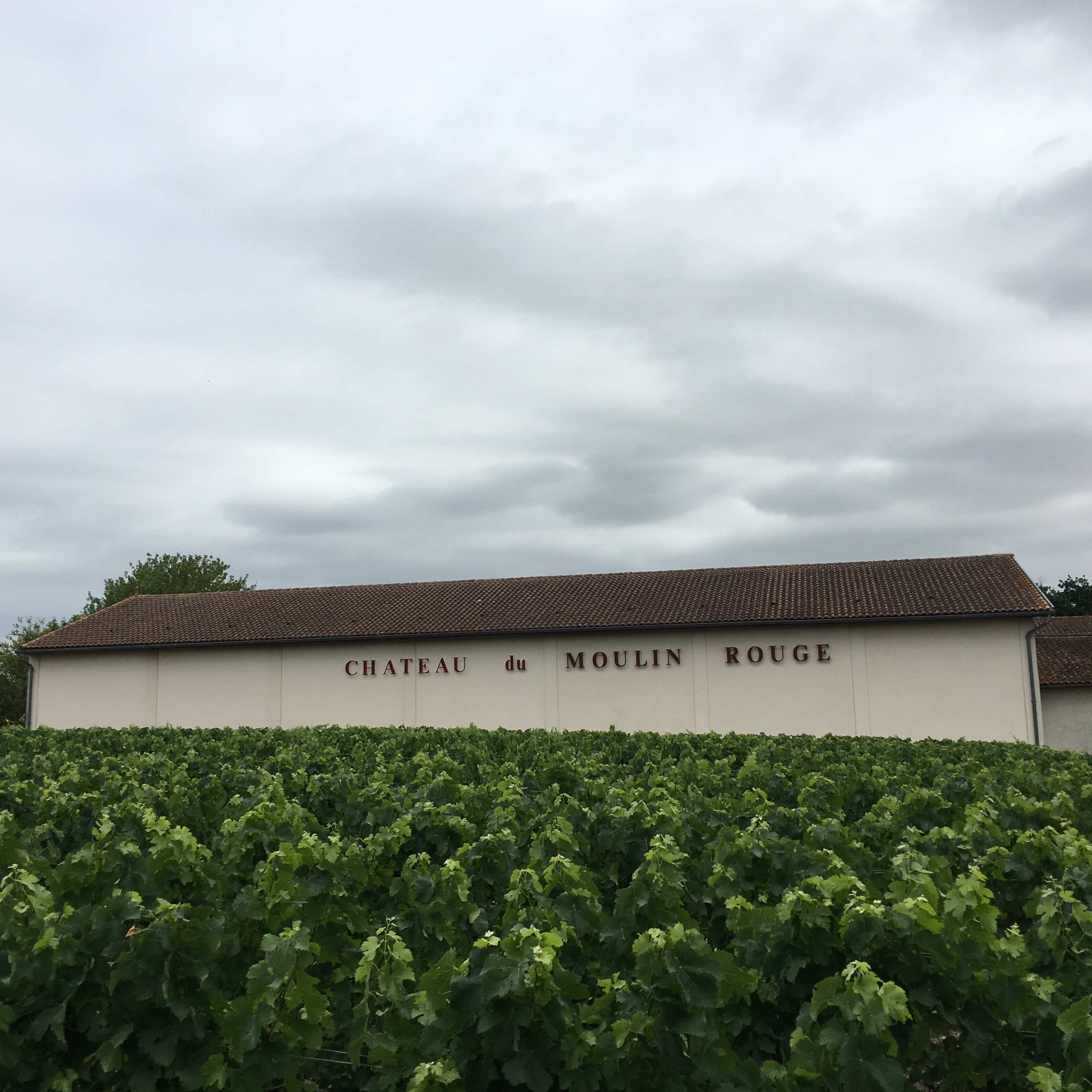
Chateau Moulin Rouge
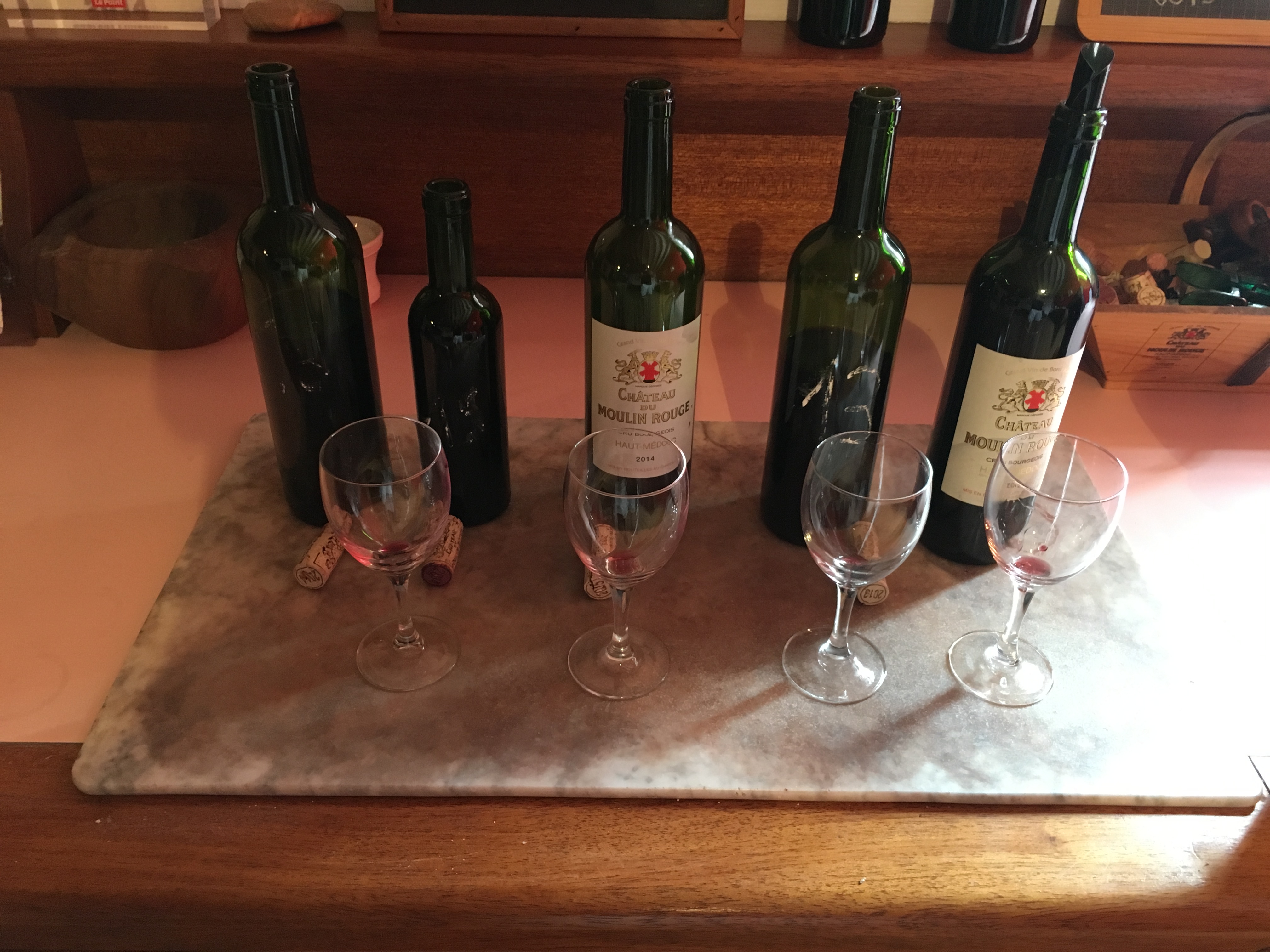
Wine tasting
Fuelled by this more energetic direct meeting I stop by Chateau Aney and walk into a building. A man shows up and is happy to show me their wines and do a spontaneous tasting. This is a knowledgeable guide if there has ever been one and we discuss a lot of the classification system that confuses me. Beside the 1855 Classé system, there is Chateau Bourgeois, Crus Artisans and cooperatives. He confirms my understanding that the 1855 classification was done at that time and since it has not changed since then it is somewhat disconnected from the actual quality. Bechevelle will be a fourth cru and Mouton Rothschild will be a first regardless of how they improve their production. Knowing that the vines has been exchanged and that most of the production techniques since 1855 makes this connection weak. What is true is that these chateaus have the name and resources to make good wine and most of them understand that this is a jewel that needs to maintained. Chateau Aney is classed into the Chateau Bourgeois which was founded 1932 for the wines that did not make the classification in 1855. This classification is renewed and thus has another meaning. Good wine and to a more modest price.
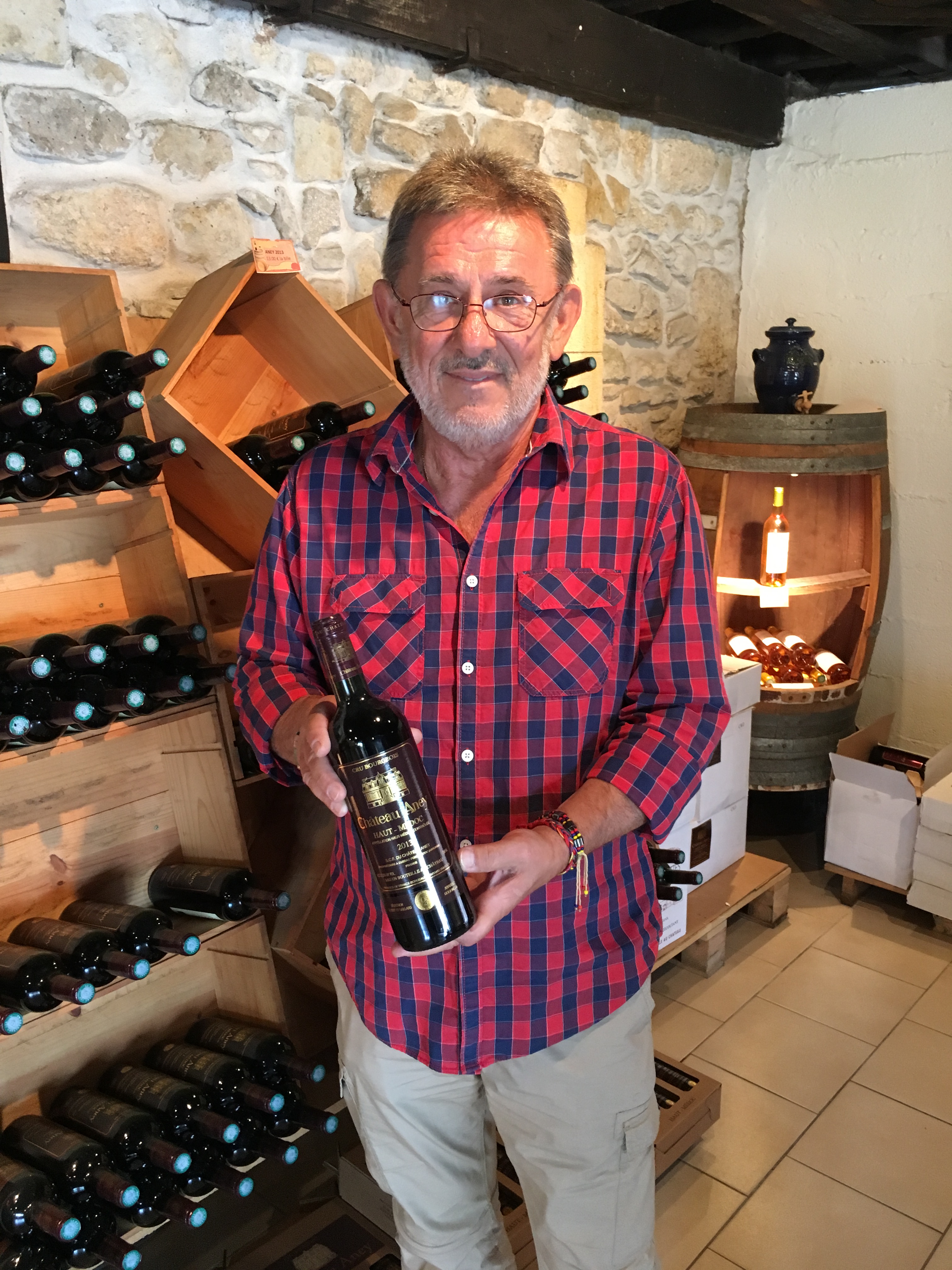
Tasting and discussing at Chateau Aney
Feeling energetic – I continue to Margeaux and have a late lunch. I manage to find a tour in English at Chateau Desmirail. As I come there, it shows out to be just me and the guide is happy to get anything to do. She describes the history of the castle, how they have decided to keep much of the traditional houses and techniques and she puts a lot of energy in the tour.
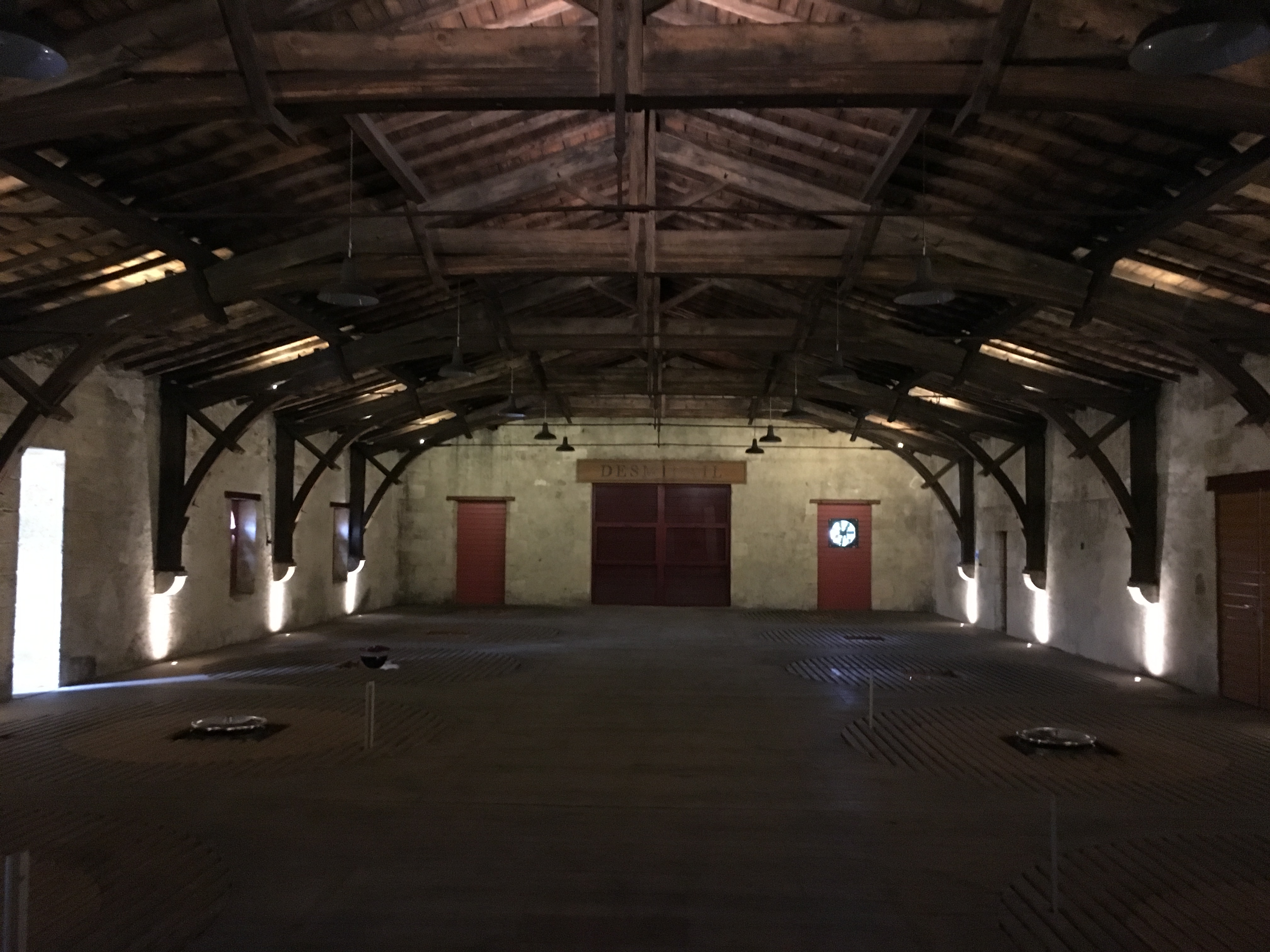
Chateau Desmirail
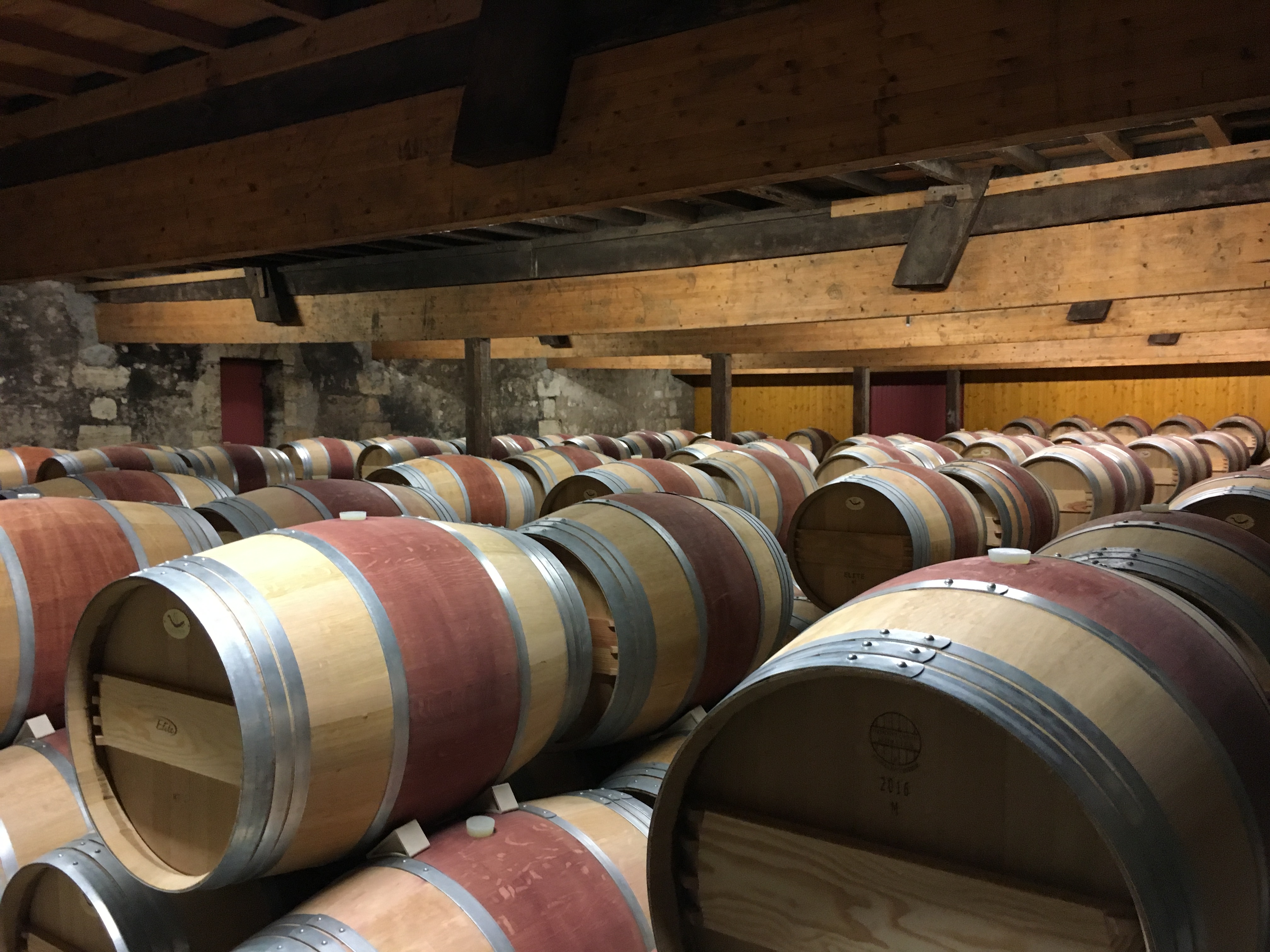
Chateau Desmirail – Vats
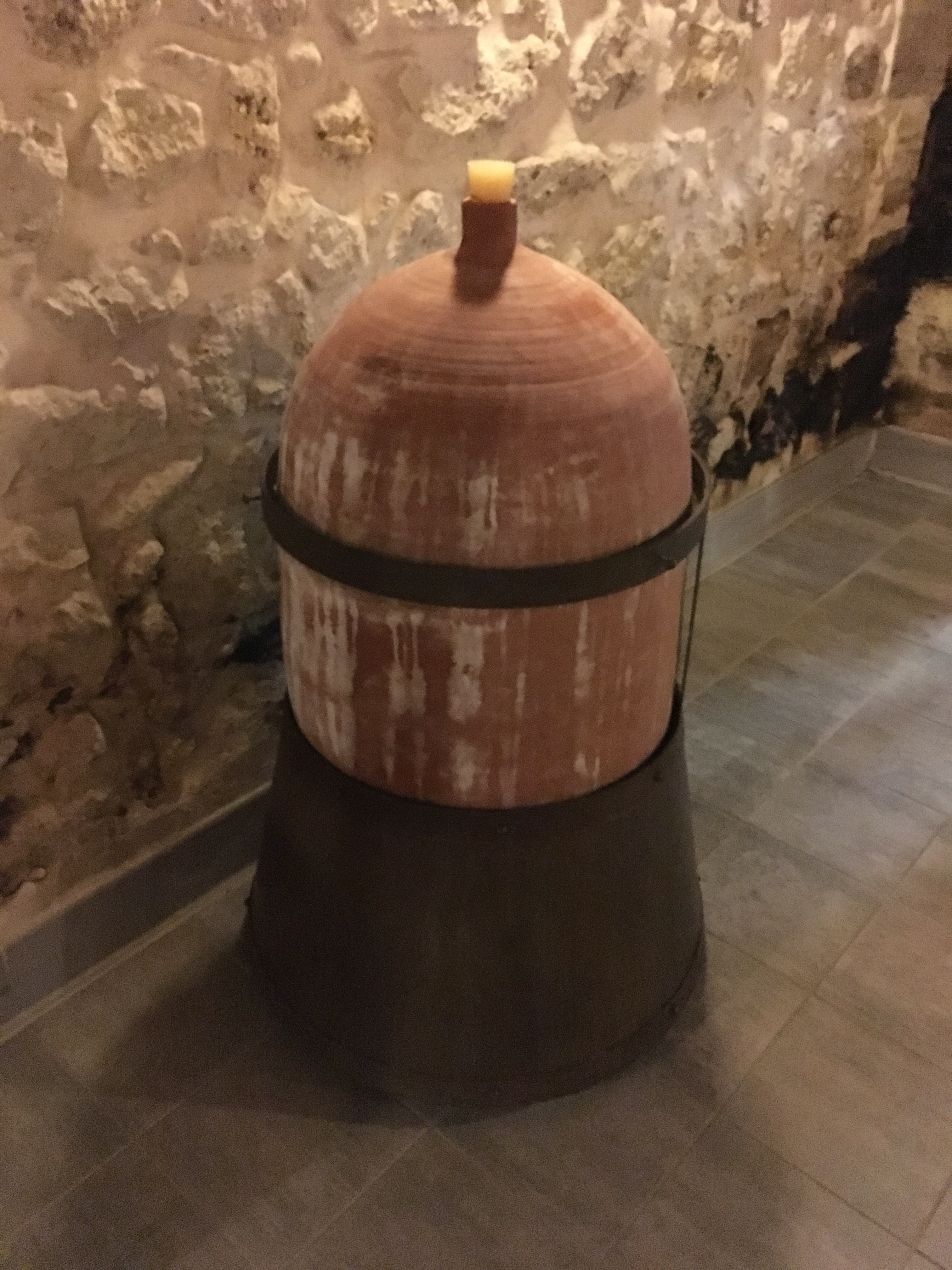
Chateau Desmirail – experiment with amphora
After this tour, I take the bike and go back through this beautiful landscape and chateaus. I arrive back in Pauillac in good time to be able to enjoy the sunset and have some seafood on the promenade.
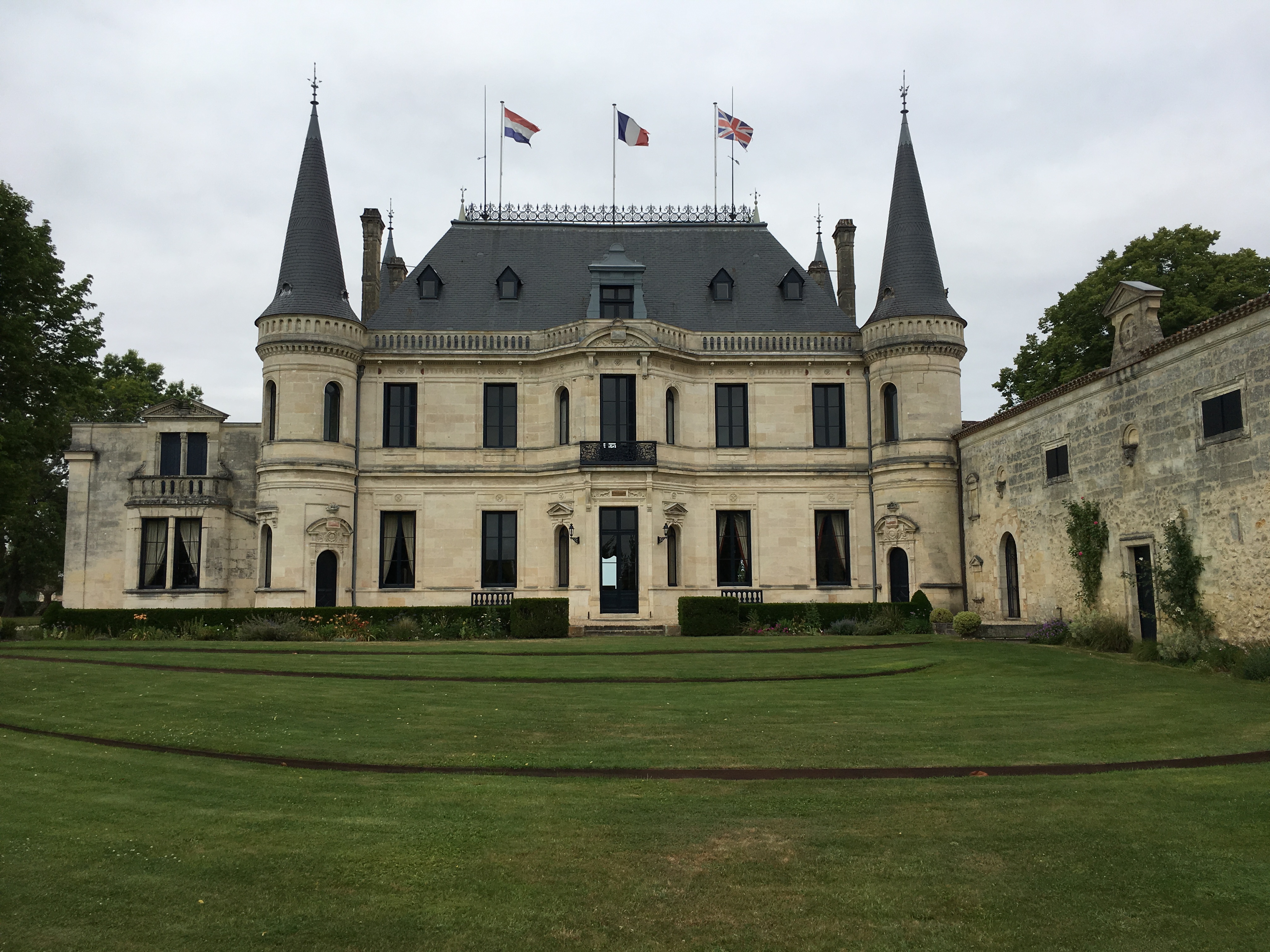
Chateau Palmer
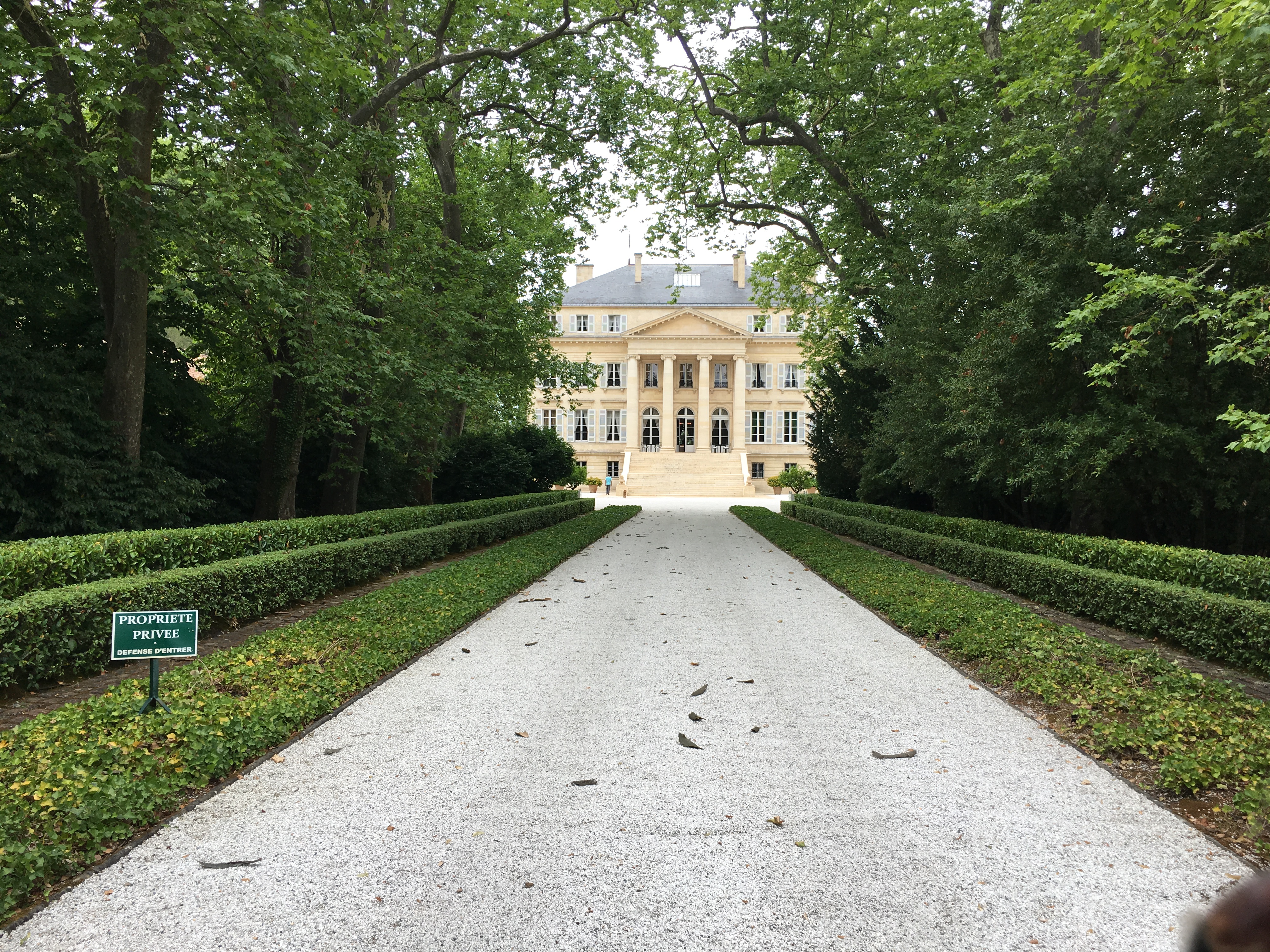
Chateau Margaux
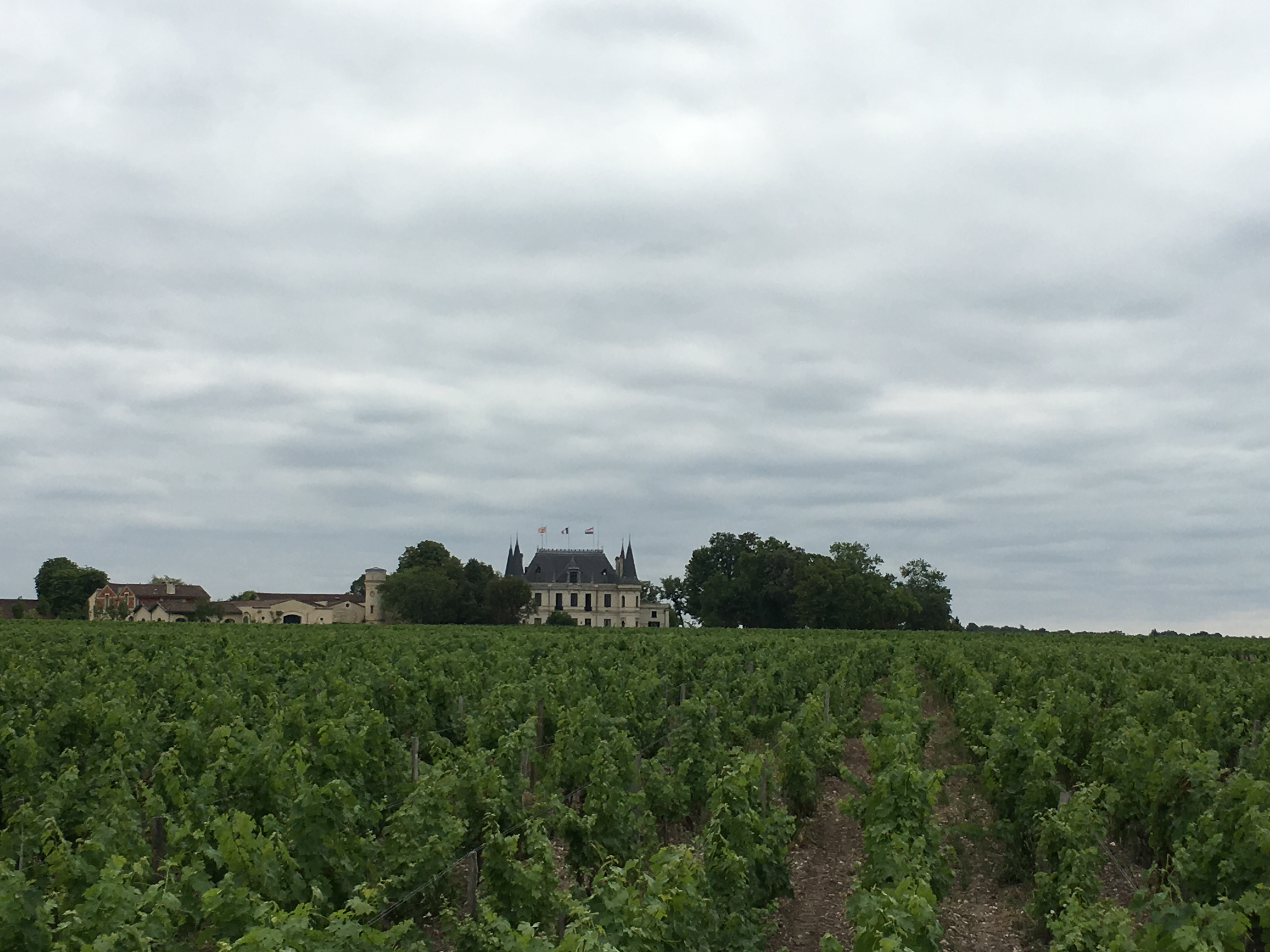
Chateau Palmer from the vineyards
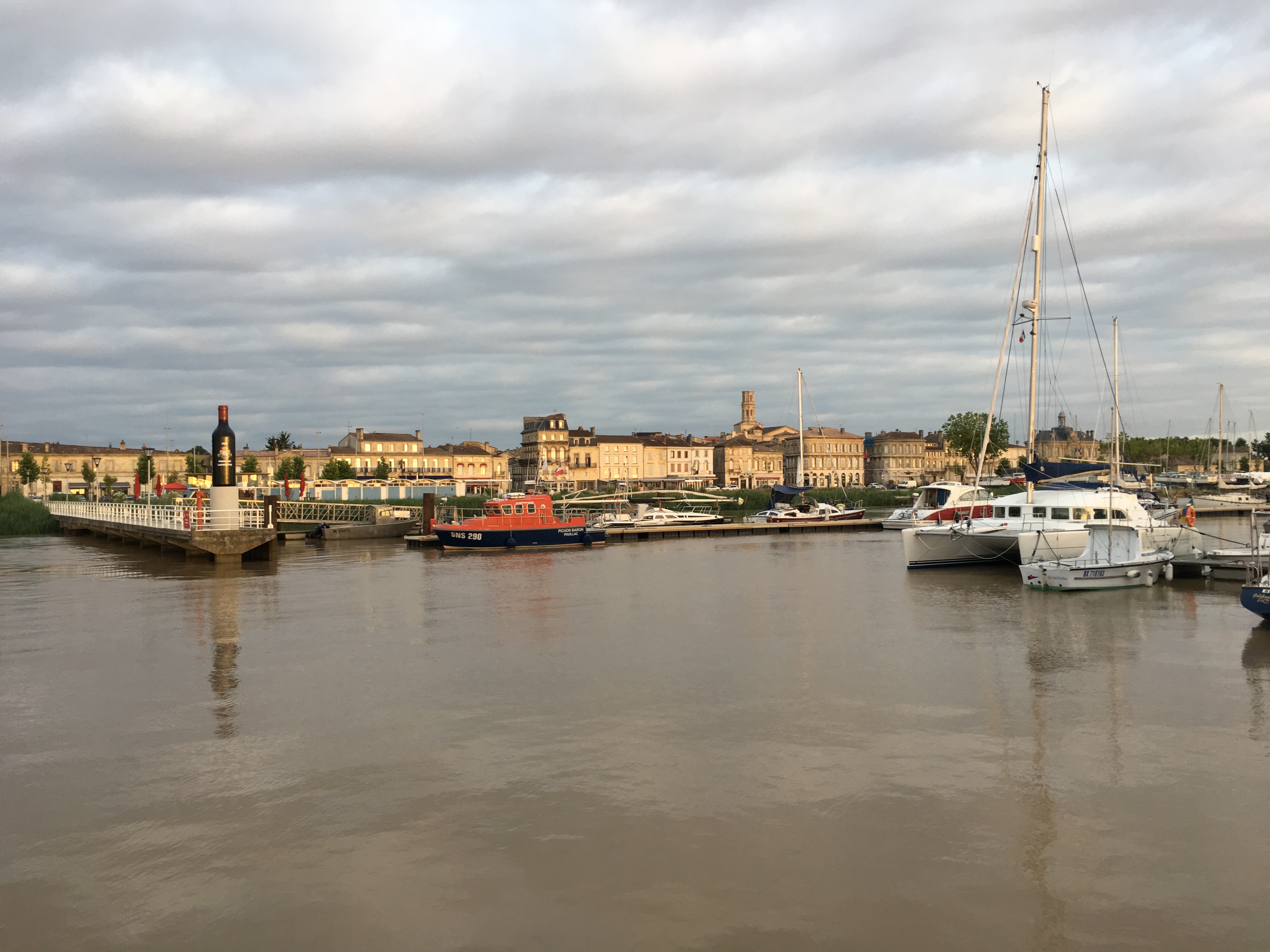
Back in Pauillac
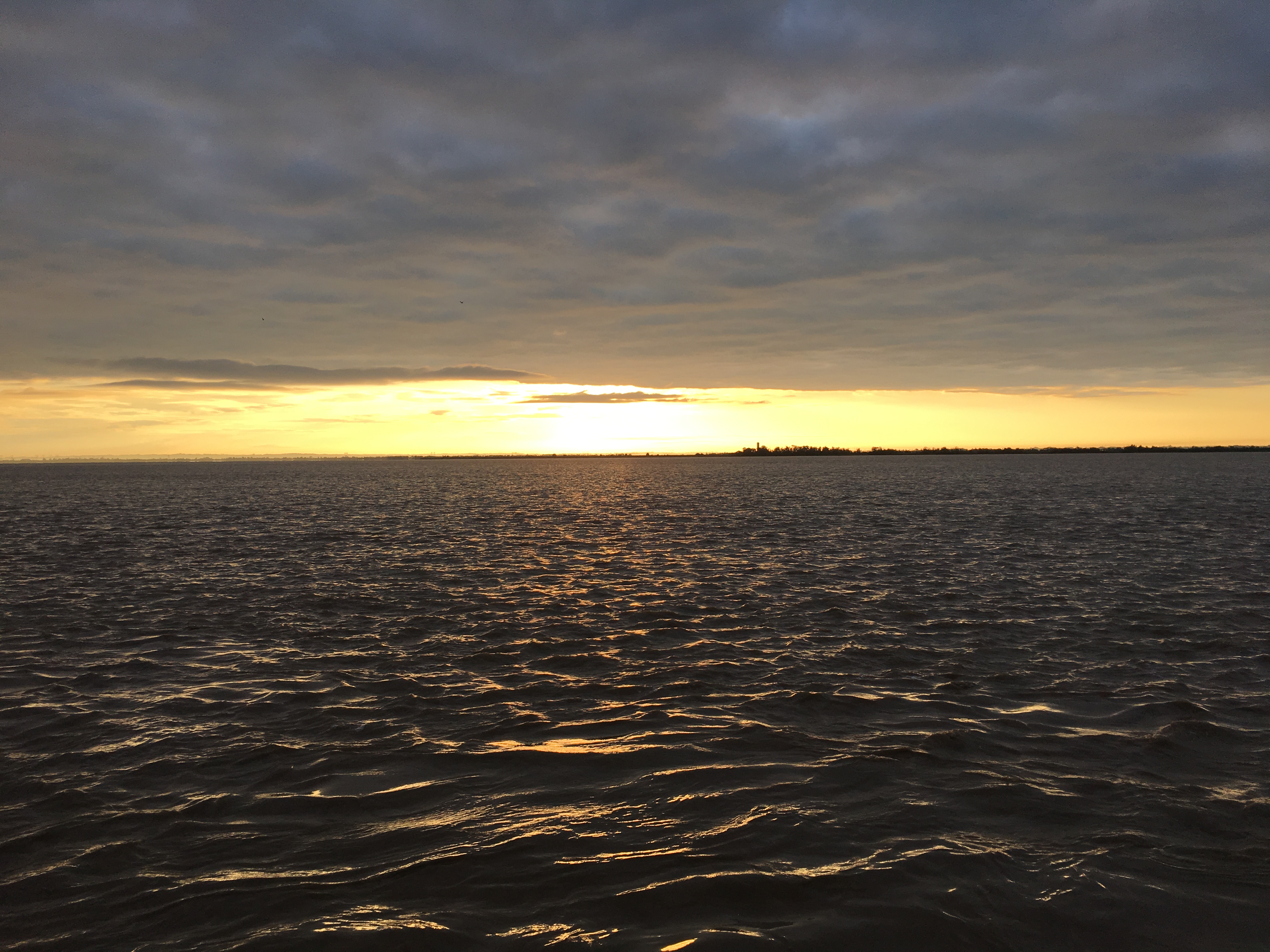
Sunset
Next day is reserved for sightseeing. I read and heard about the city of Blaye and decide to bike down to a ferry down the Gironde and go over to the other side. I love to walk around in old fortresses and amaze of the work and resources put into these fortifications. Blaye has a huge citadel to block the Gironde from enemy ships. This citadel is accompanied of a fort in the middle of the river as well as Fort Medoc on “my” side of the river. First I stop at Fort Medoc before taking the ferry.
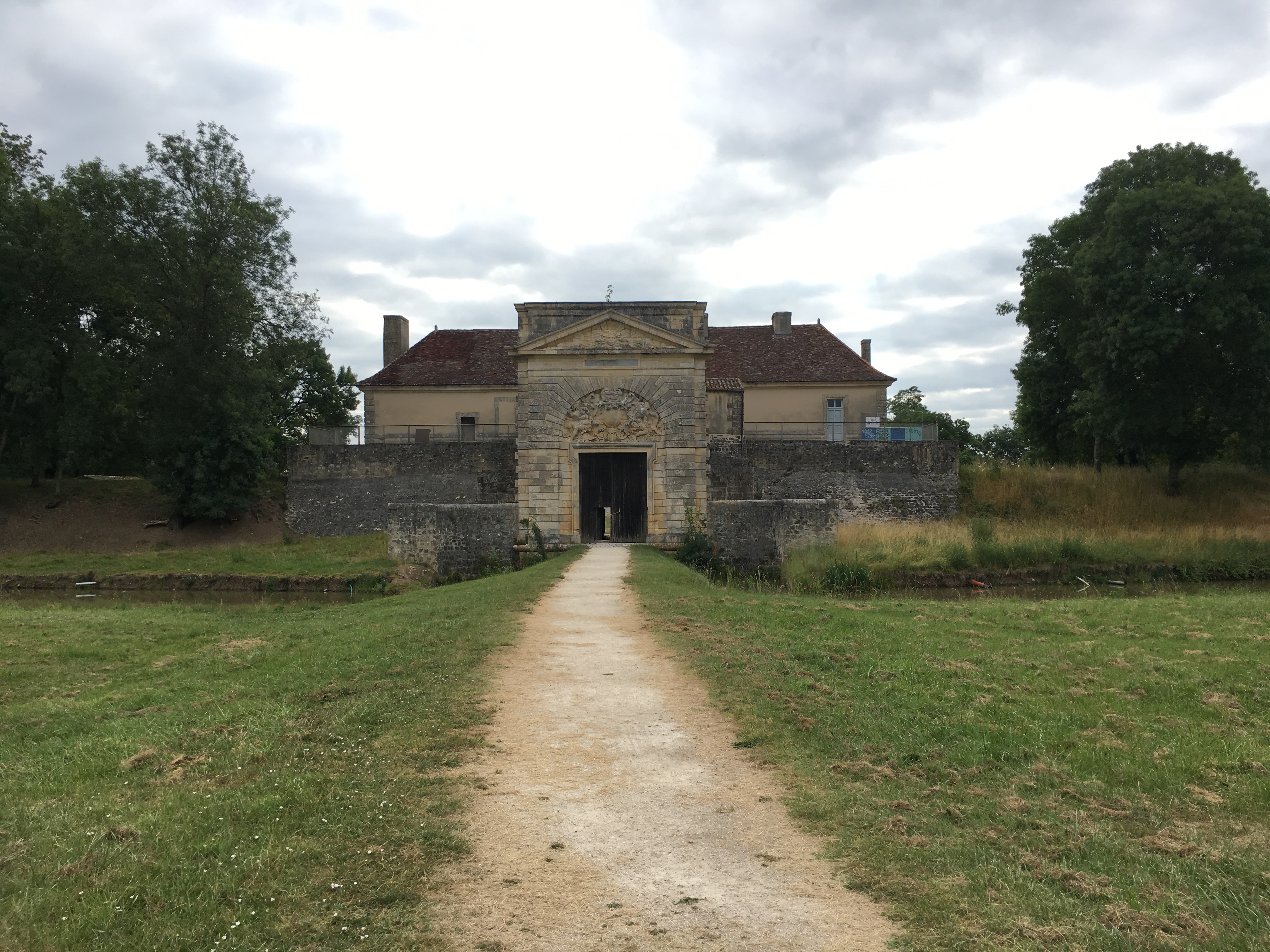
Early morning in Fort Medoc
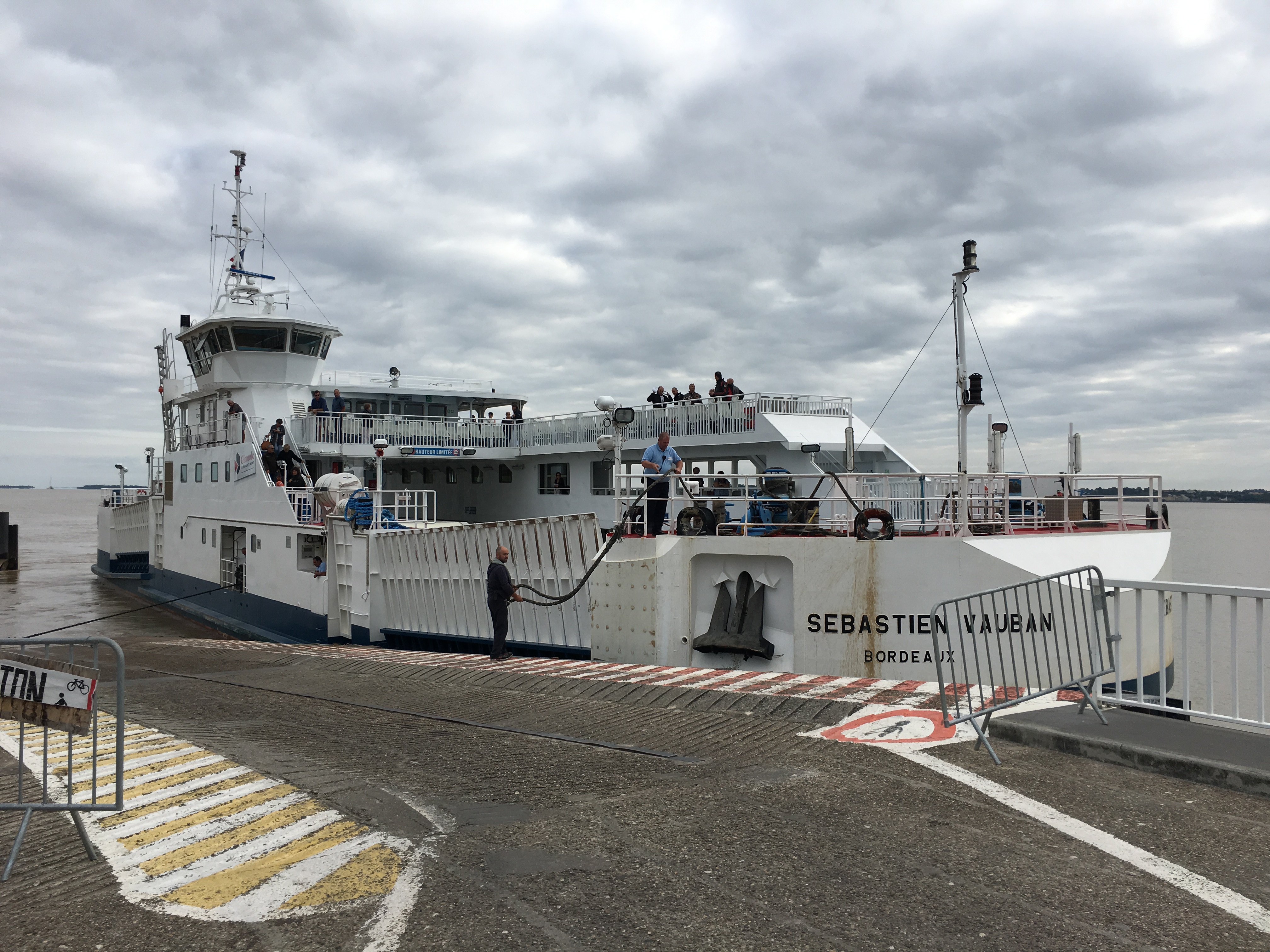
Ferry to Blaye
Blaye is completely dominated by the view of the citadel so I walk up to this fortress and book a tour in the afternoon. Until then I ask if there are any Chateau that I could visit and get recommended to Chateau Marquis de Vauban. Vauban was the architect of the fortifications along with more than 160 (!) fortifications in France. This Chateau visit yet another type of visit. There is a small train that you can take from the citadel to the castle, and the tour was clearly intended for larger groups where you could have a lunch or dinner at the chateau.
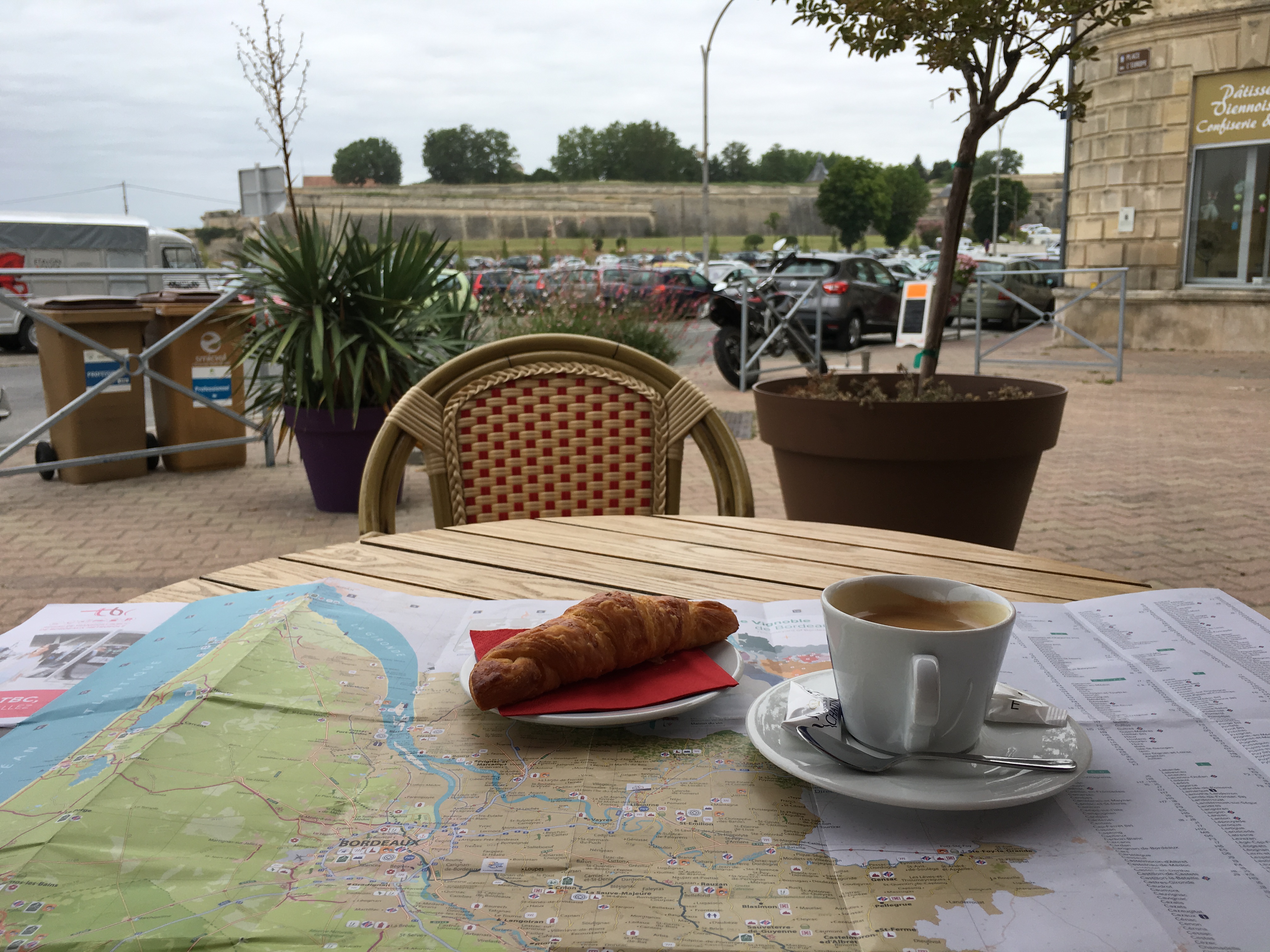
Morning coffee in Blaye
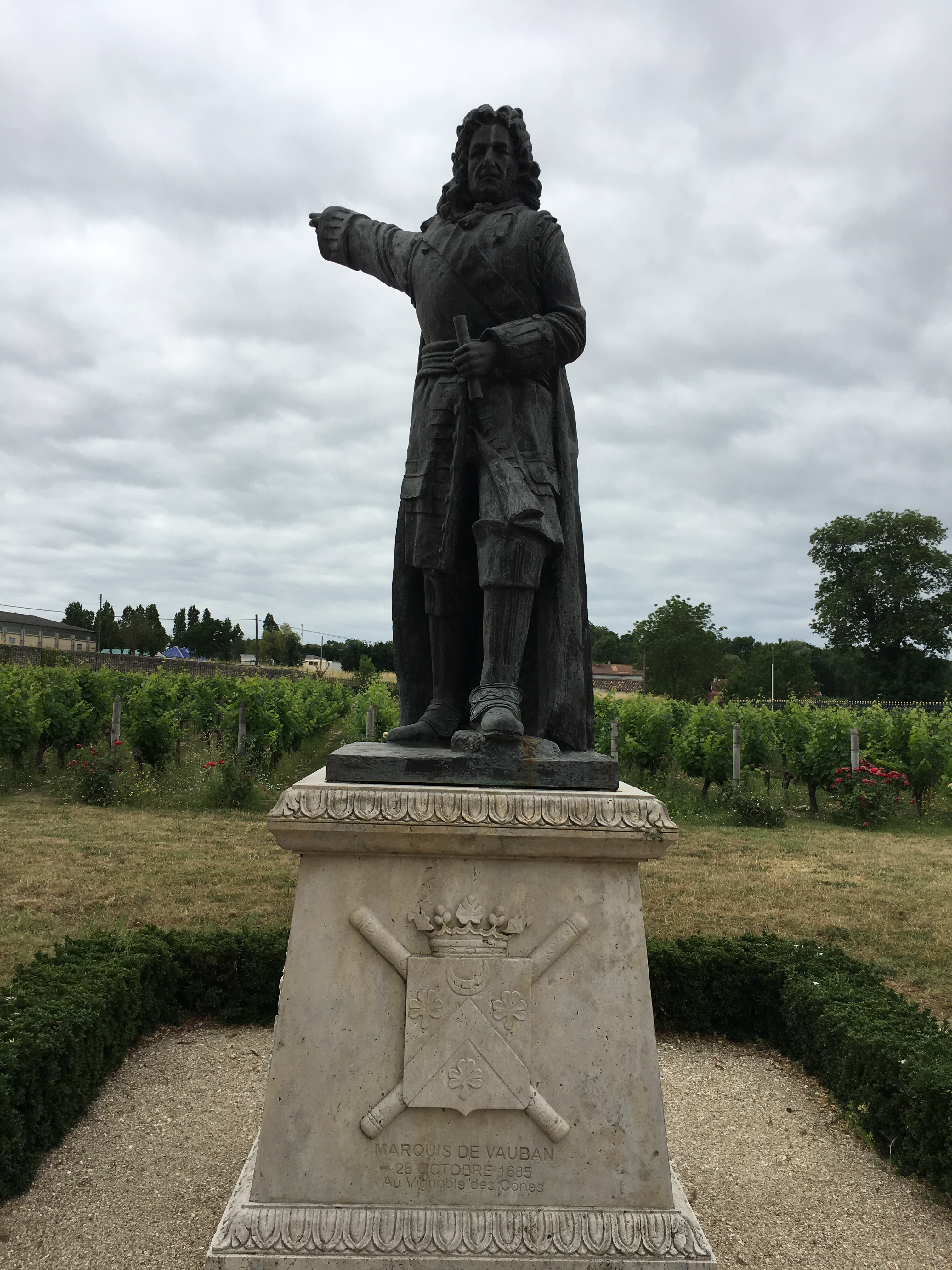
Chateau Marquis de Vauban
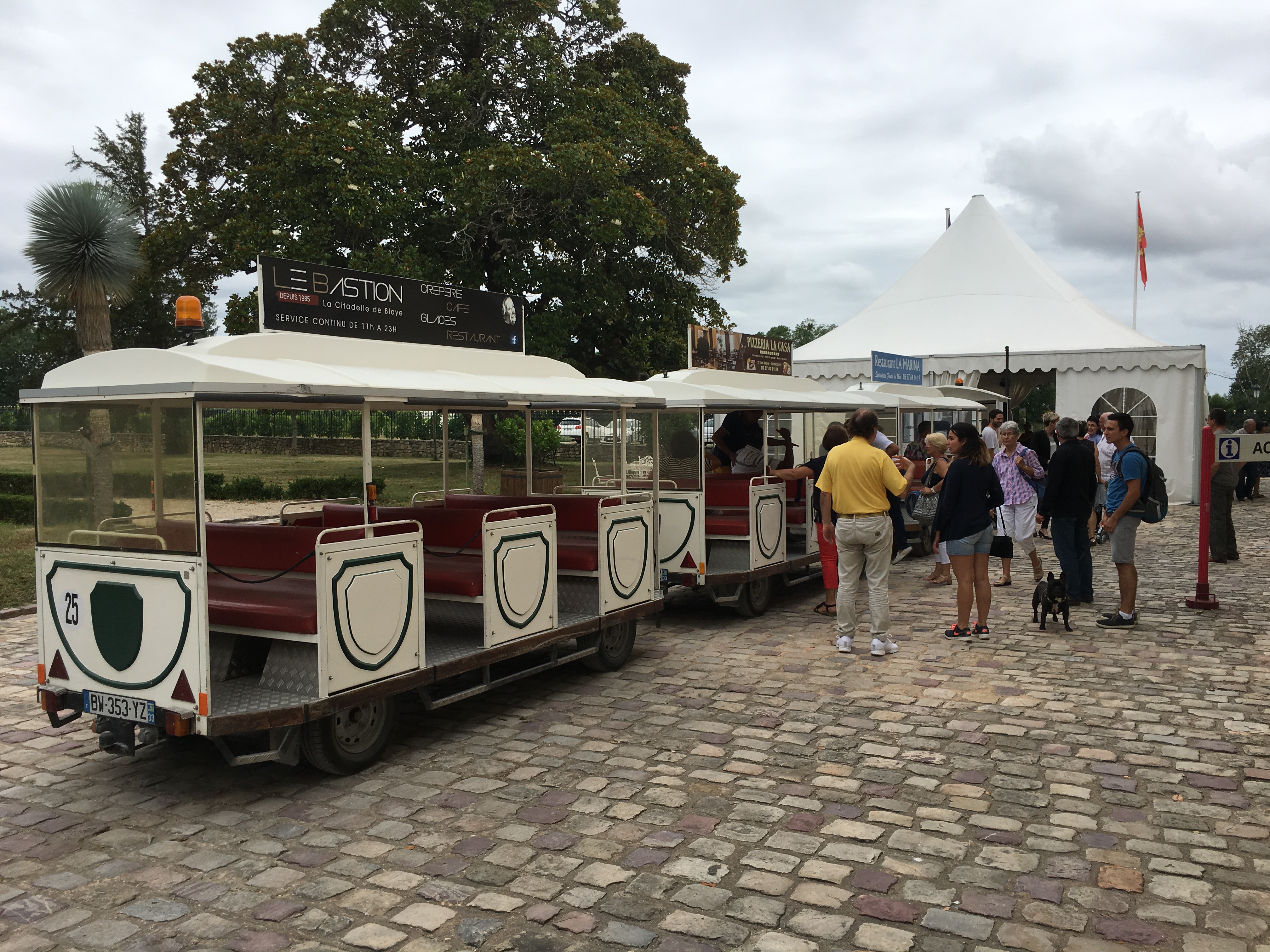
Small train to the chateau from the citadel
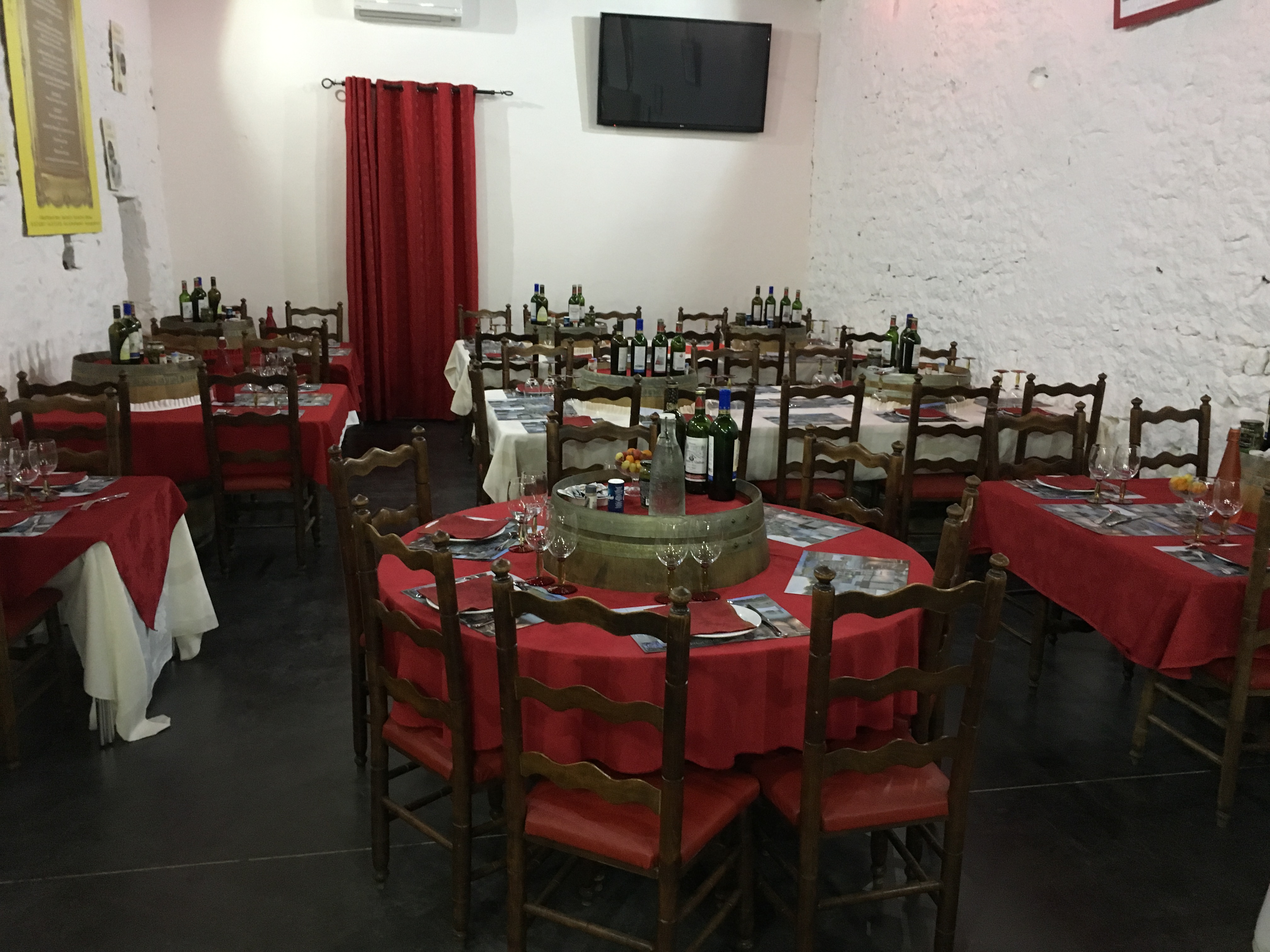
Ready for dinner!
As it is midsummer’s day, I decide to try to find a restaurant where they serve herring. No midsummer is complete without herring. I finally find a place where they serve smoked herring and when I ask for vodka to go along with that I get a confused look from the waitress but she manage to find a bottle hidden somewhere.
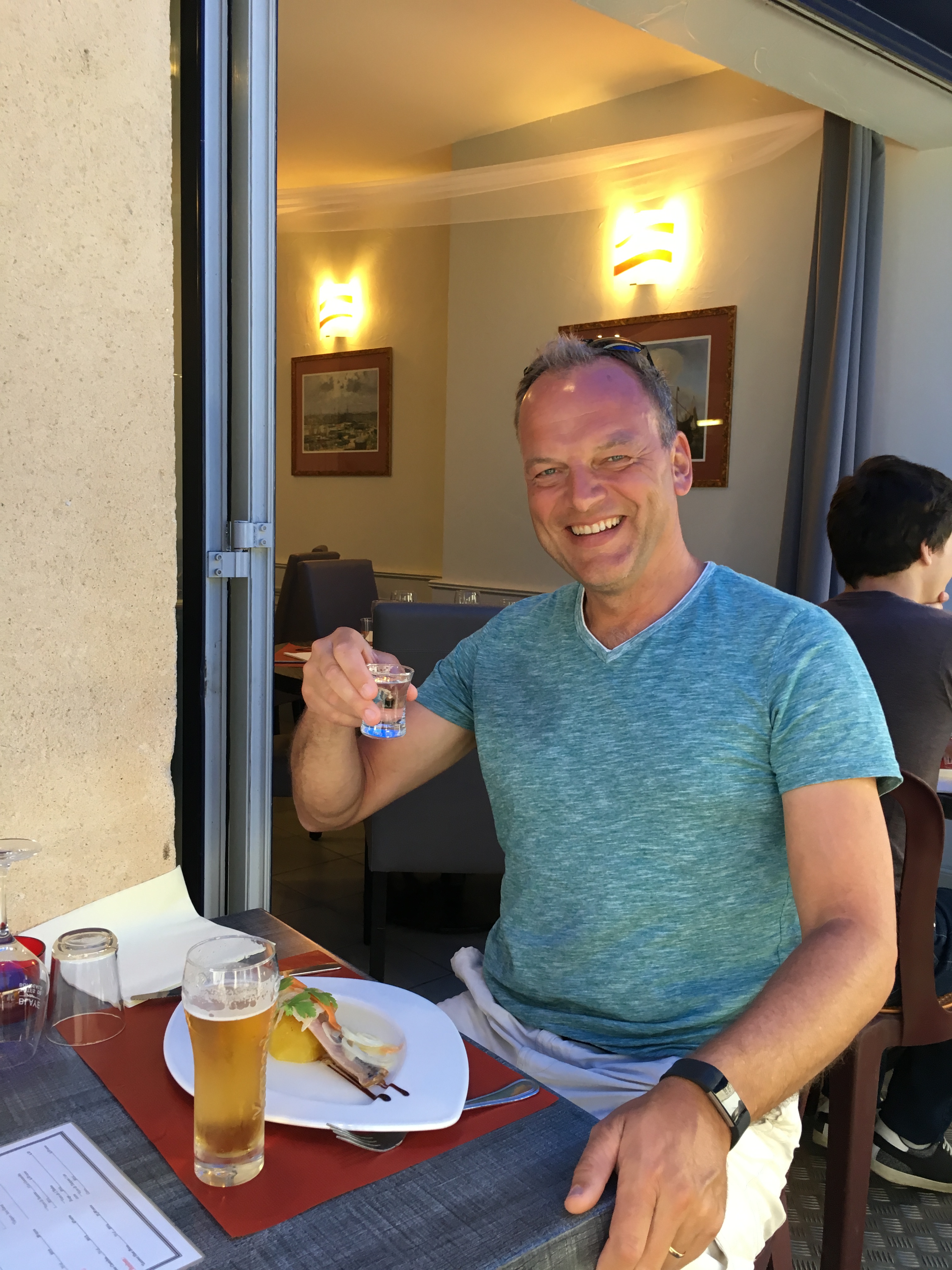
Herring with Snaps!
The citadel tour guide is very energetic and again I get my own guide that is happy to have anything to do. Perfect, we have a lot of time to talk and we visit some parts that is not possible to visit with a group. Impressive citadel but I do not envy the soldiers that were put here for life. As usual when I visit these fortifications, I feel grateful that I am born in the right time and place to do what I do.
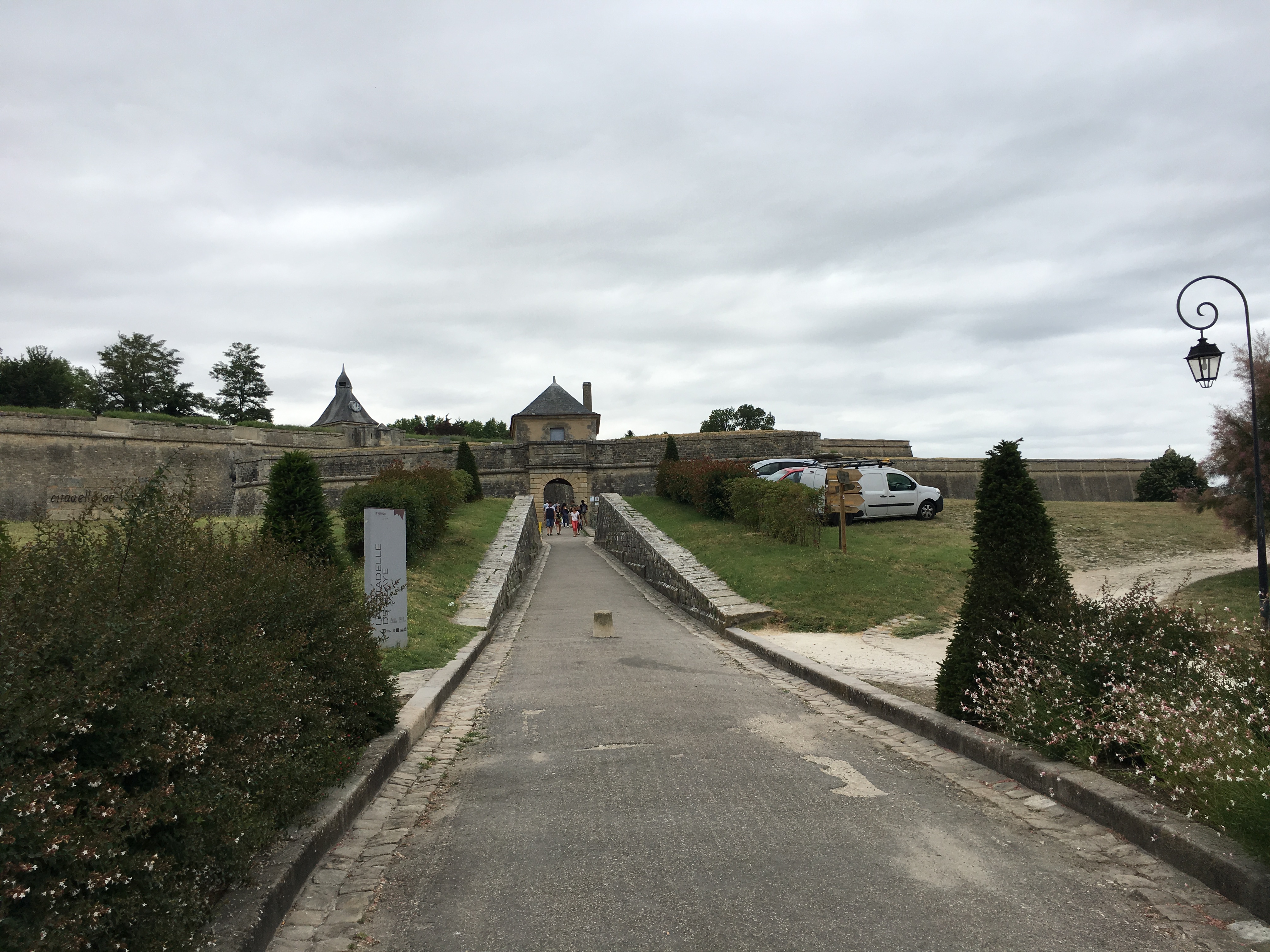
Way up to the citadel
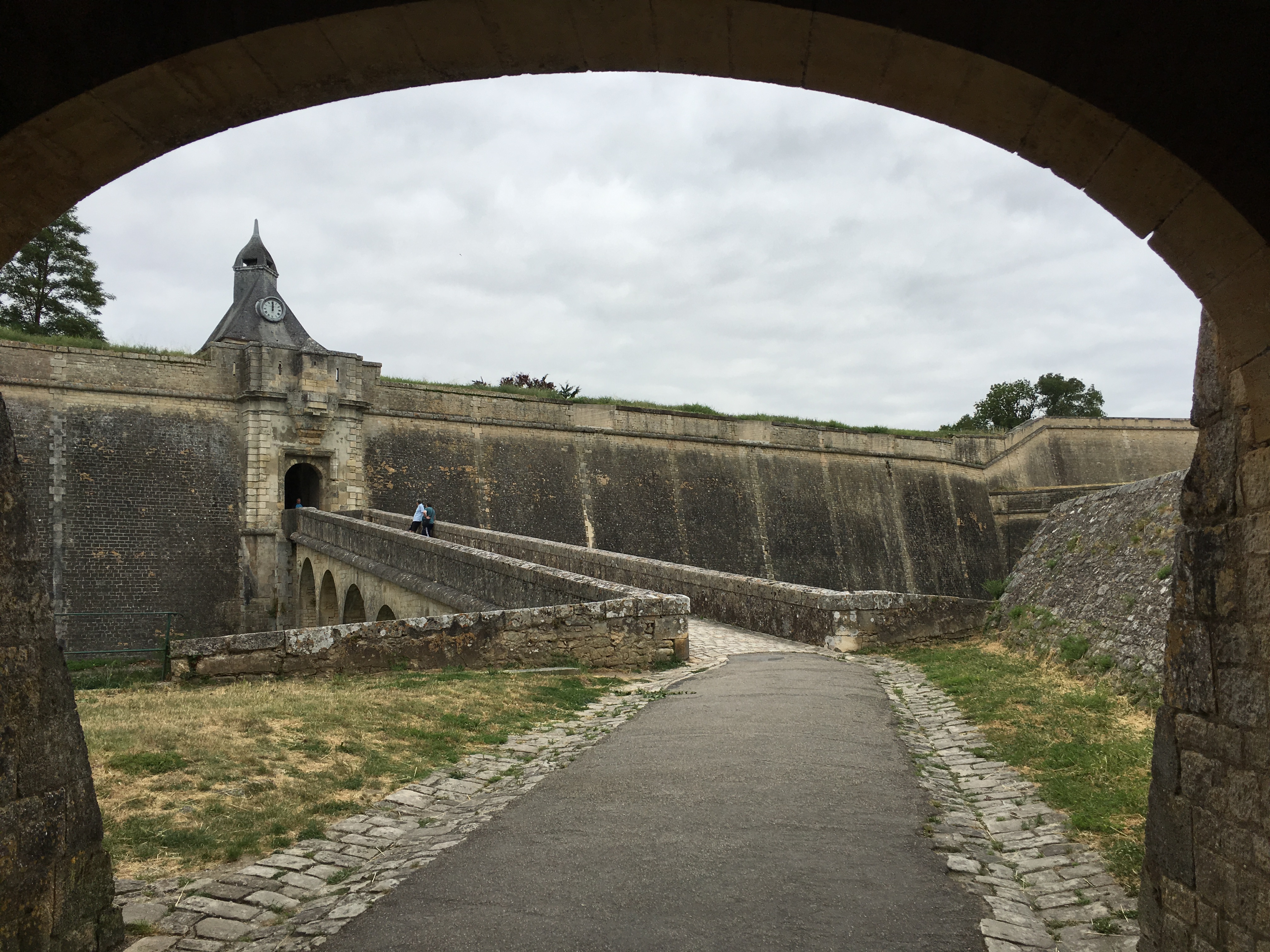
The citadel
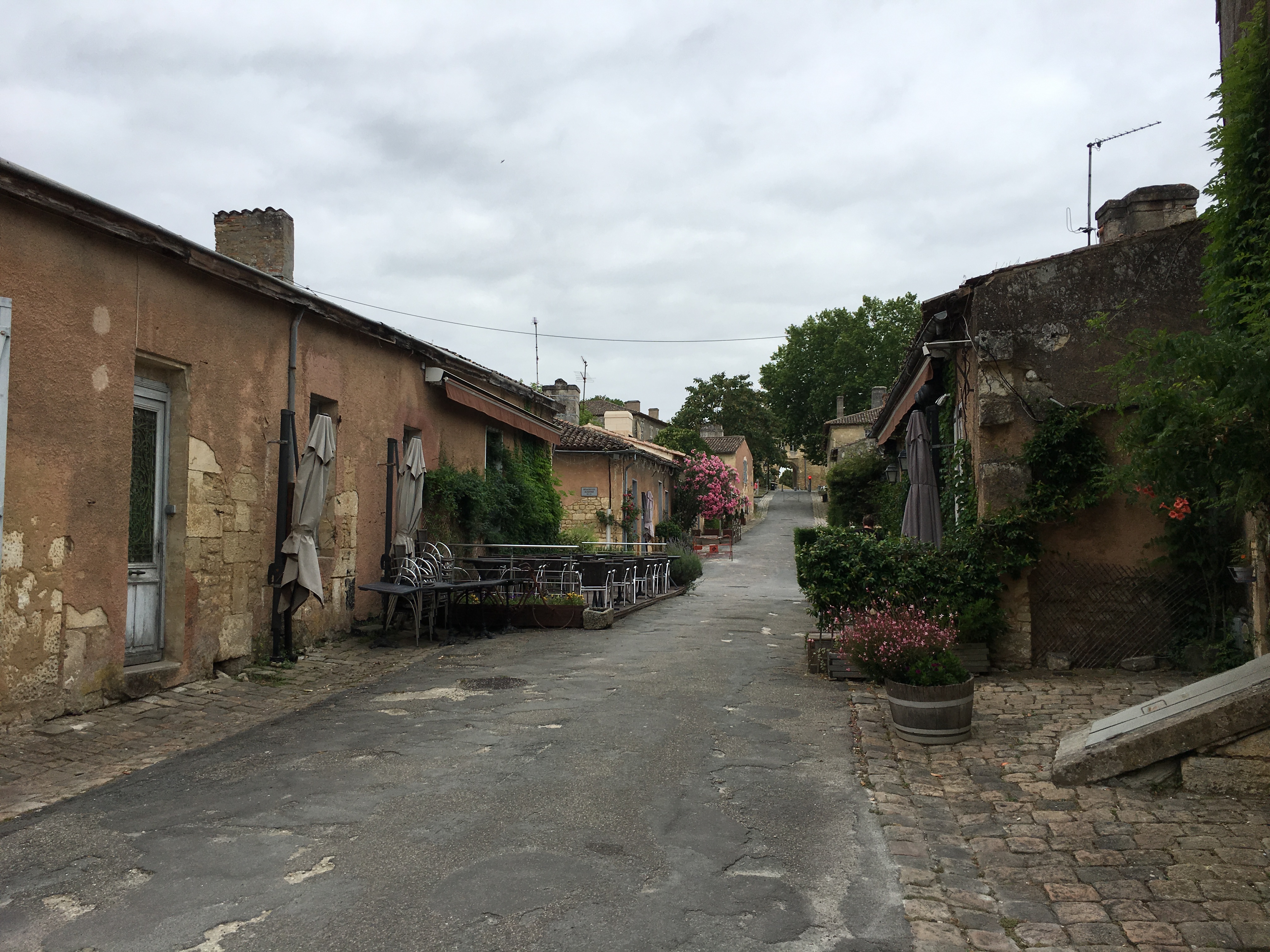
Blaye Citadel!
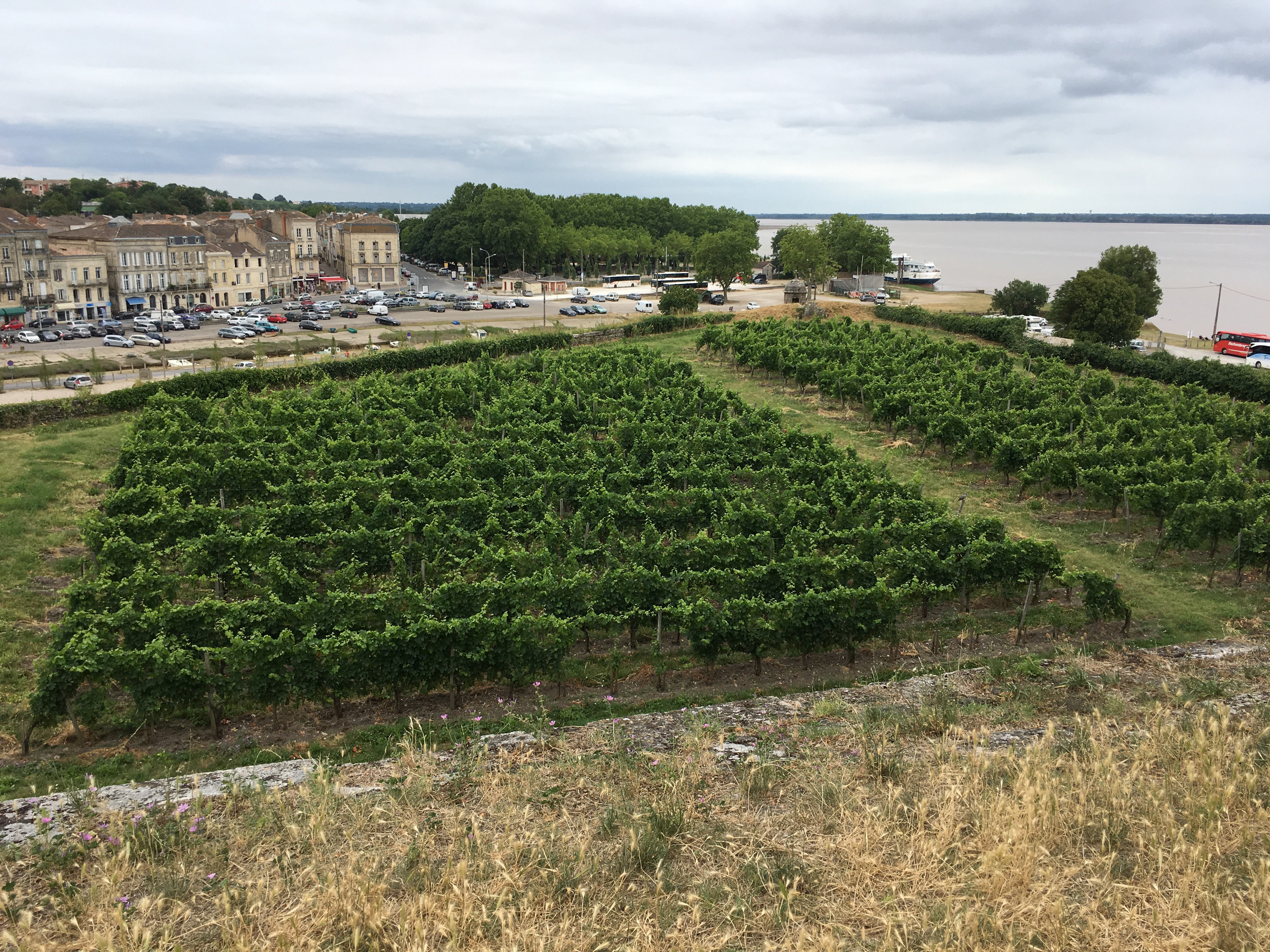
View of the town from citadel
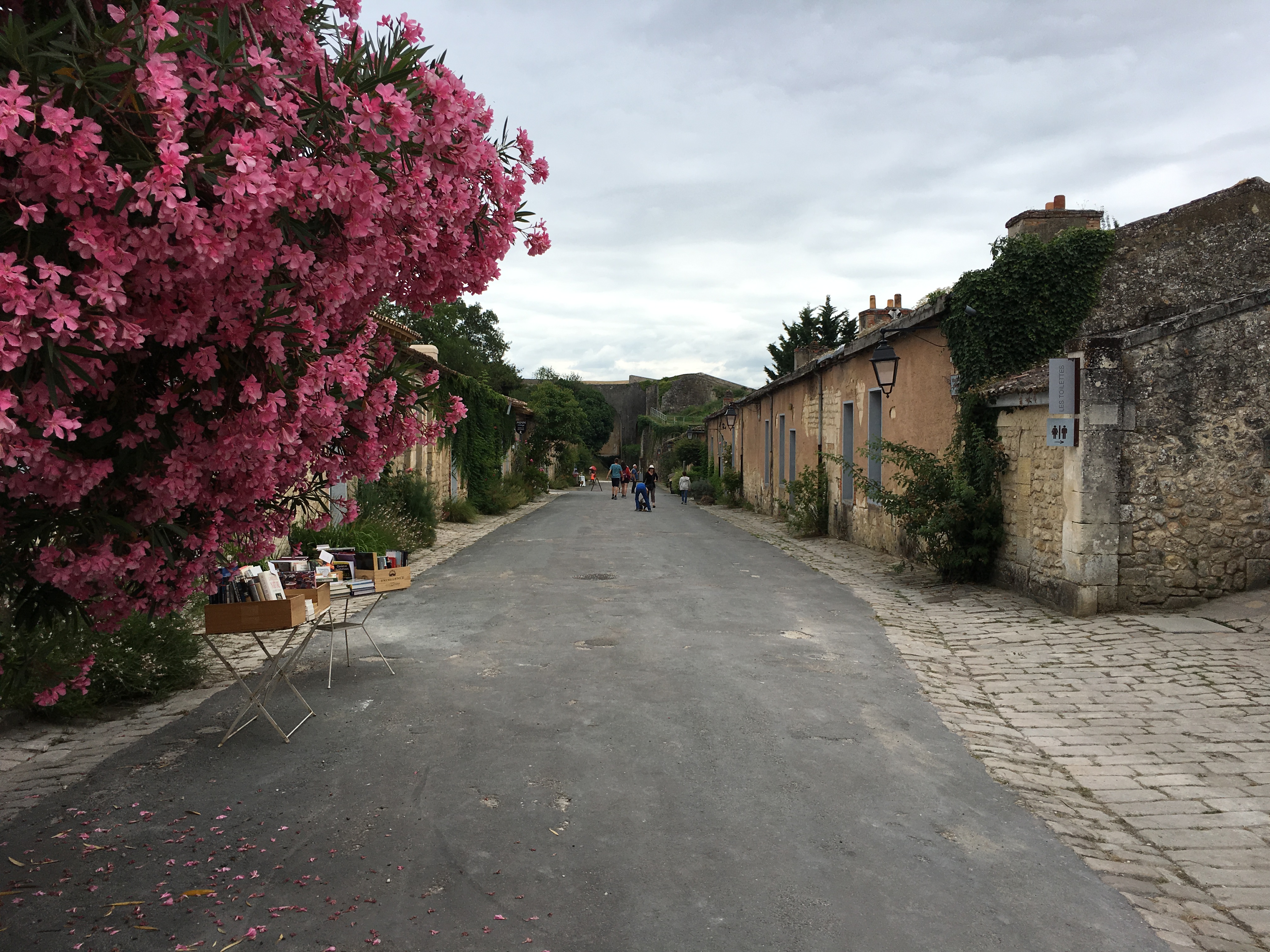
Street in the citadel
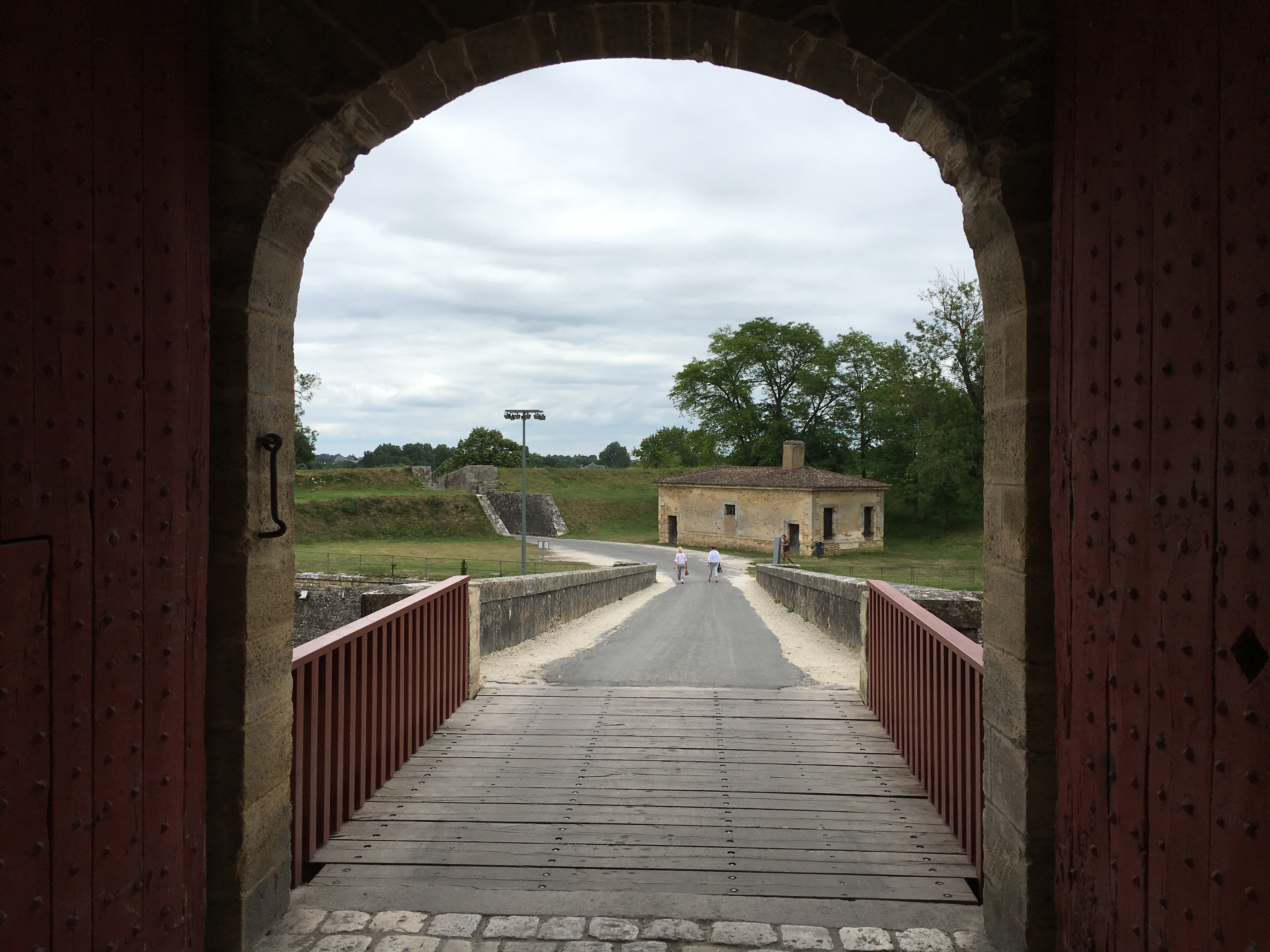
The kings entrance
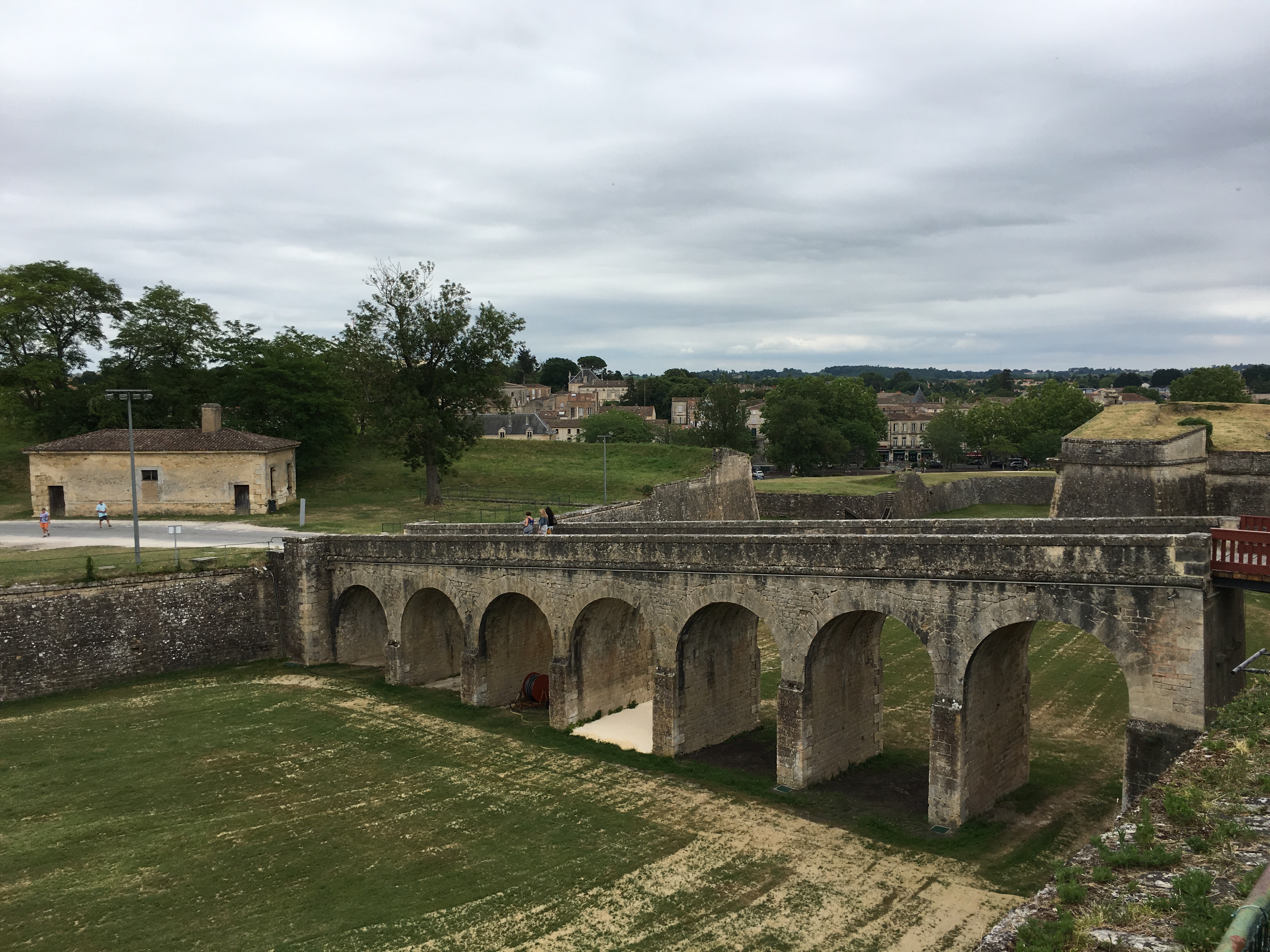
Citadel bridge
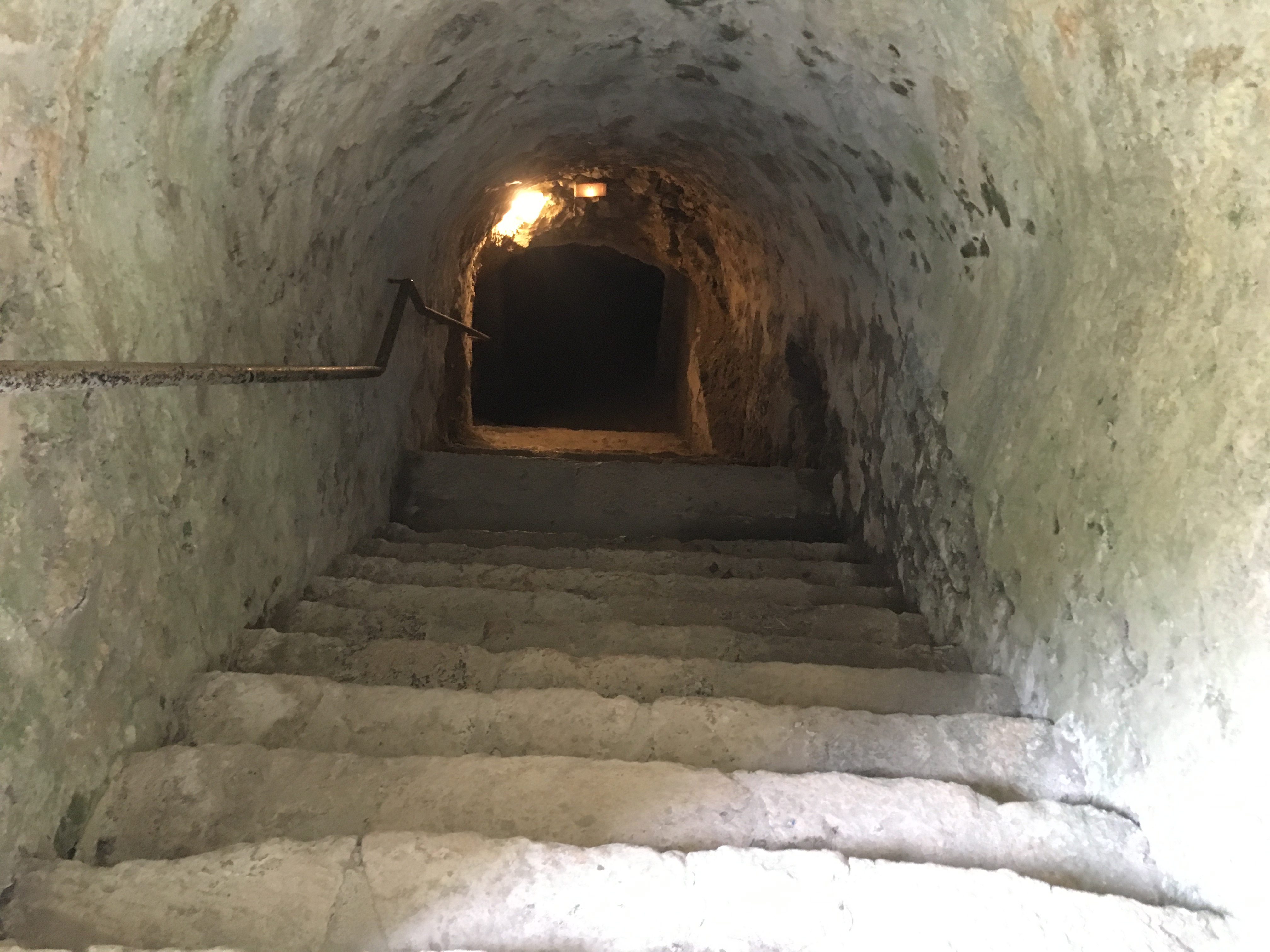
VIP tour into the secret underground passages
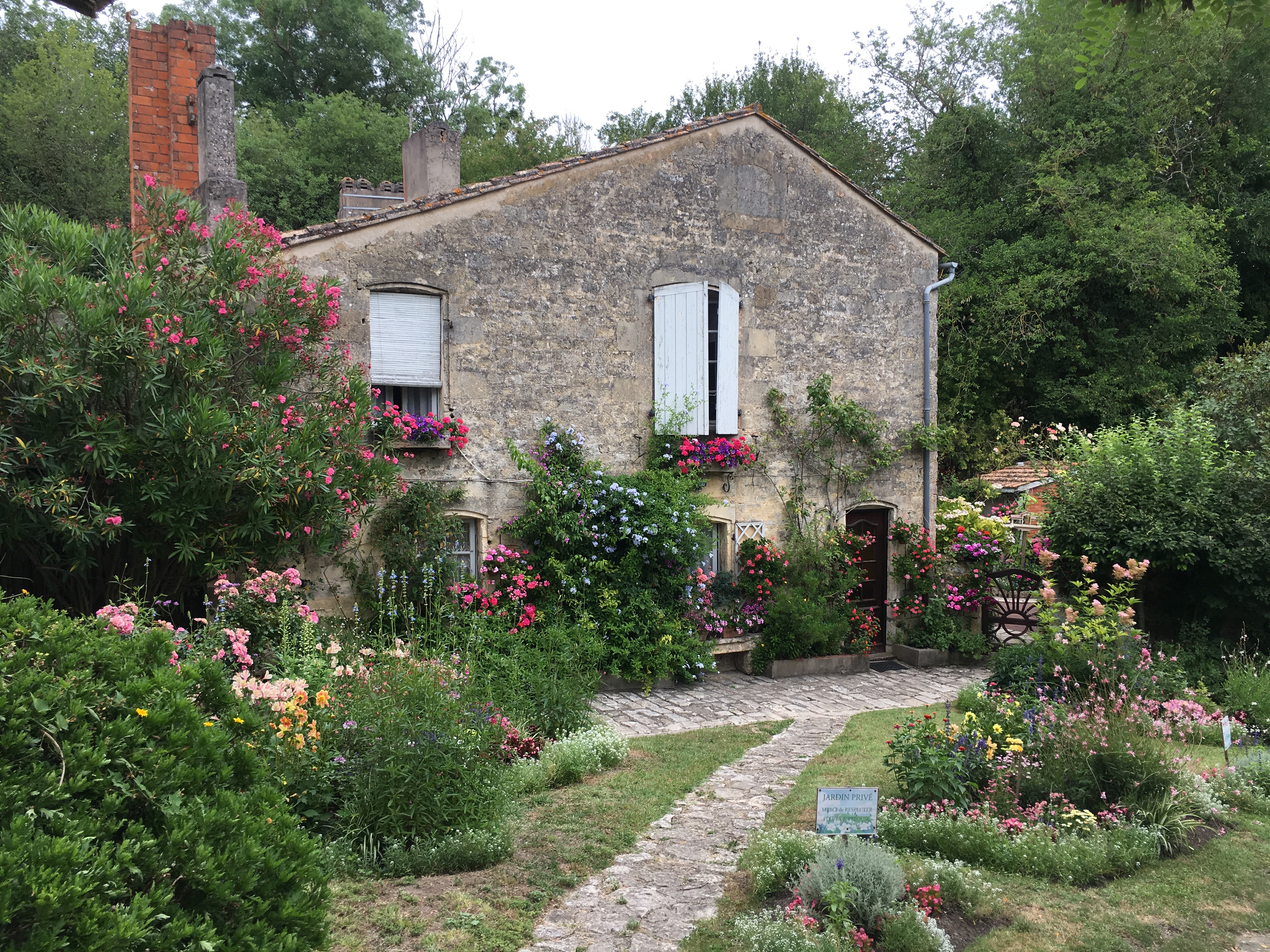
Private garden of residents
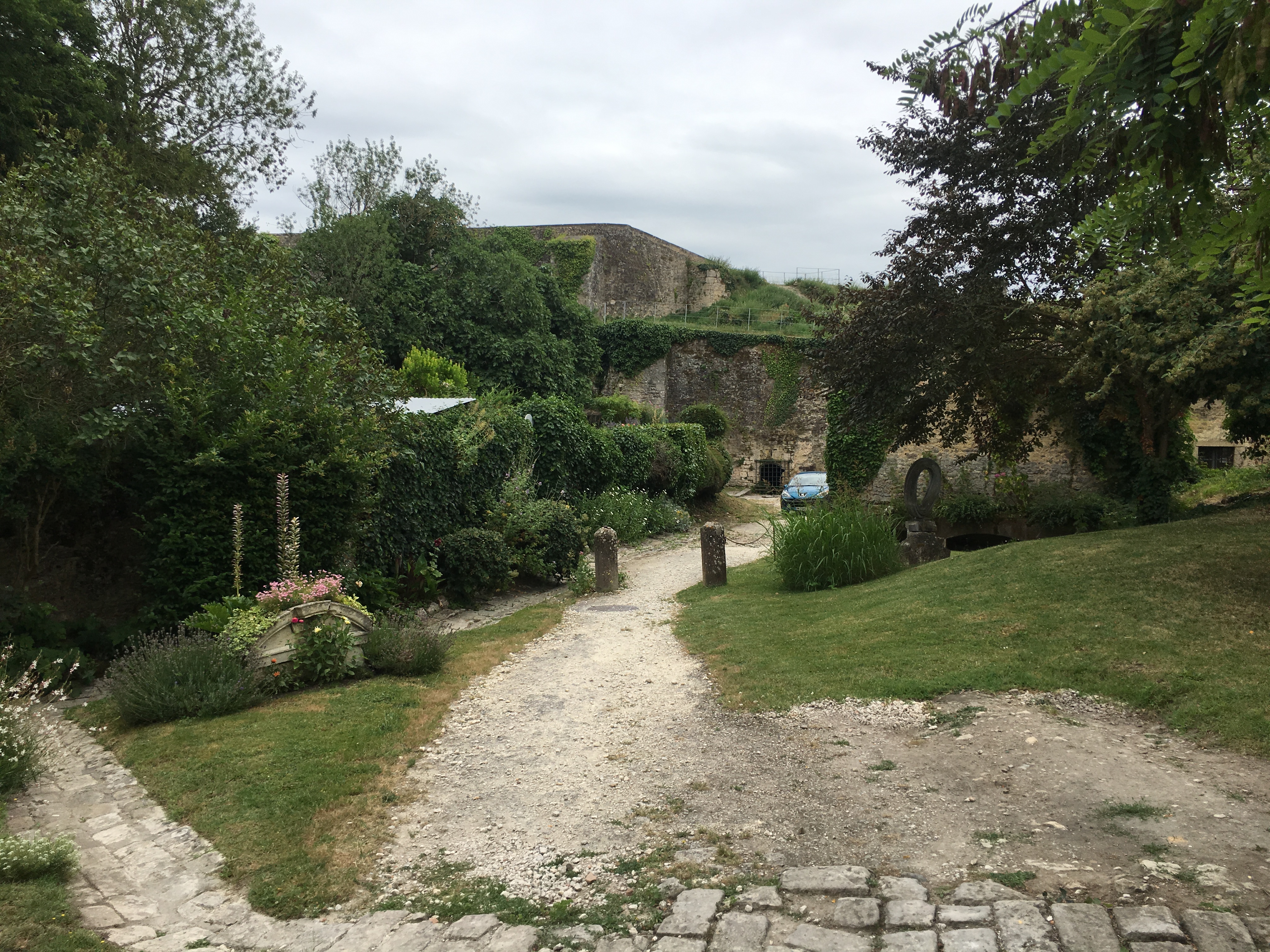
Citadel gardens
Next day is “Lamb day” in Pauillac. This turns out to be a street market with tables where you can have lamb and other food. As I skipped breakfast, I start with some boiled escargots that tasted delicious. There are geese walking around and people are enjoying this hot Sunday afternoon. I spend it with my German “neighbours” – Martin and Ariane – who are on a half-year trip with their classic ship built in 1907. They have went through the canals down to the Mediterranean, through Canal du Midi and are leaving next day to Royan to continue north. We have a nice afternoon, go to the cooperative for a tasting and some purchase and then we spend the evening at the La Salamandre seafood restaurant talking on how to enjoy life.
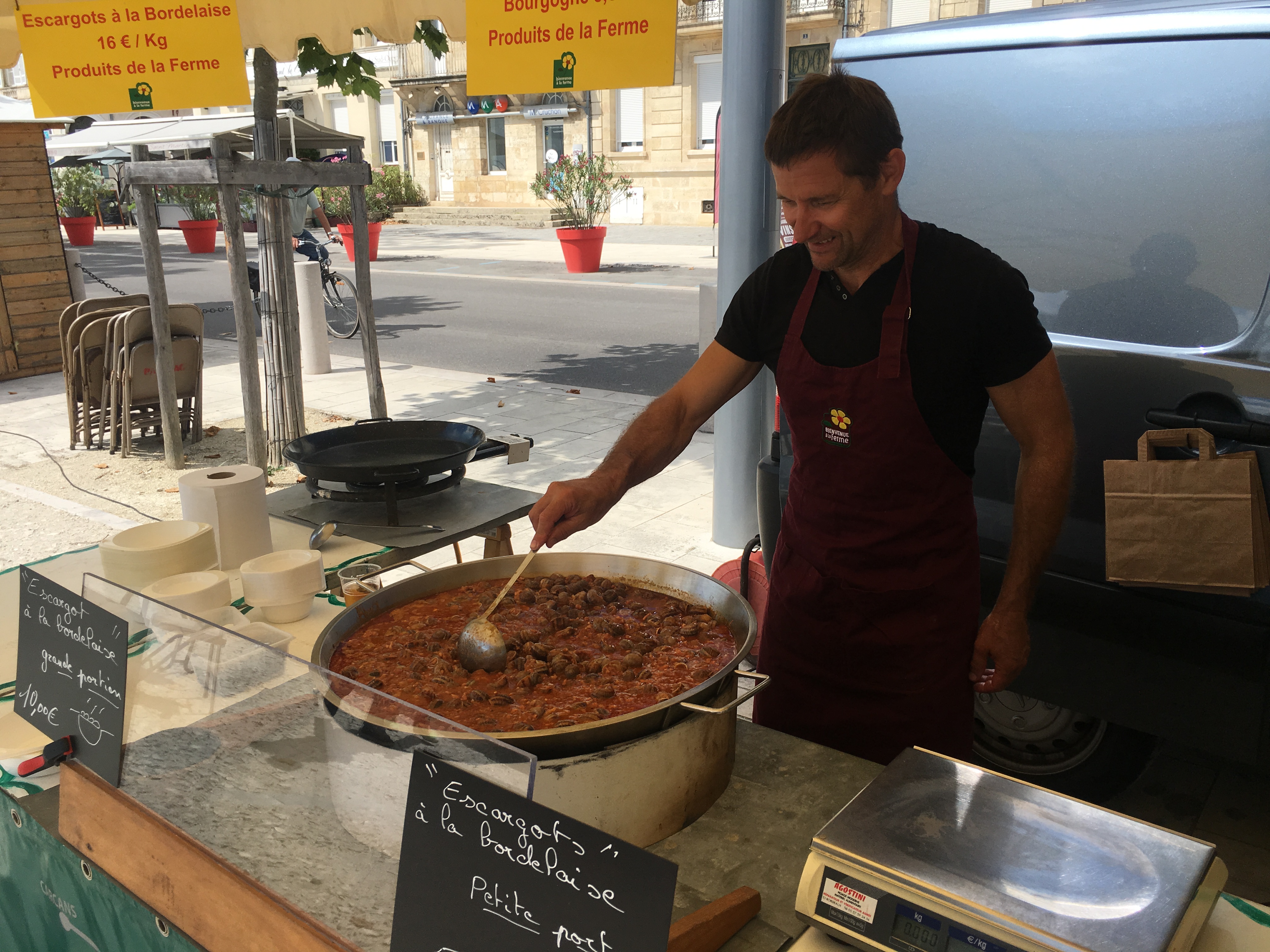
Breakfast escargots coming up
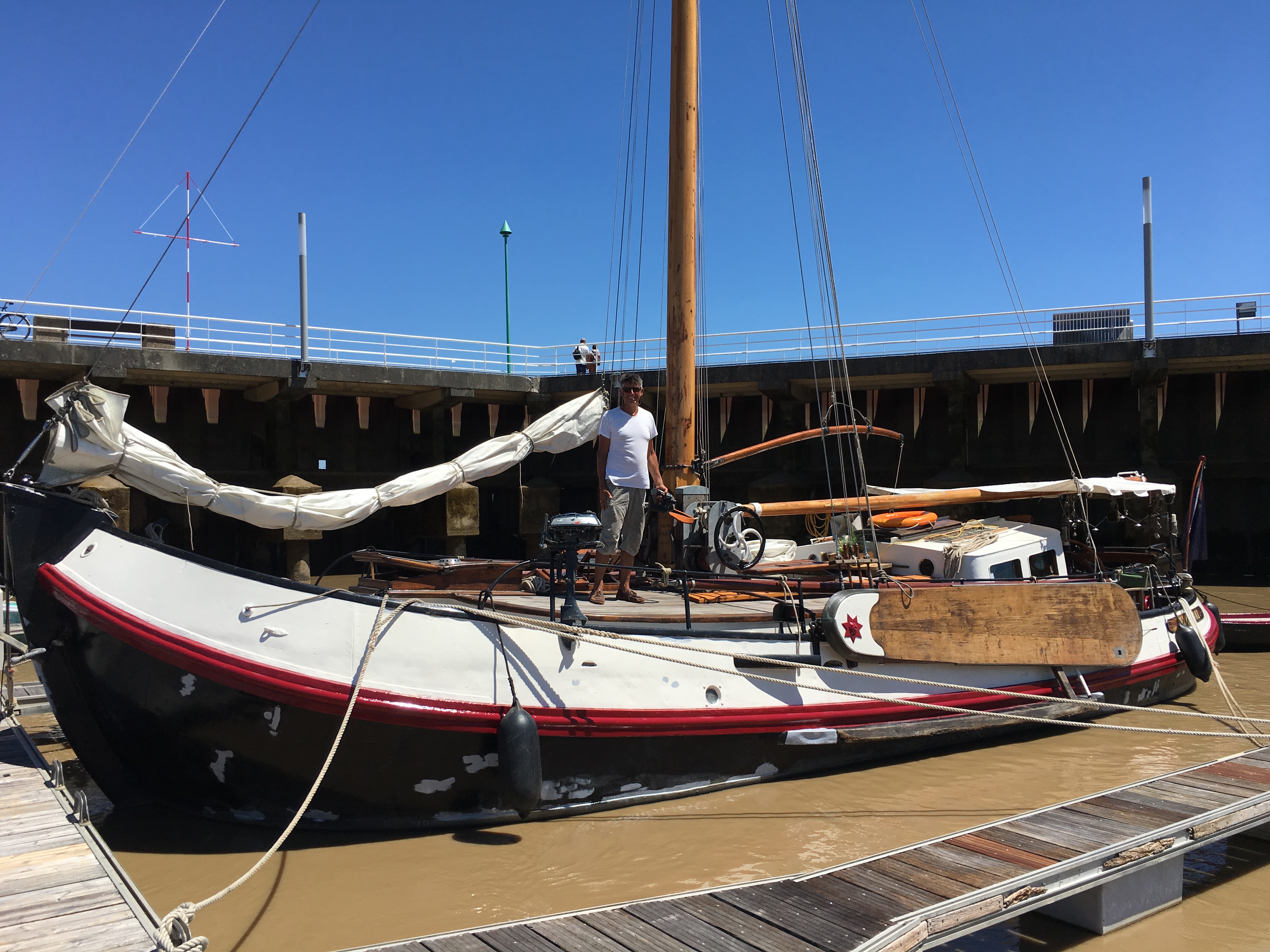
Martin on his ship from 1907
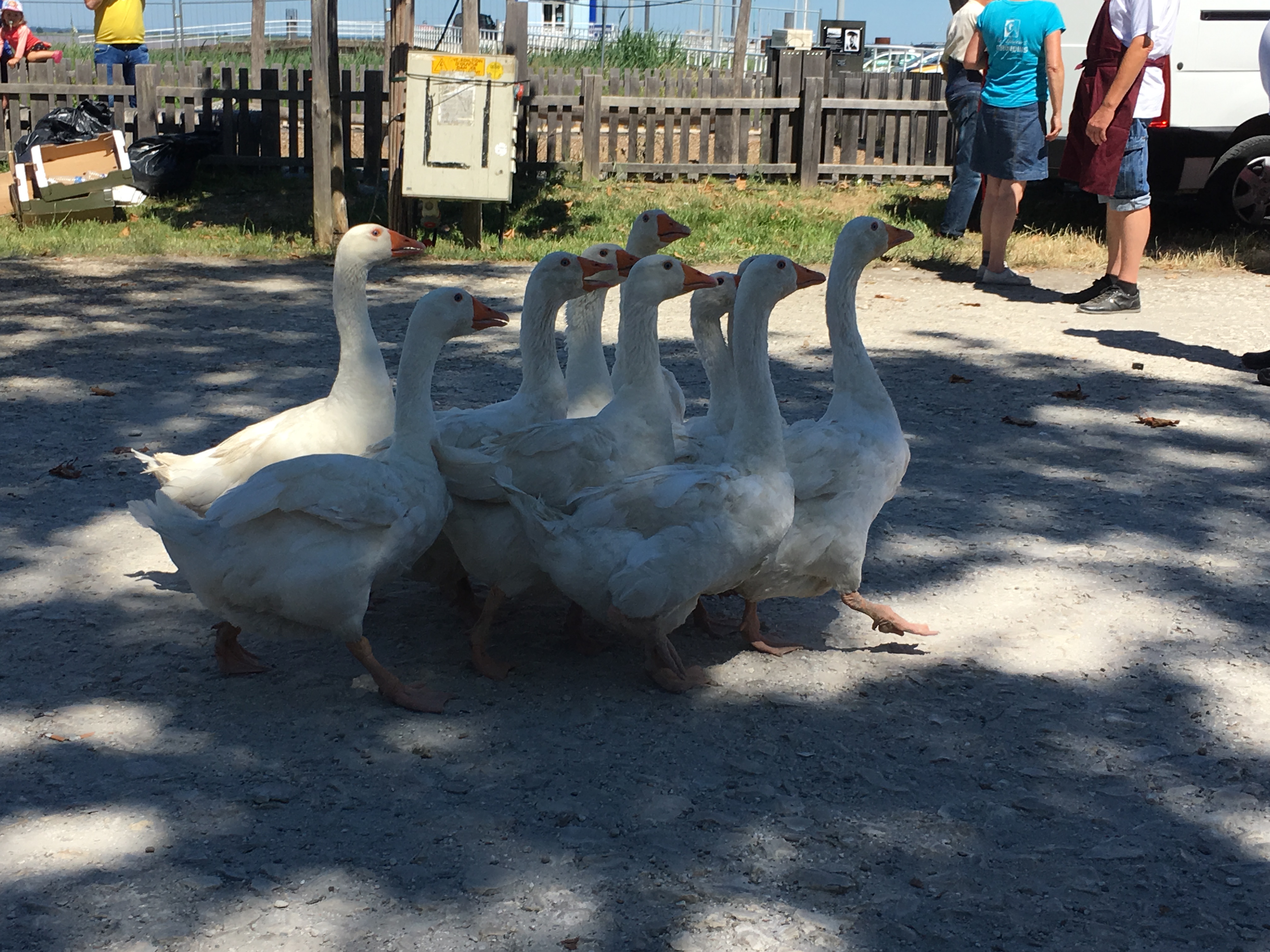
Livestock at the market
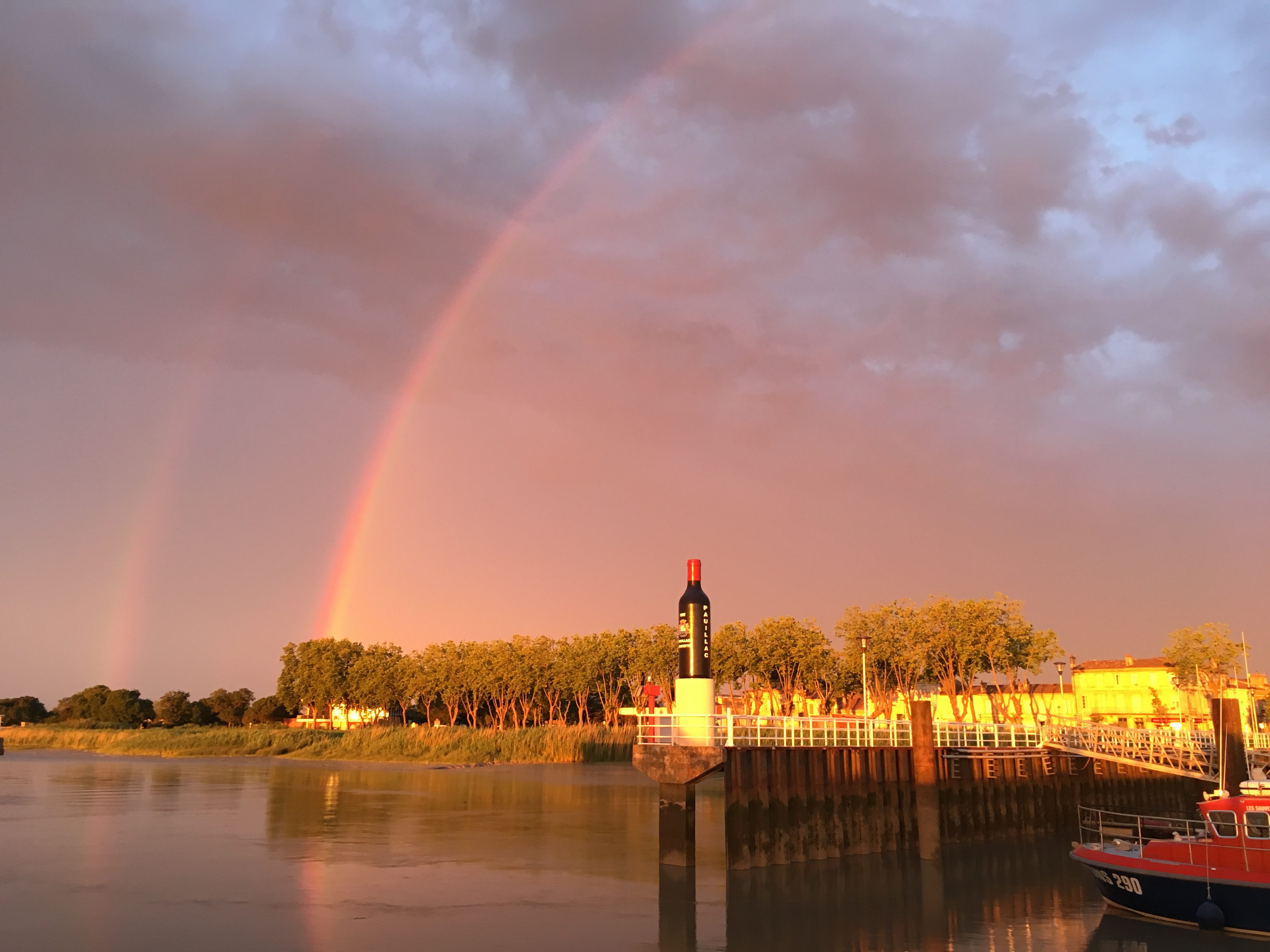
Rainbow over Pauillac
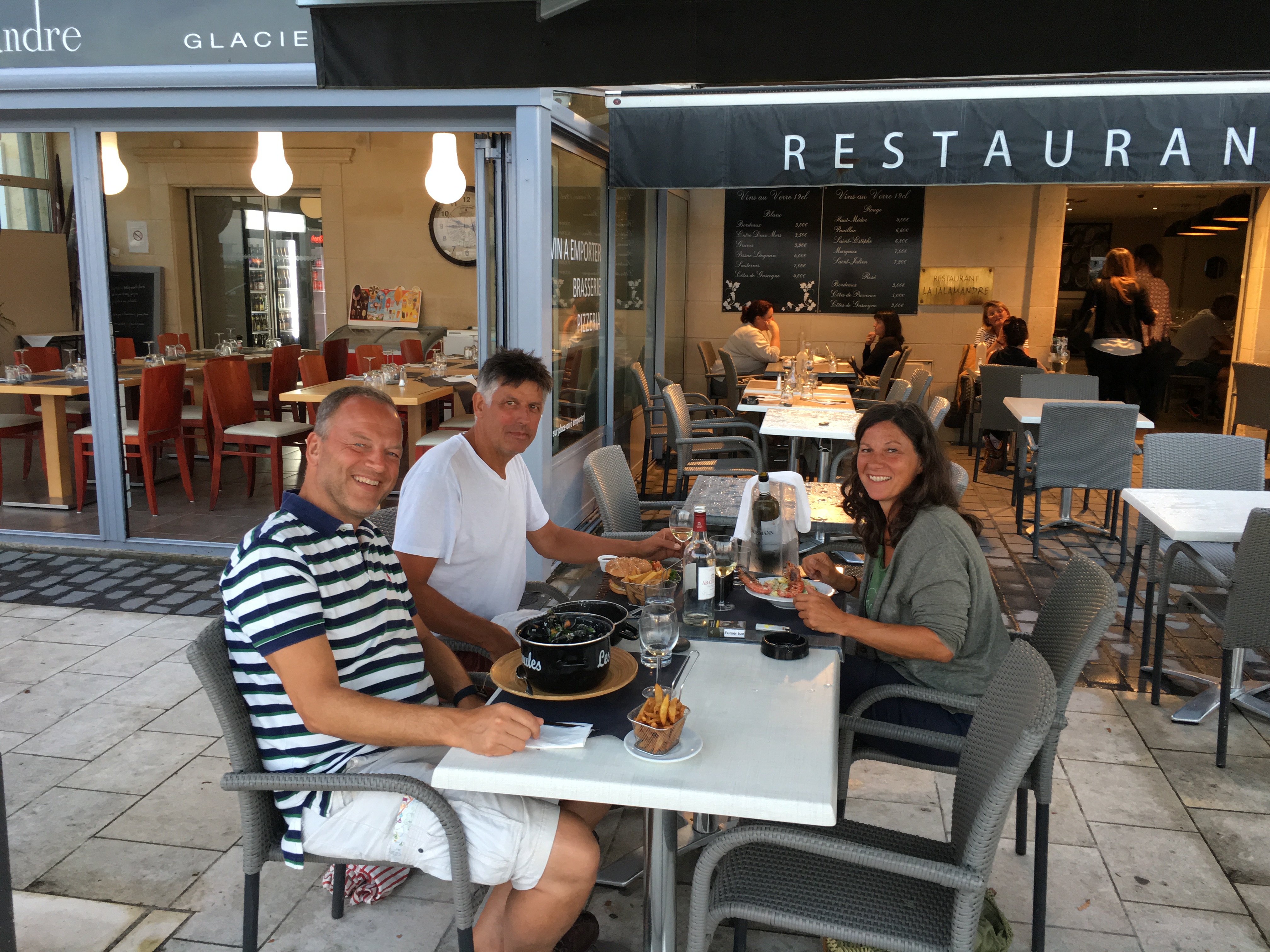
Last evening with Martin and Ariane
